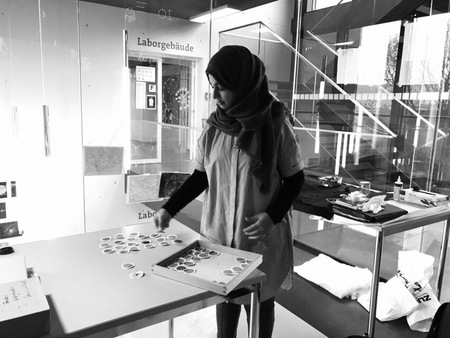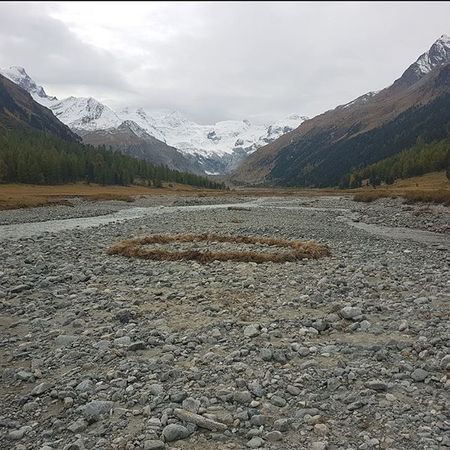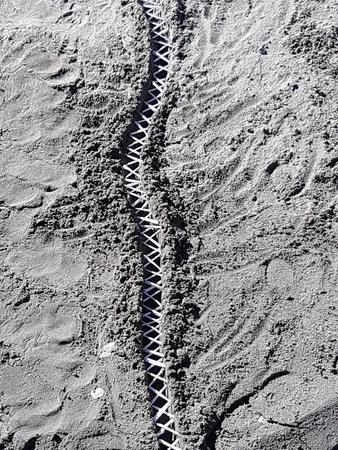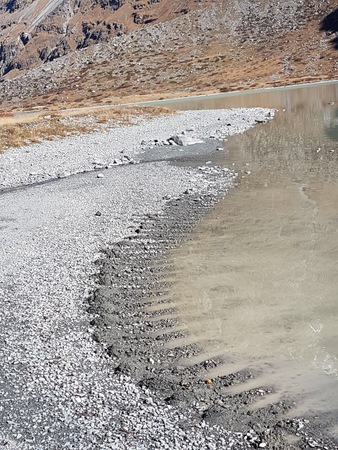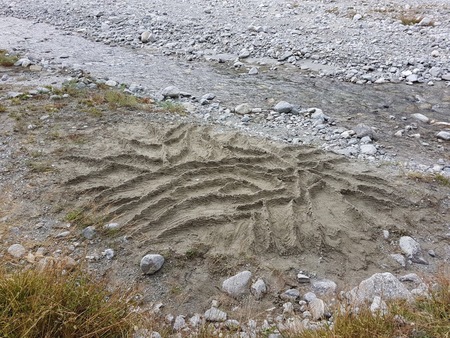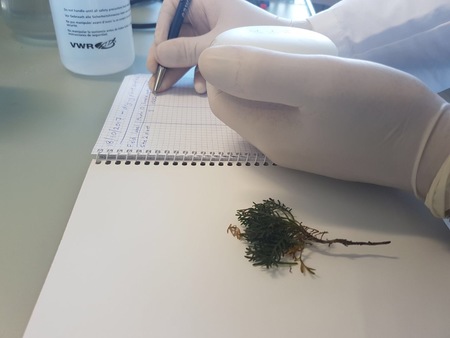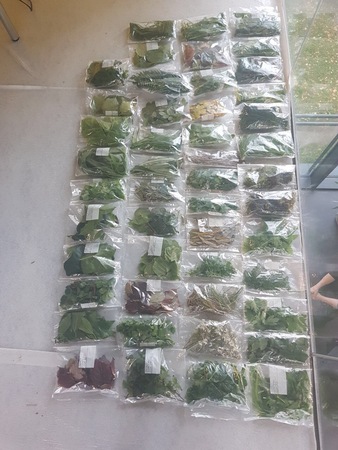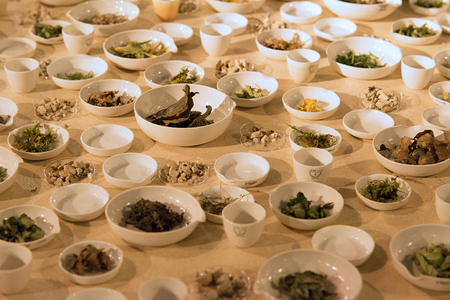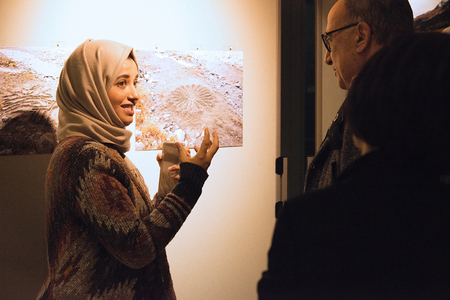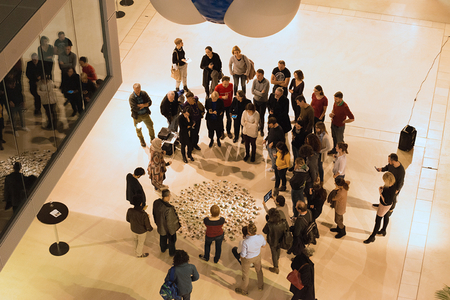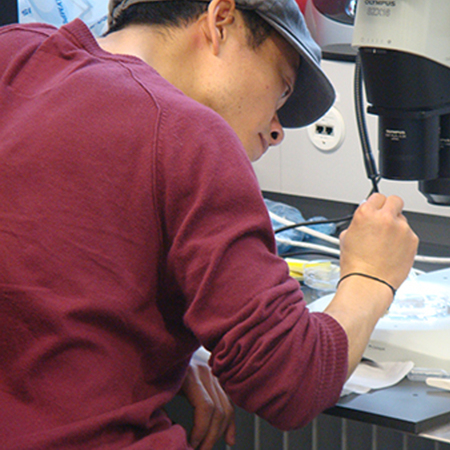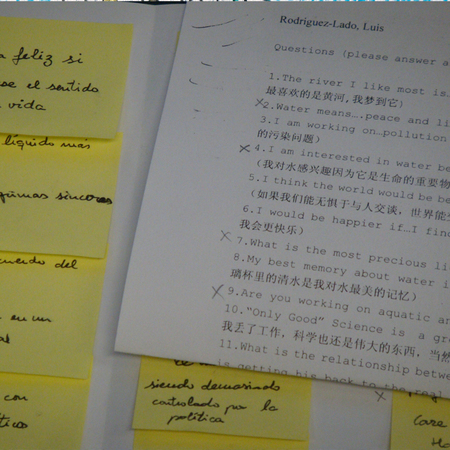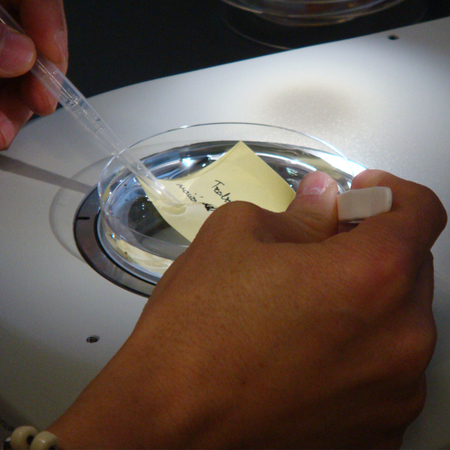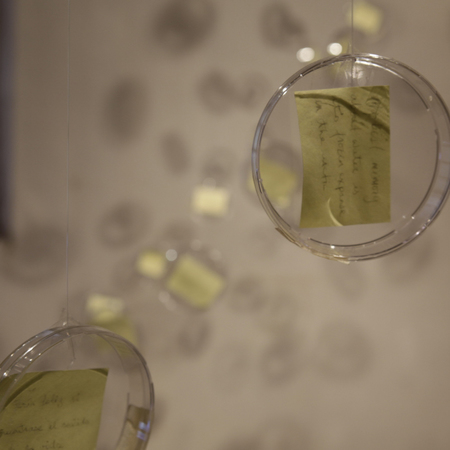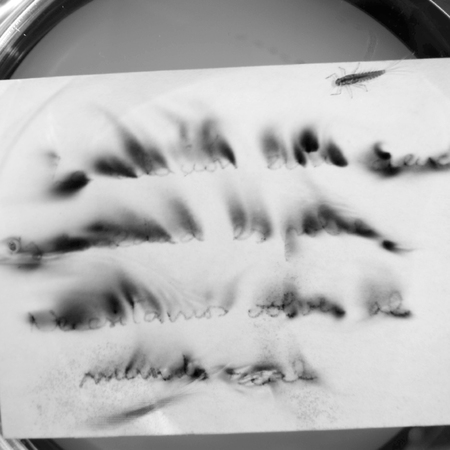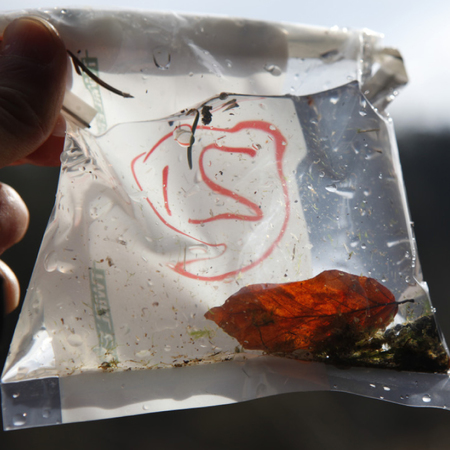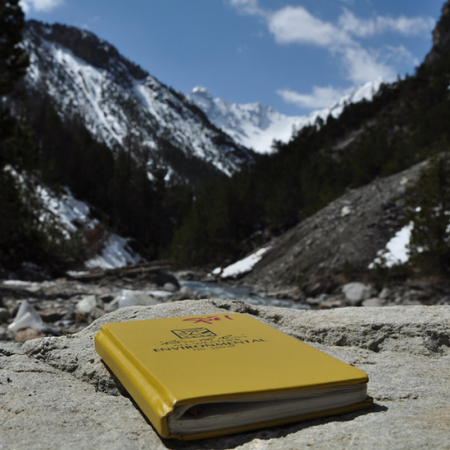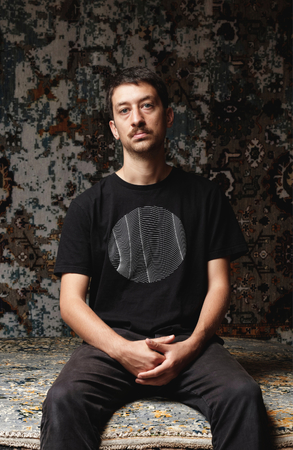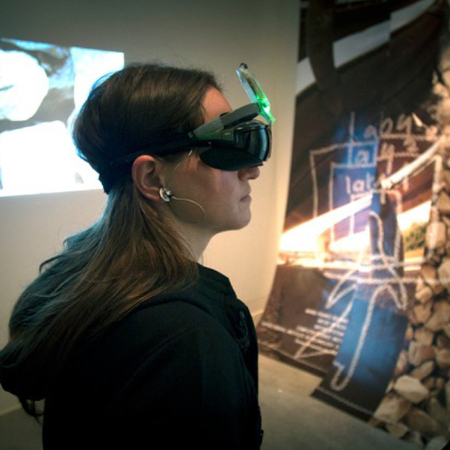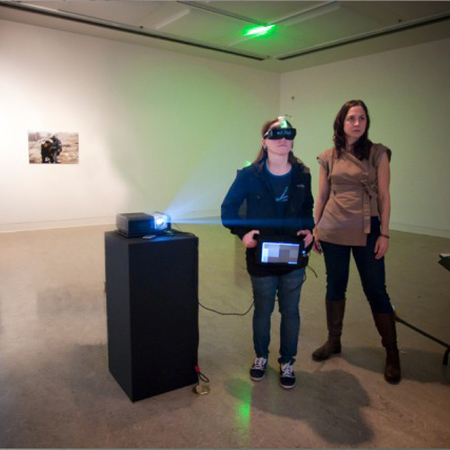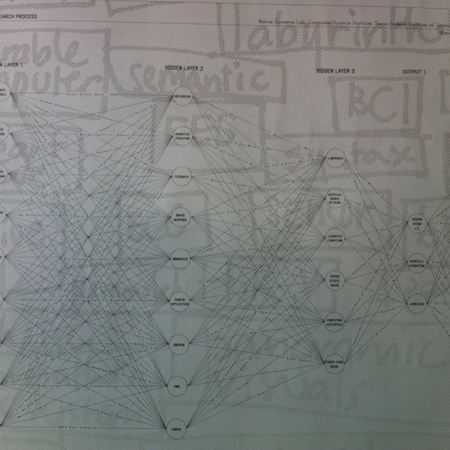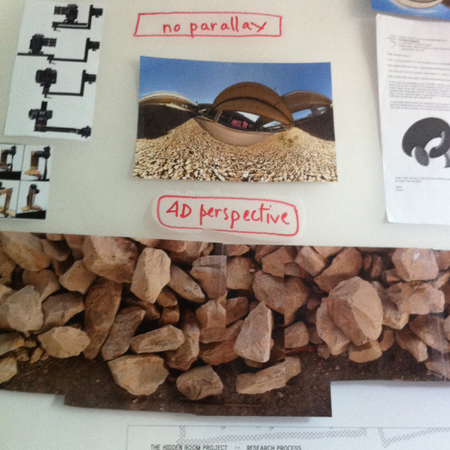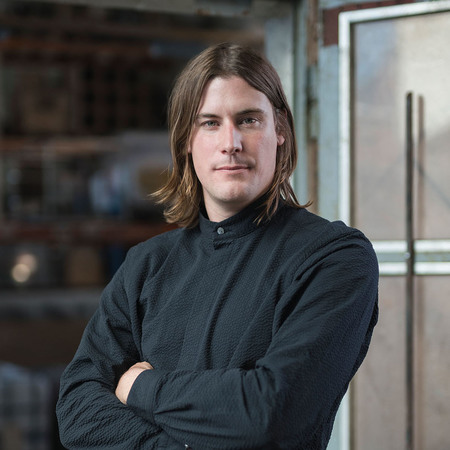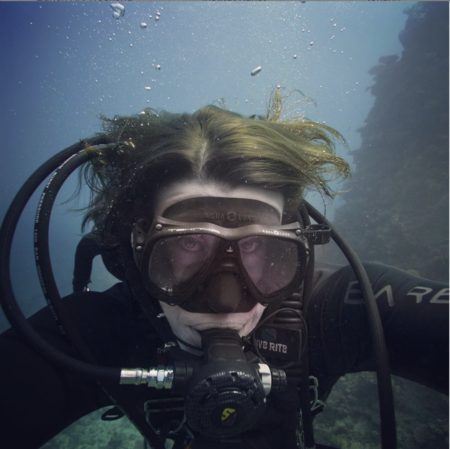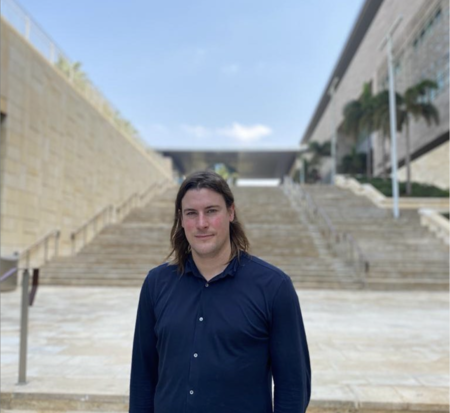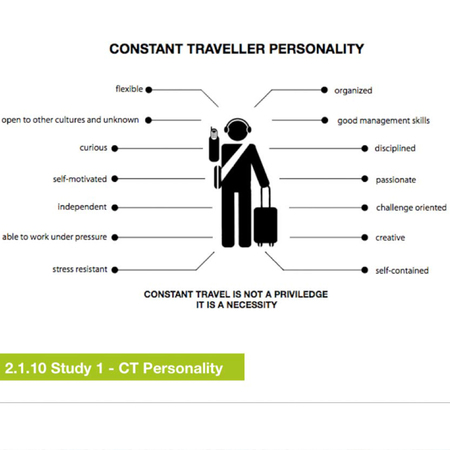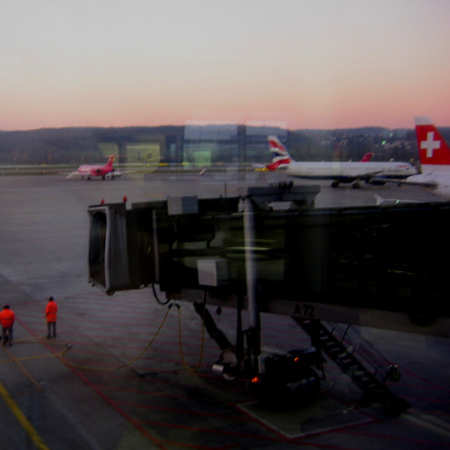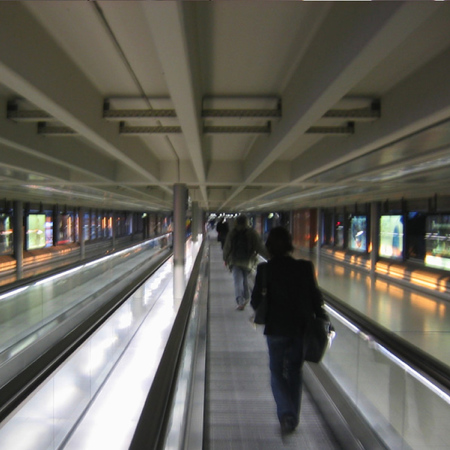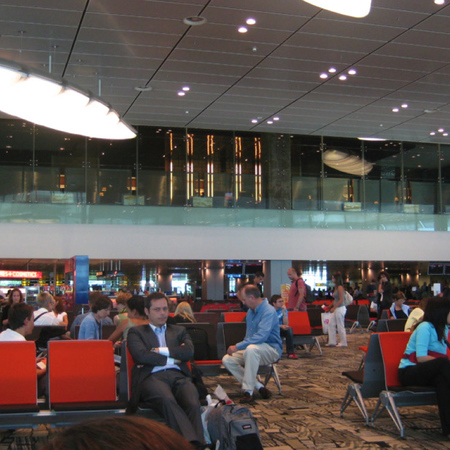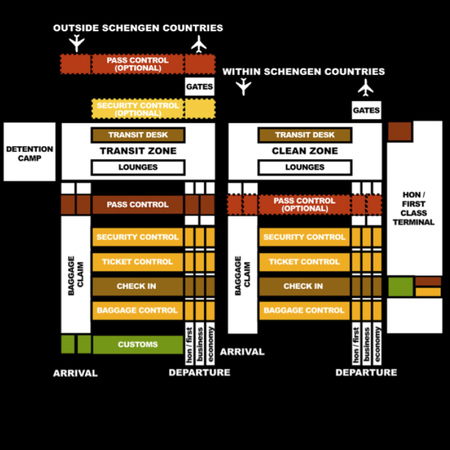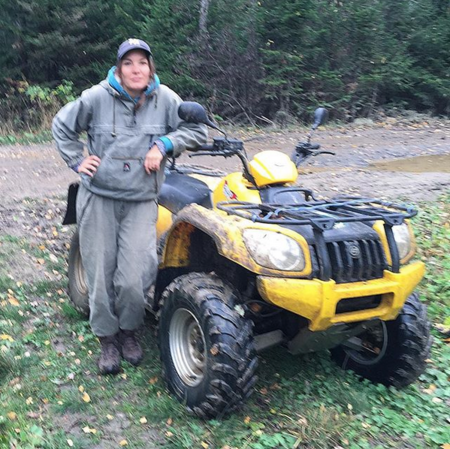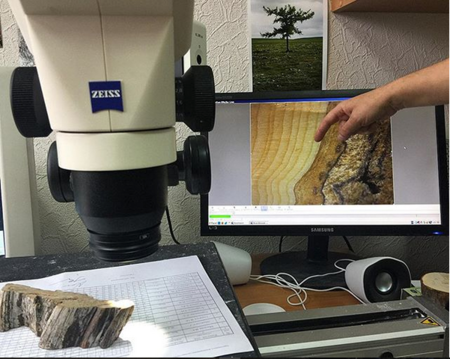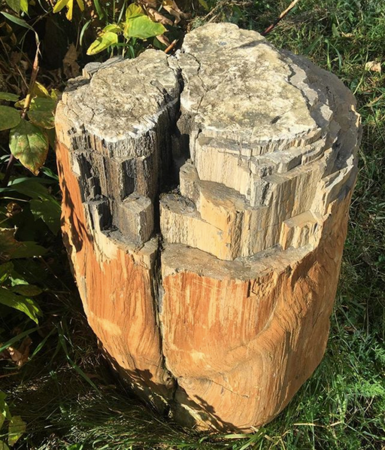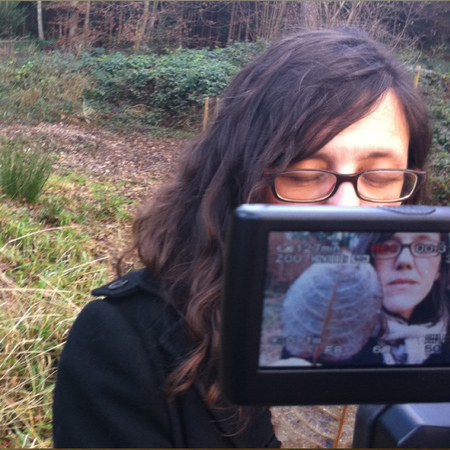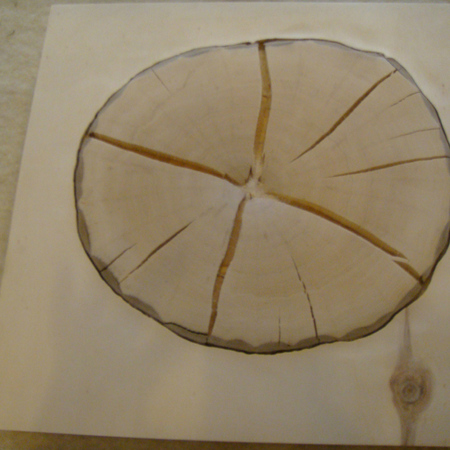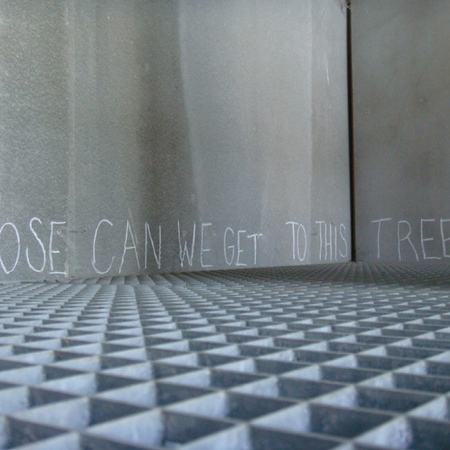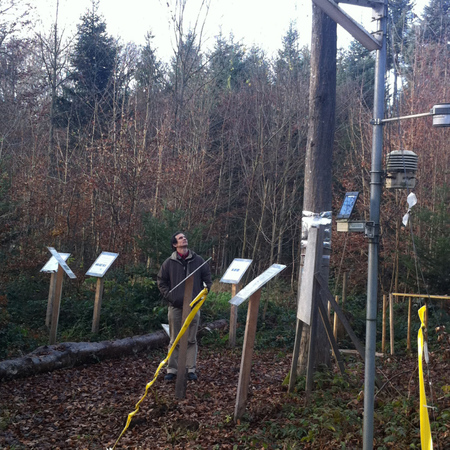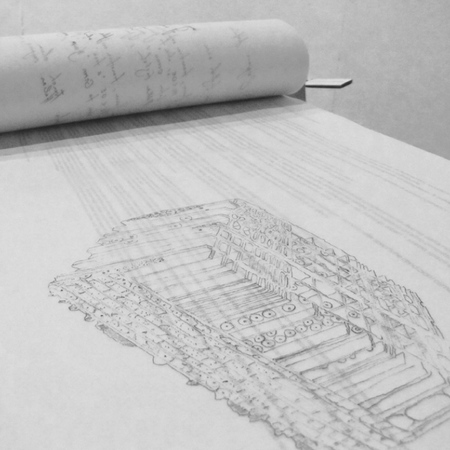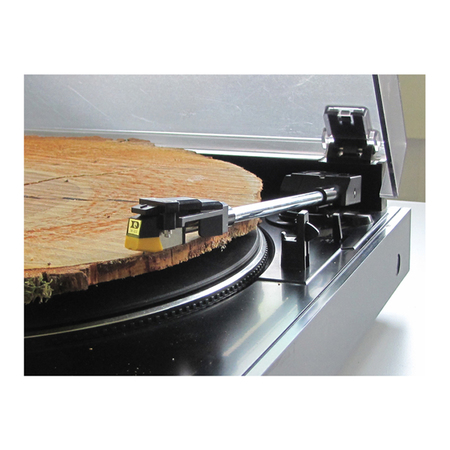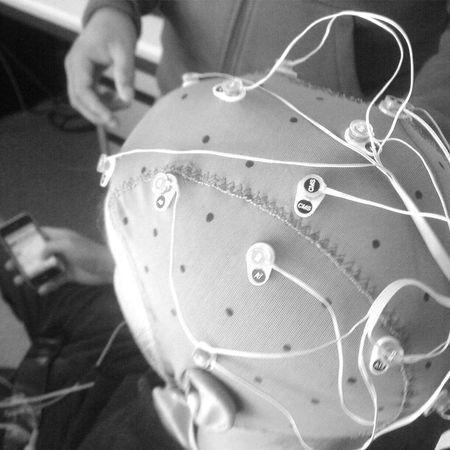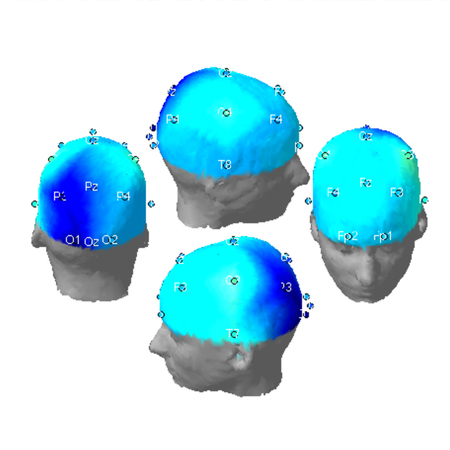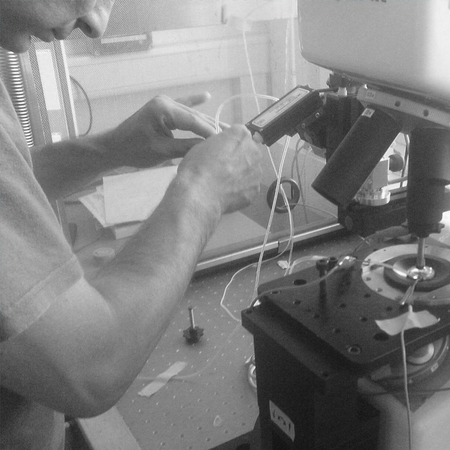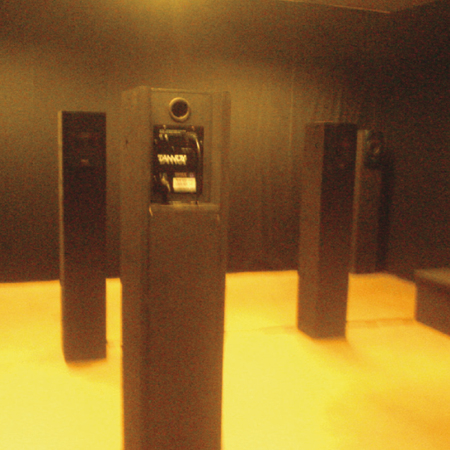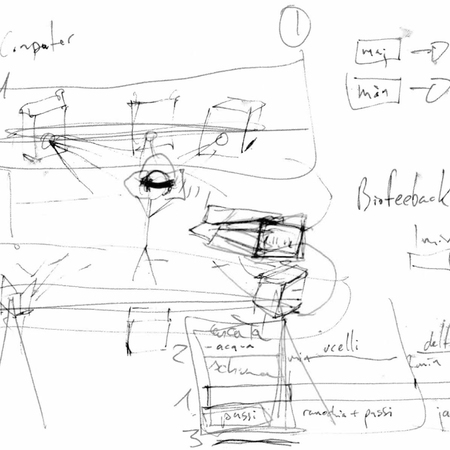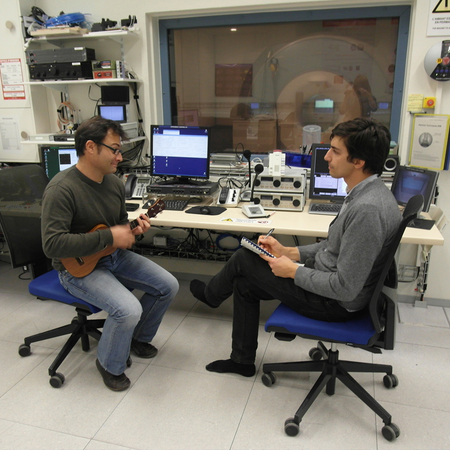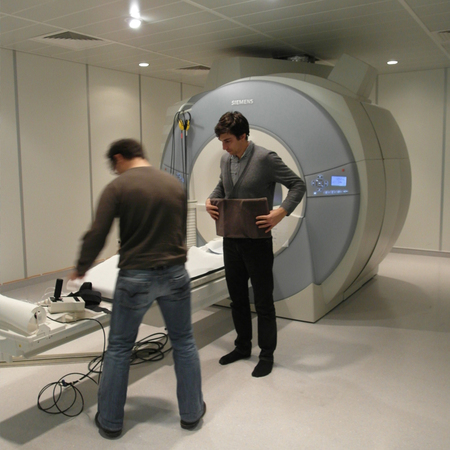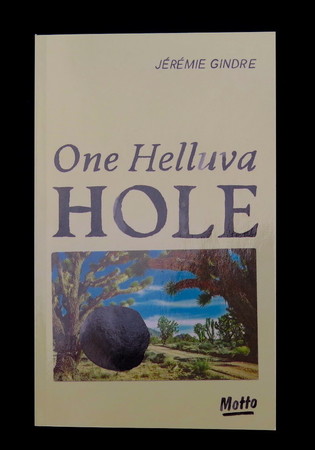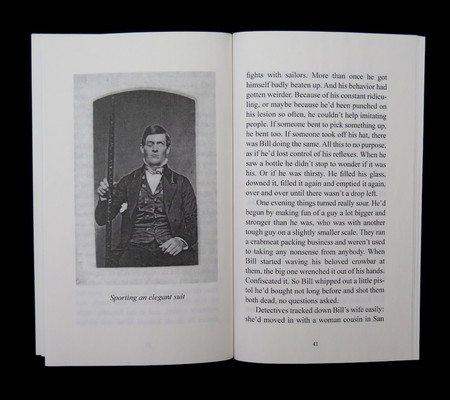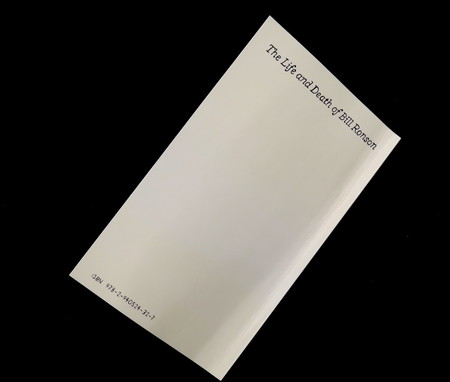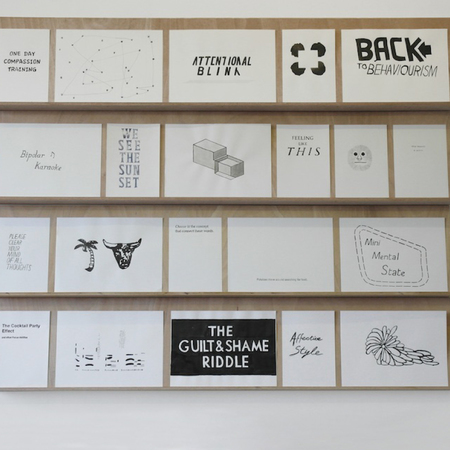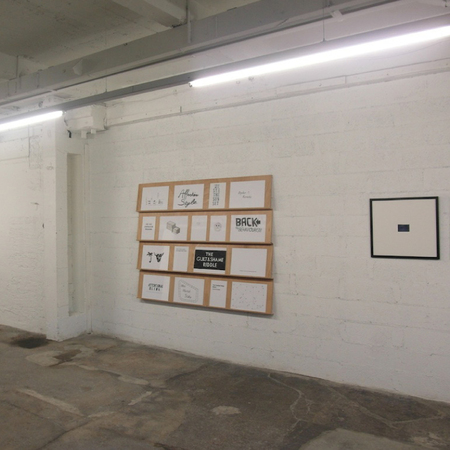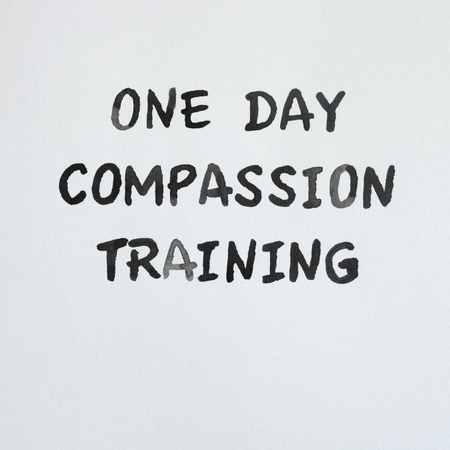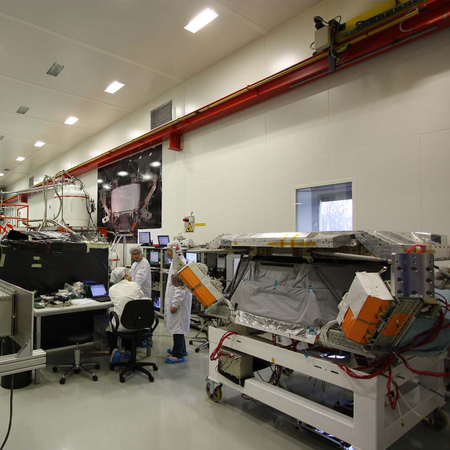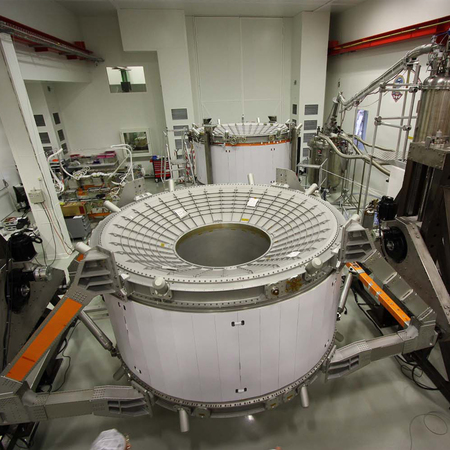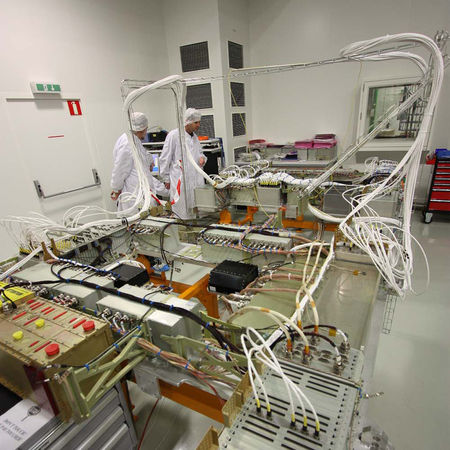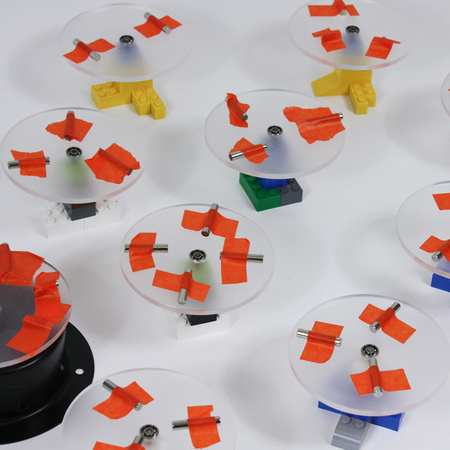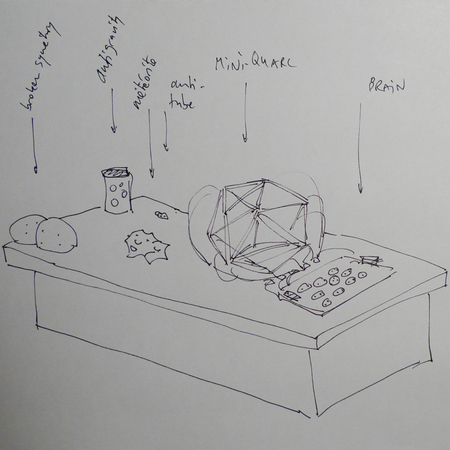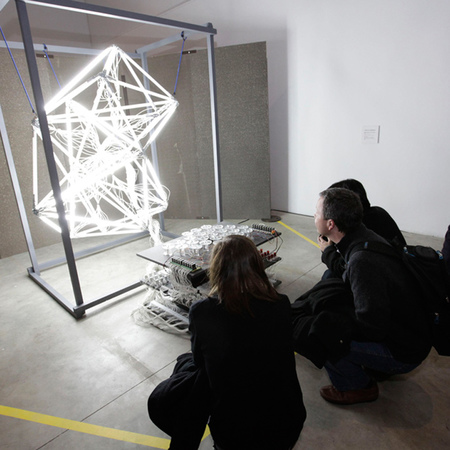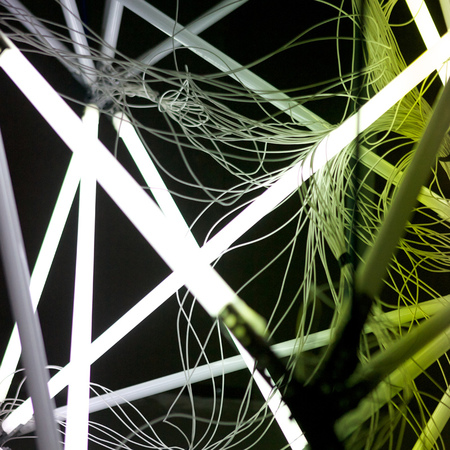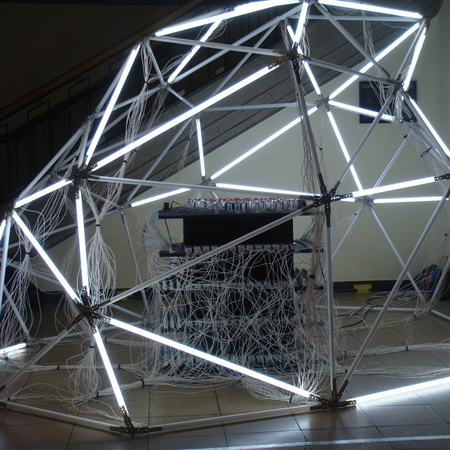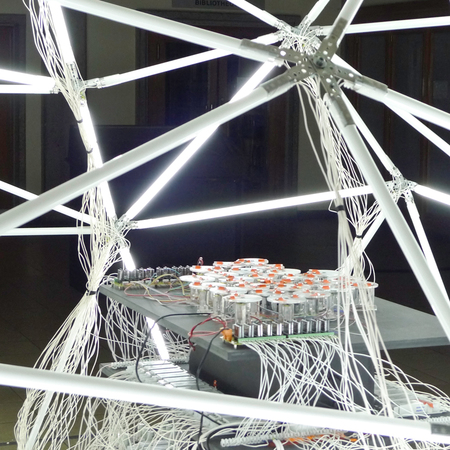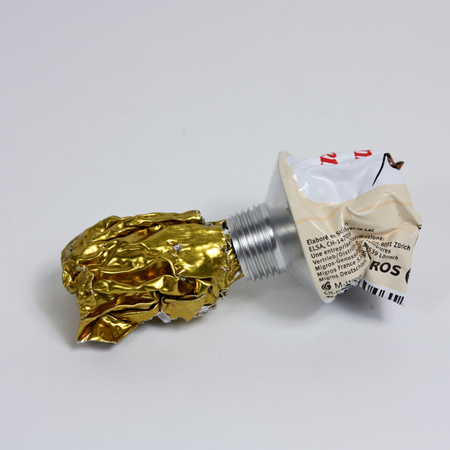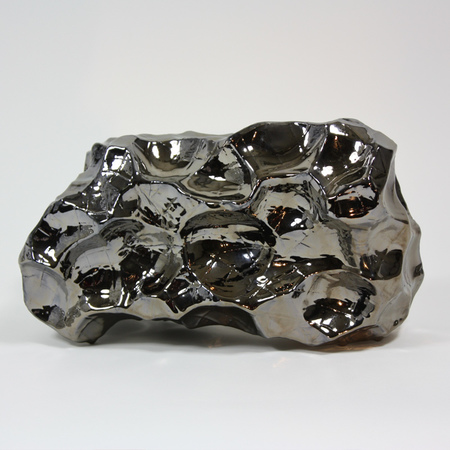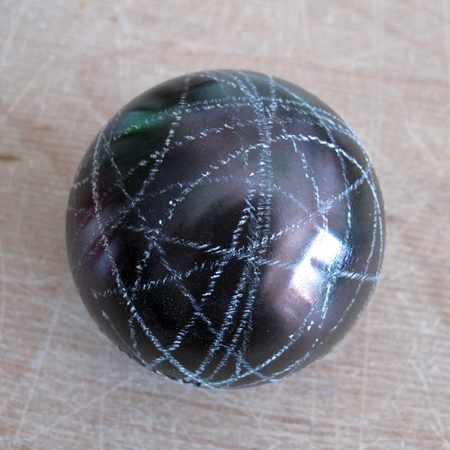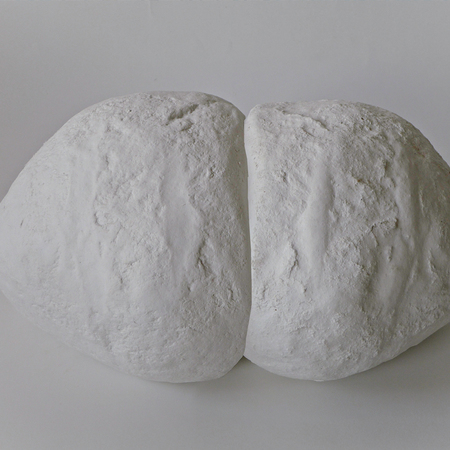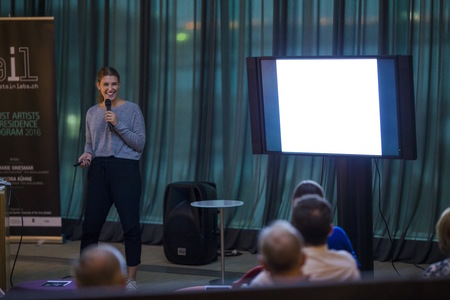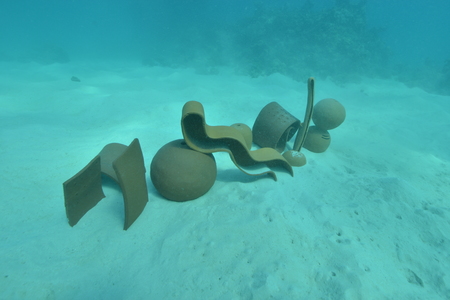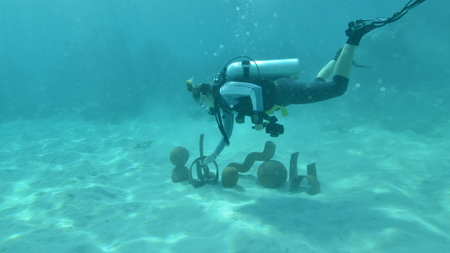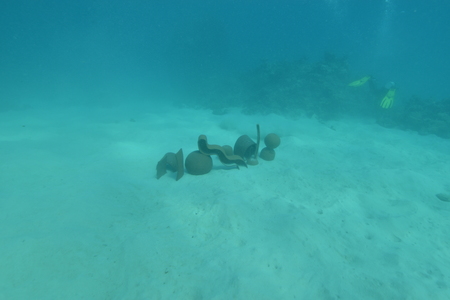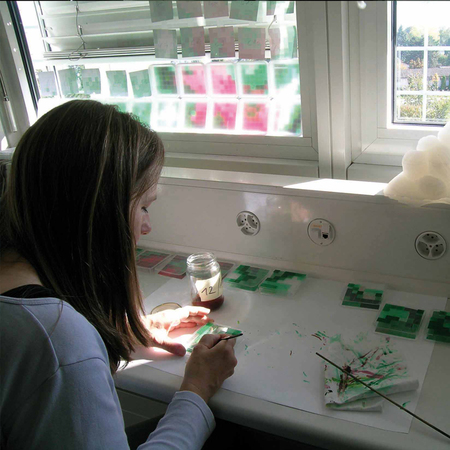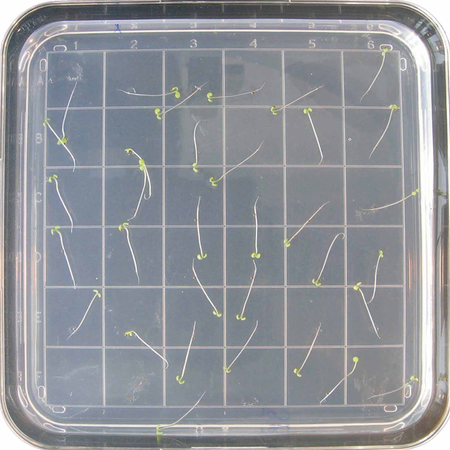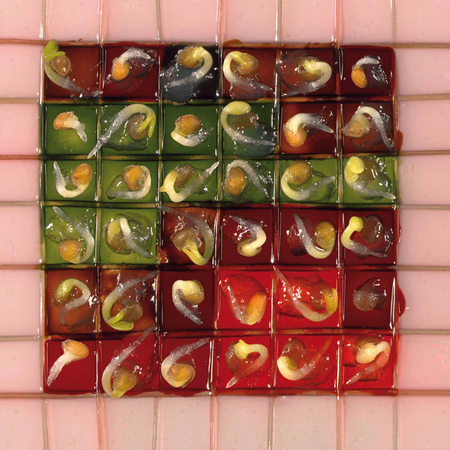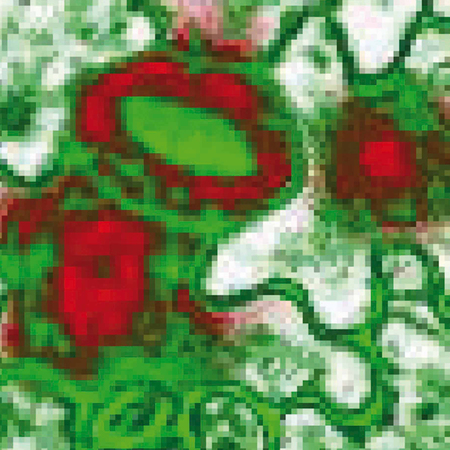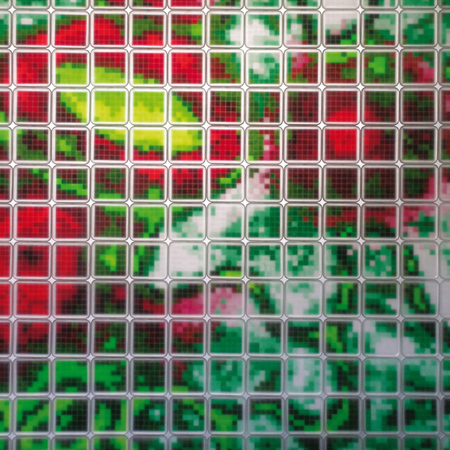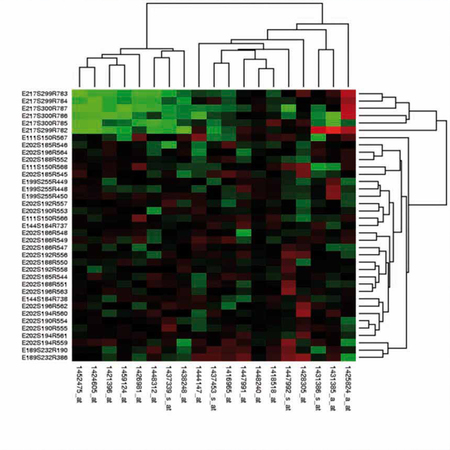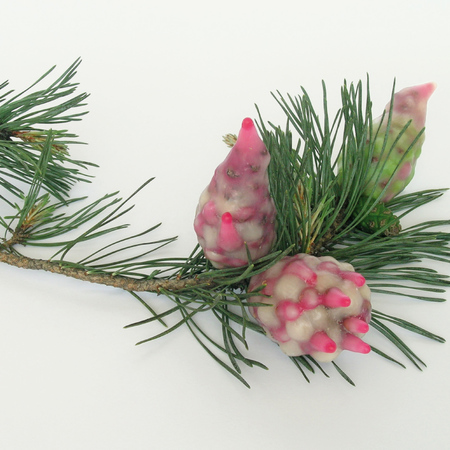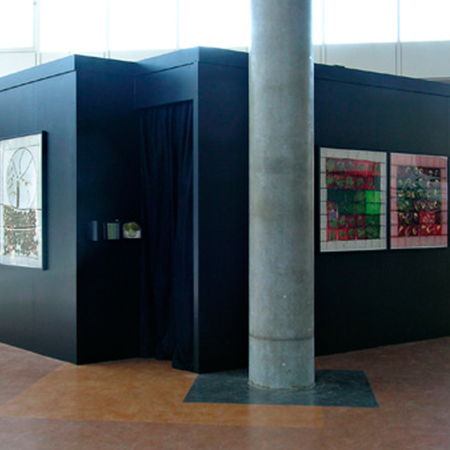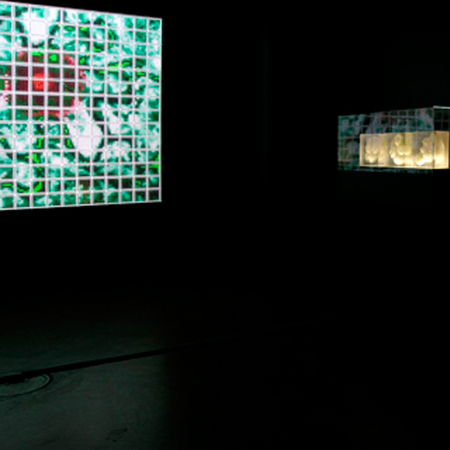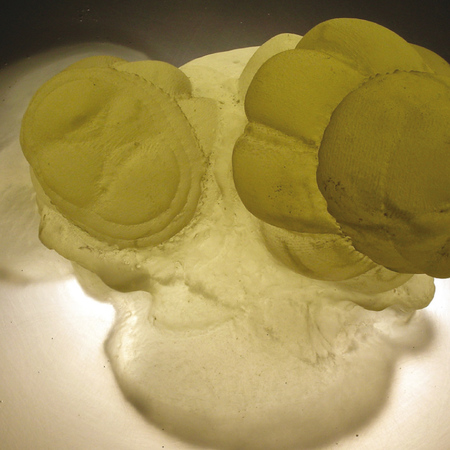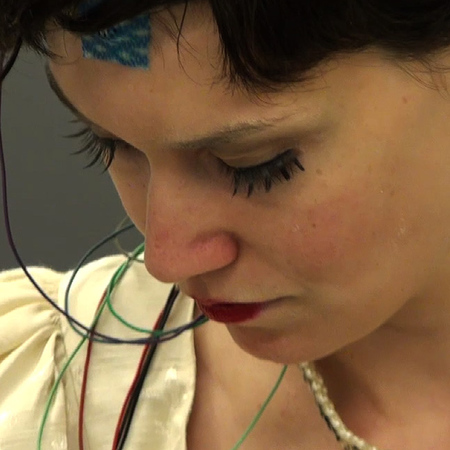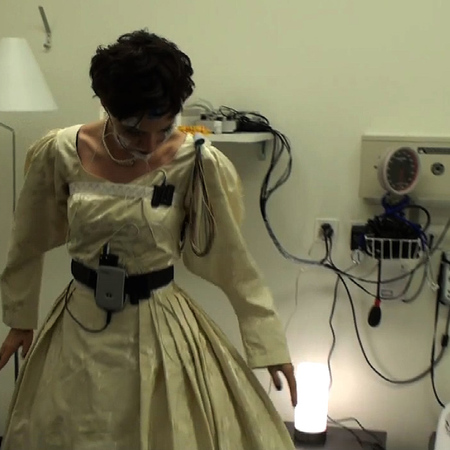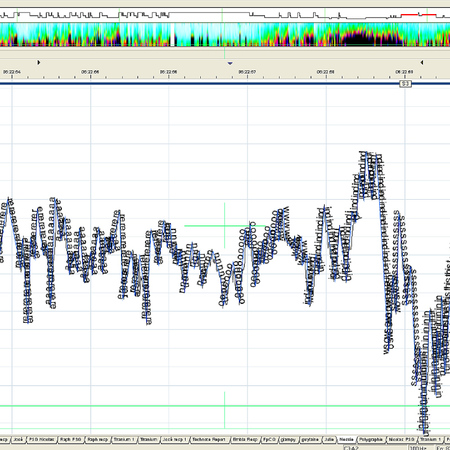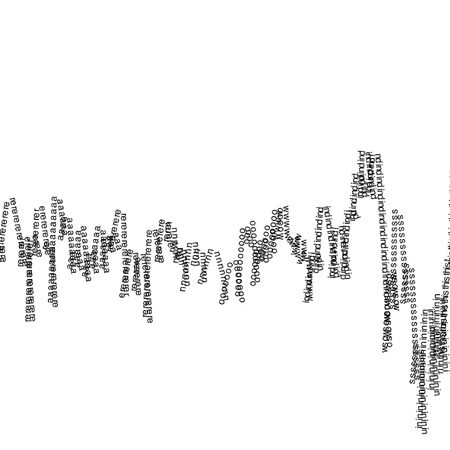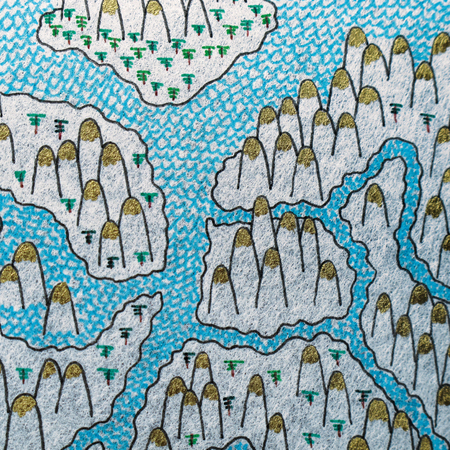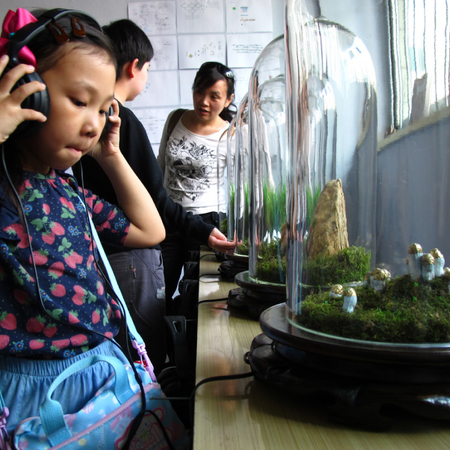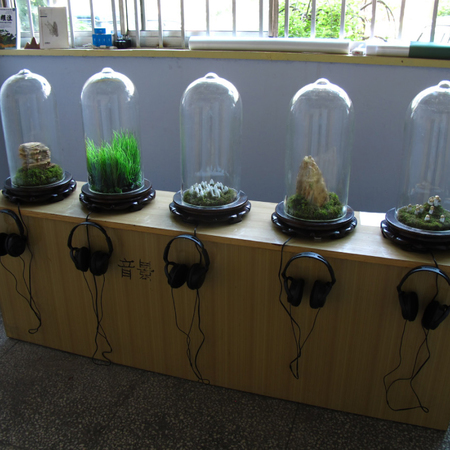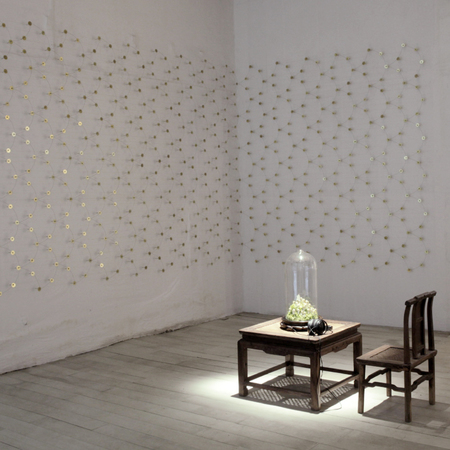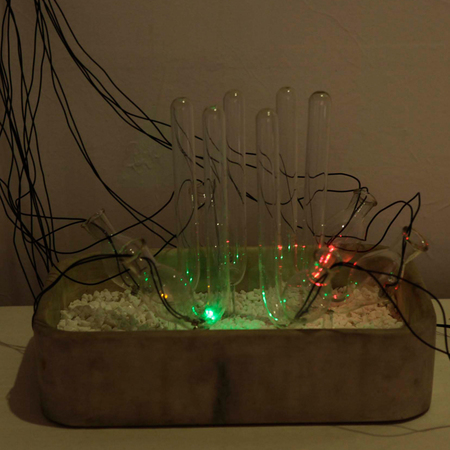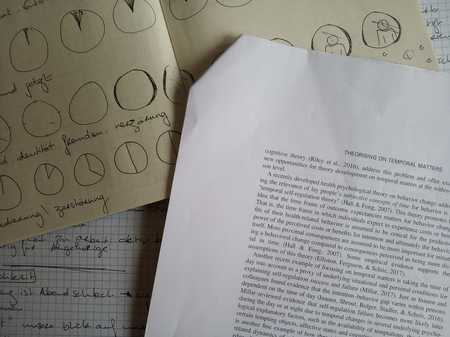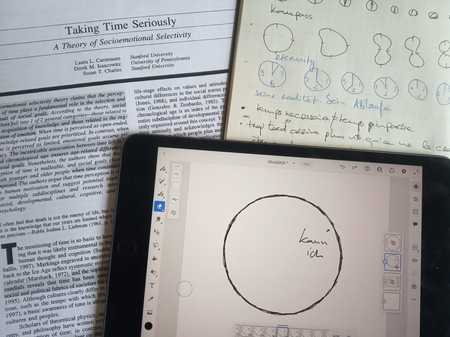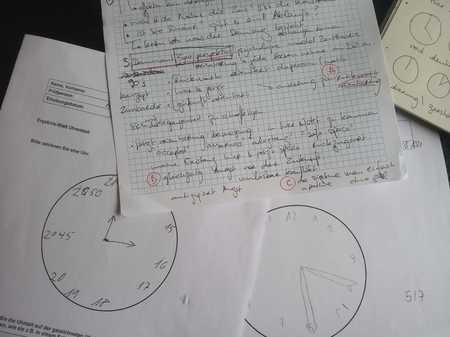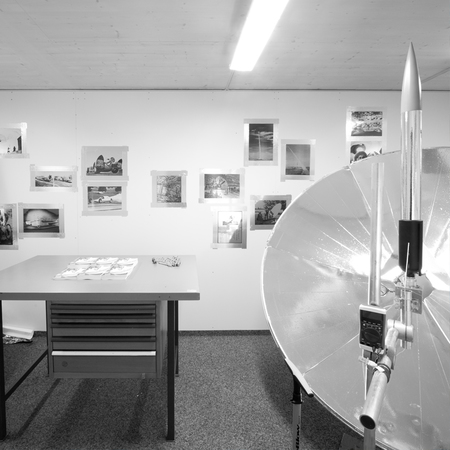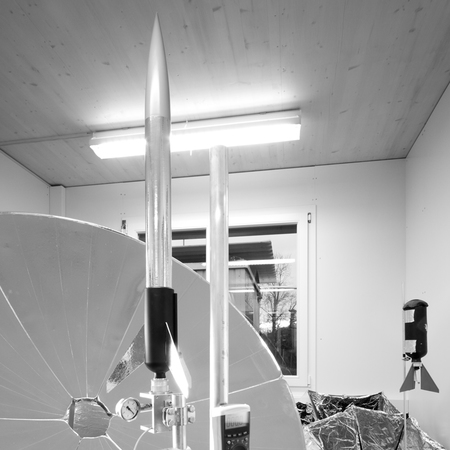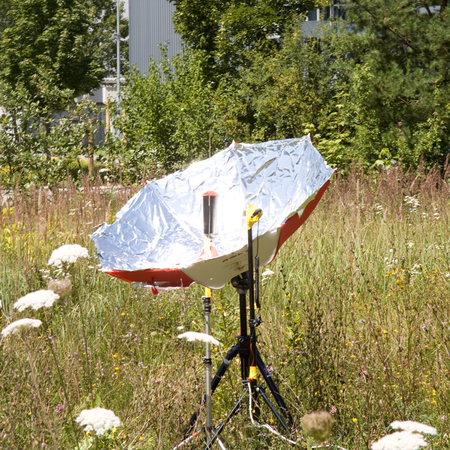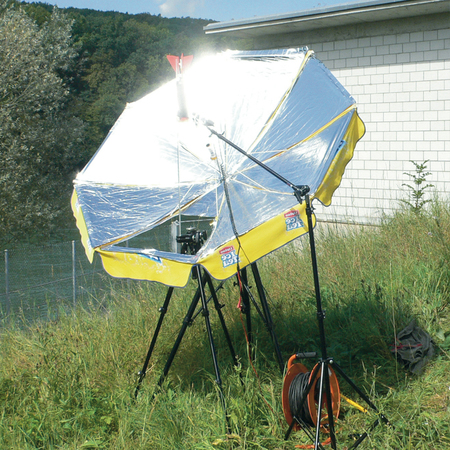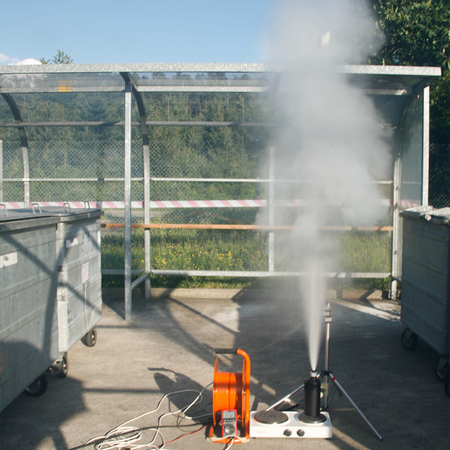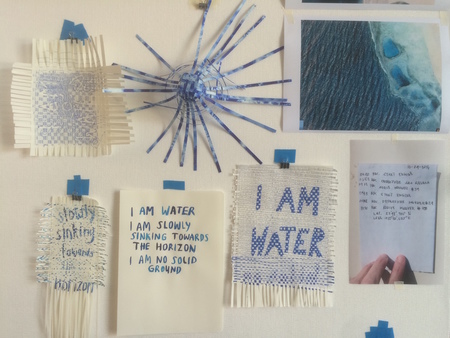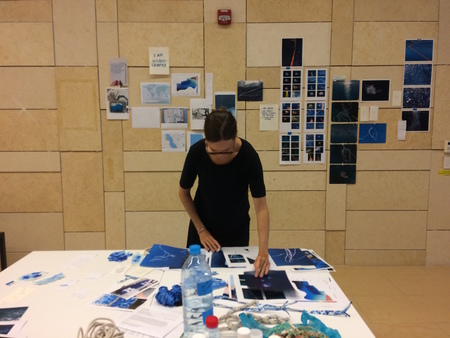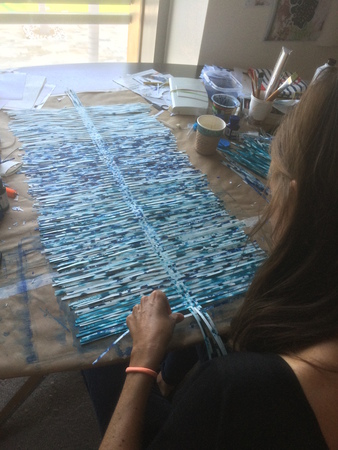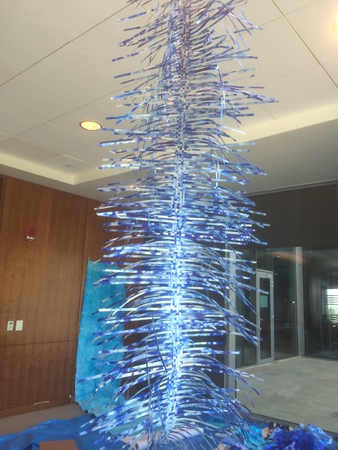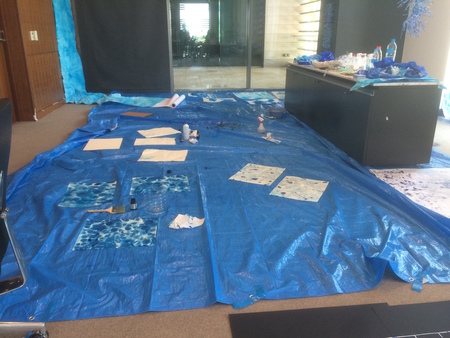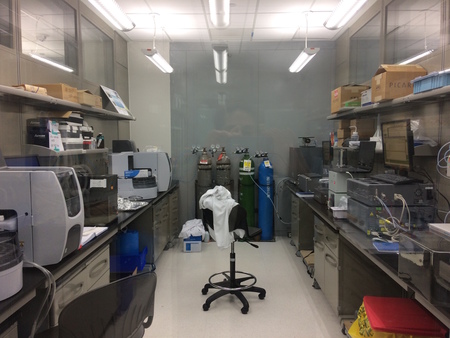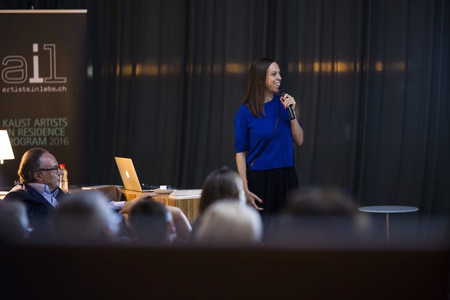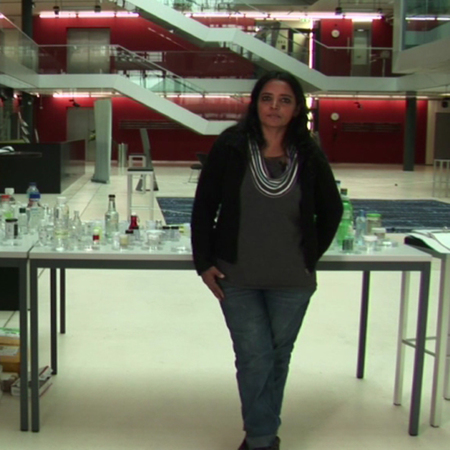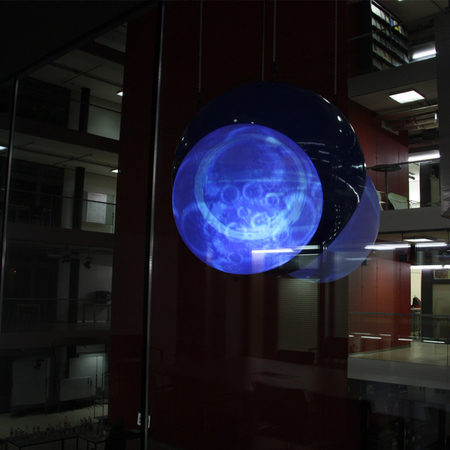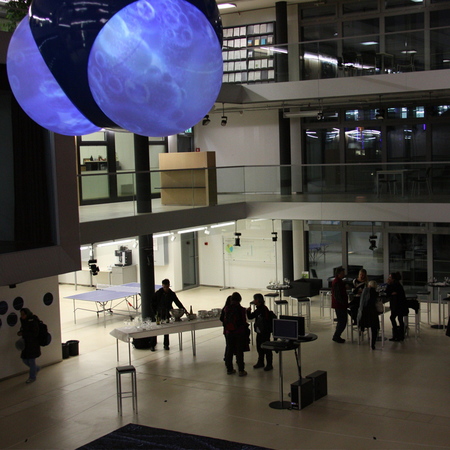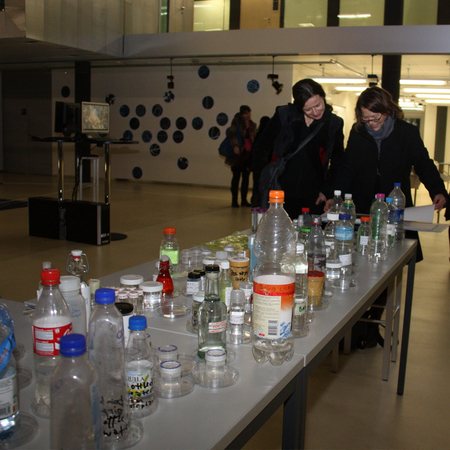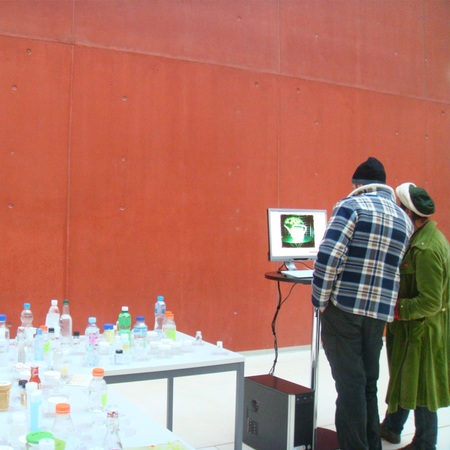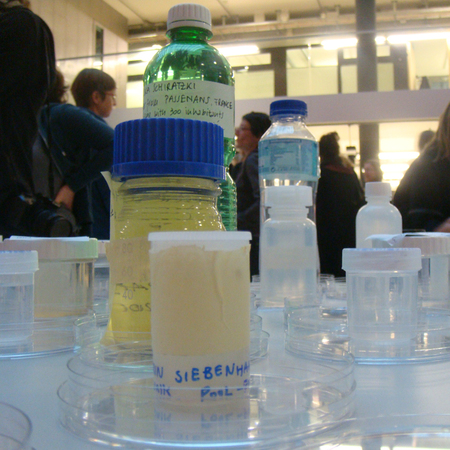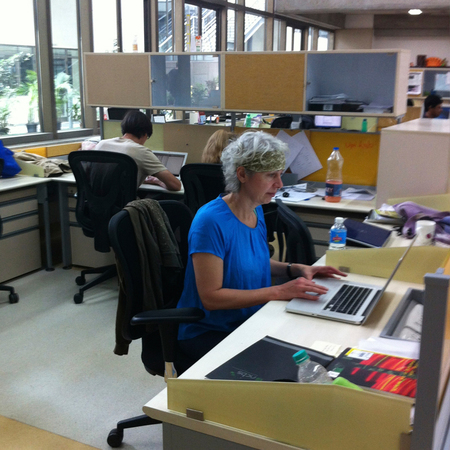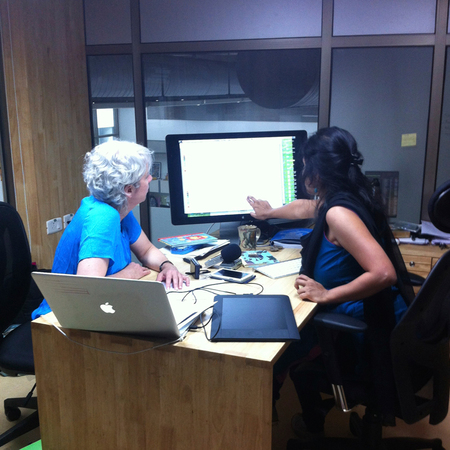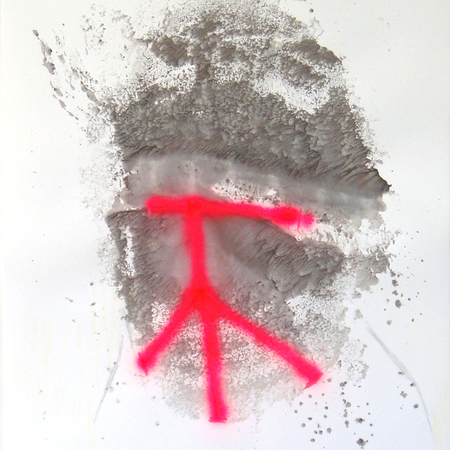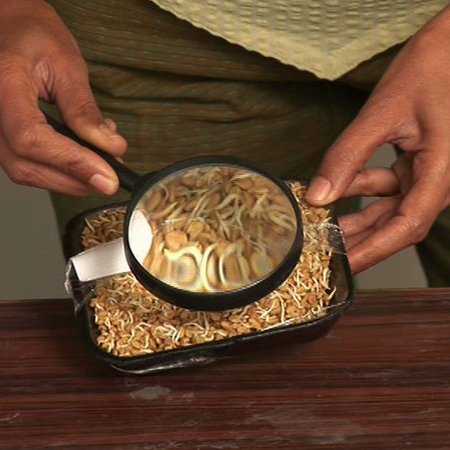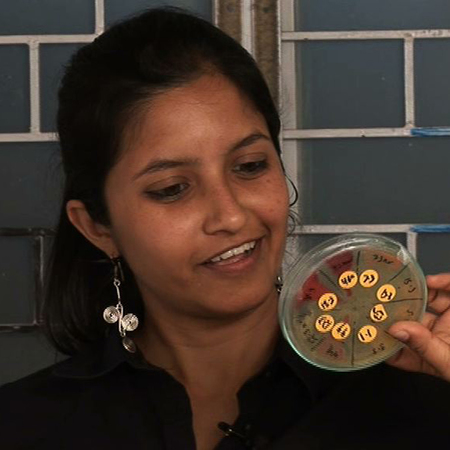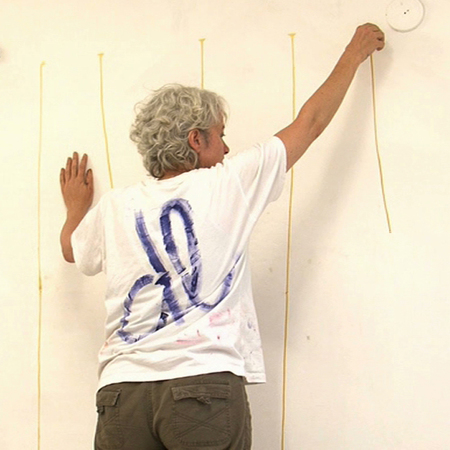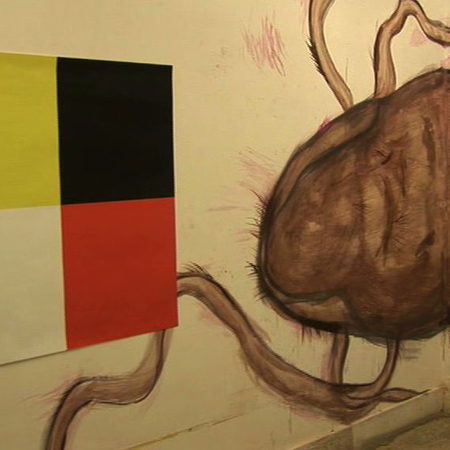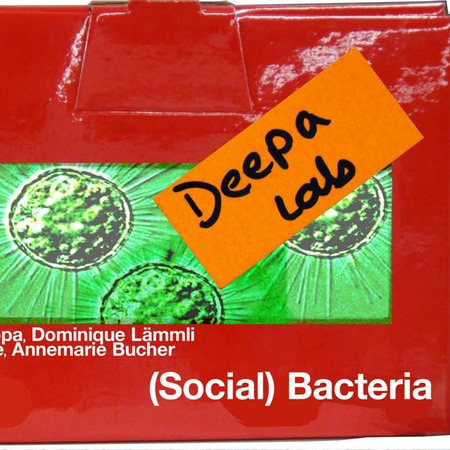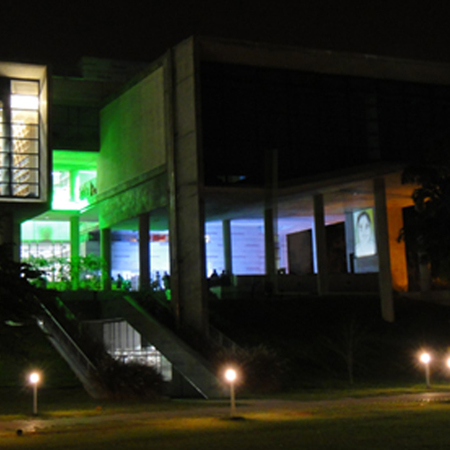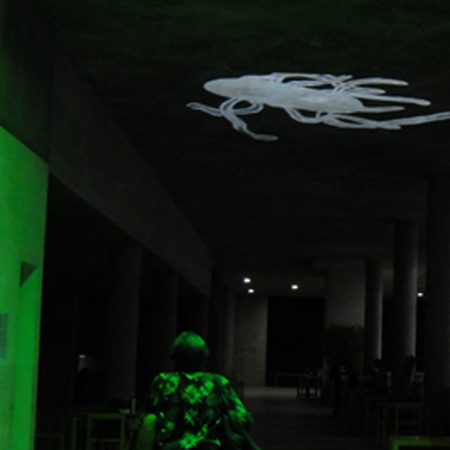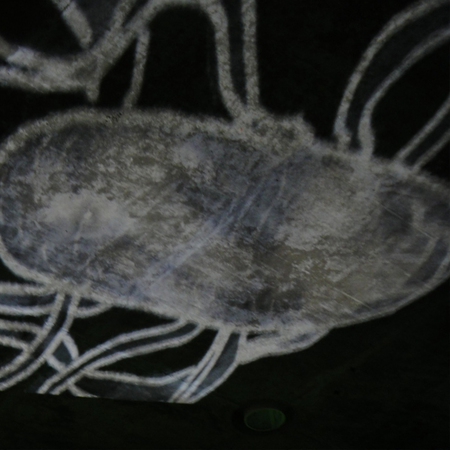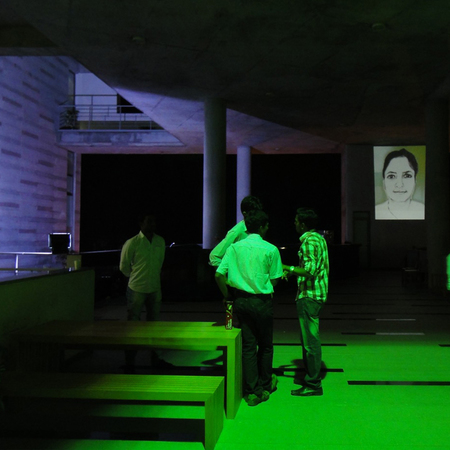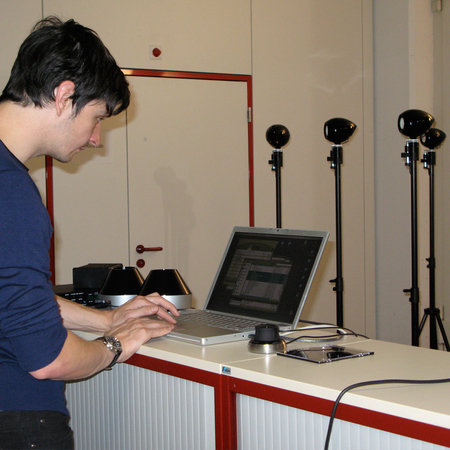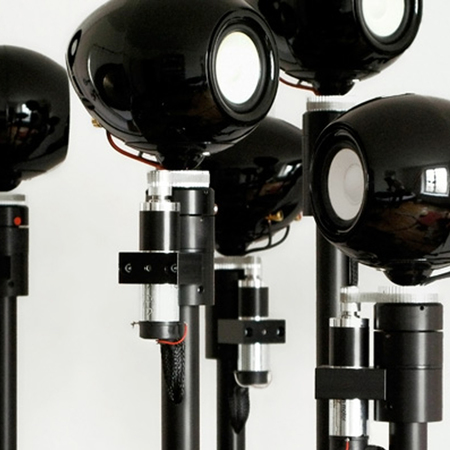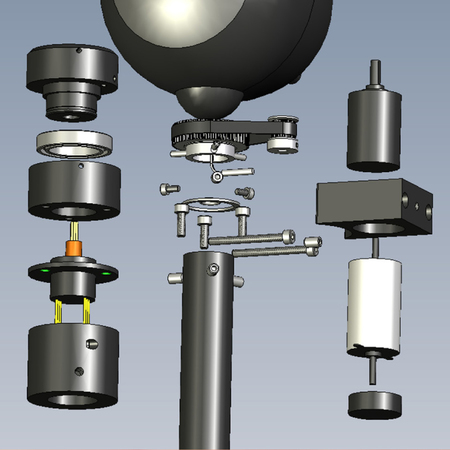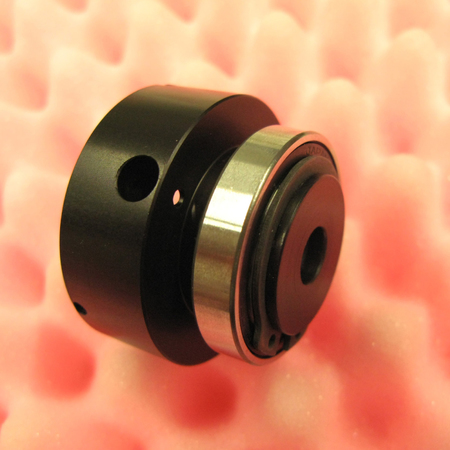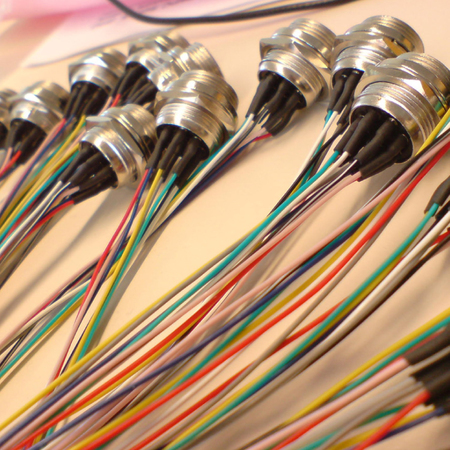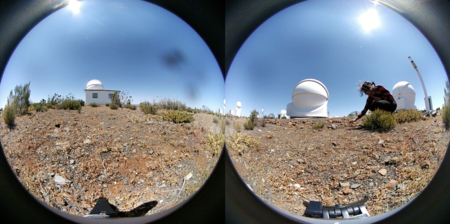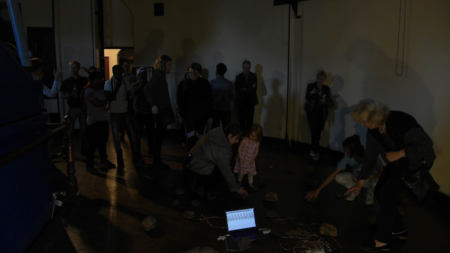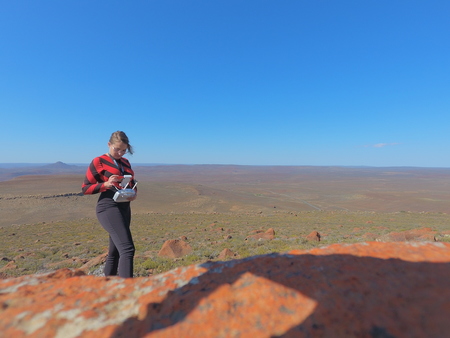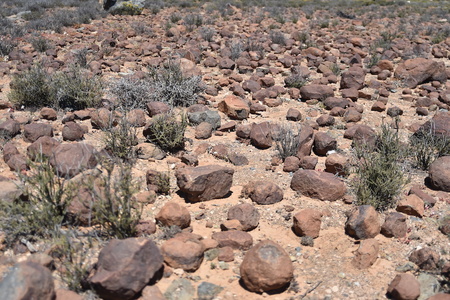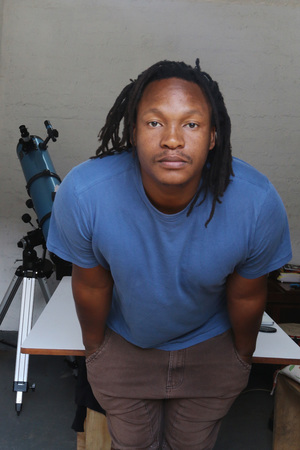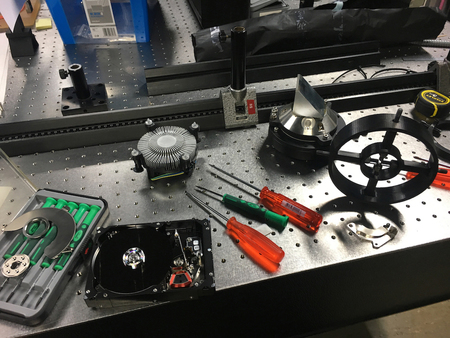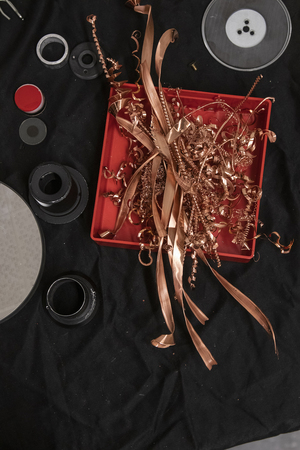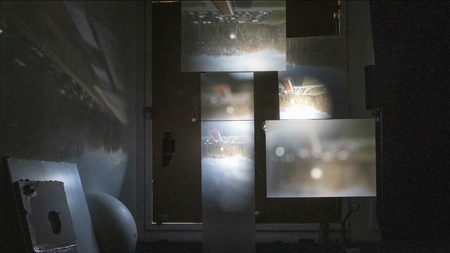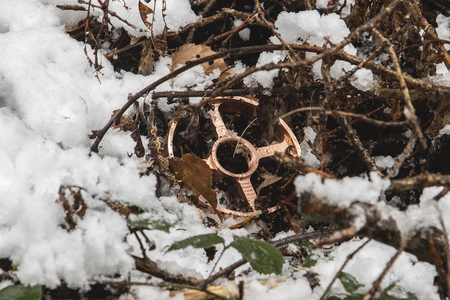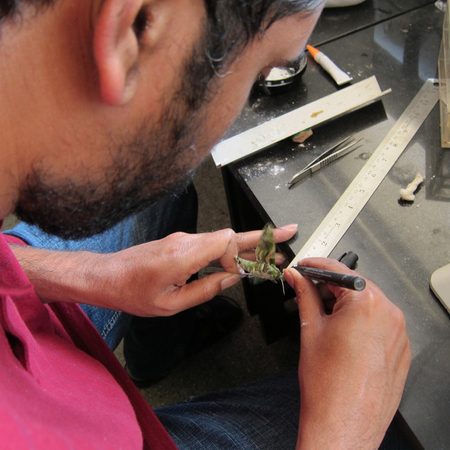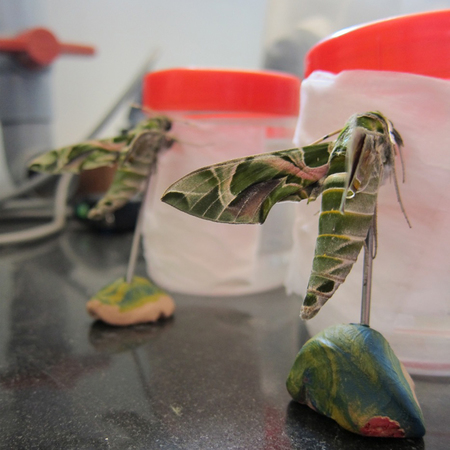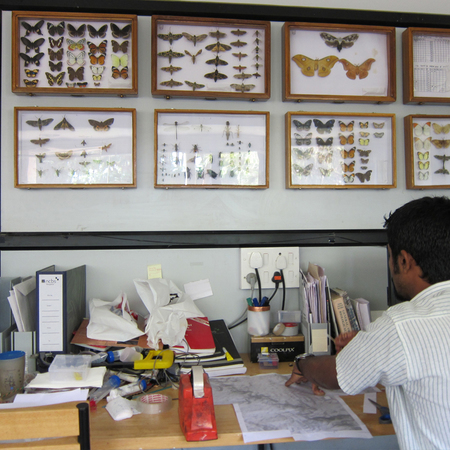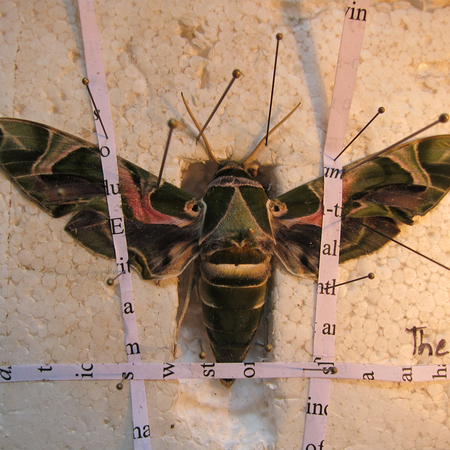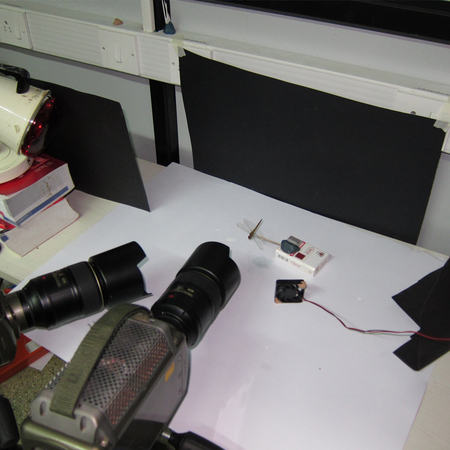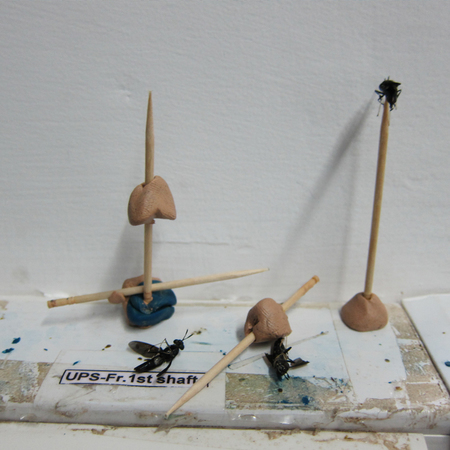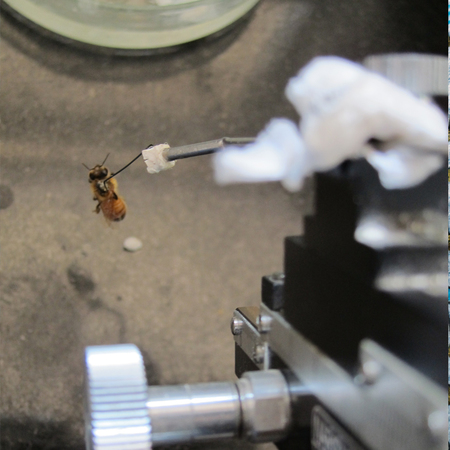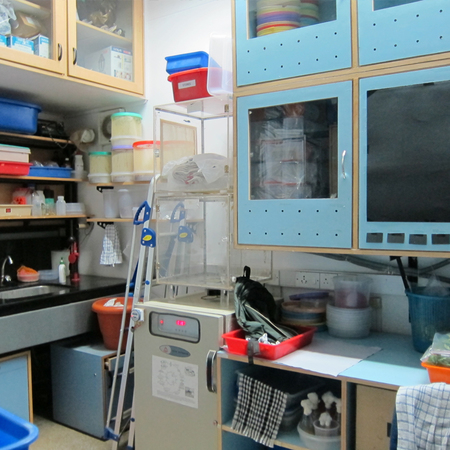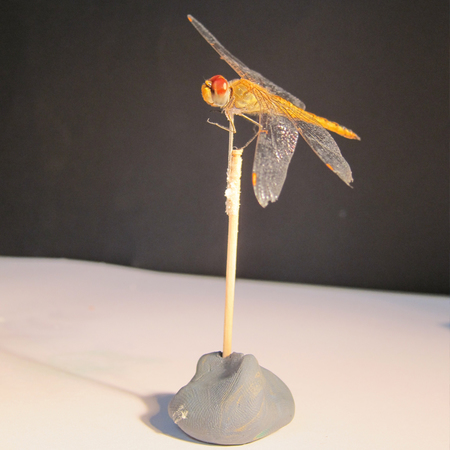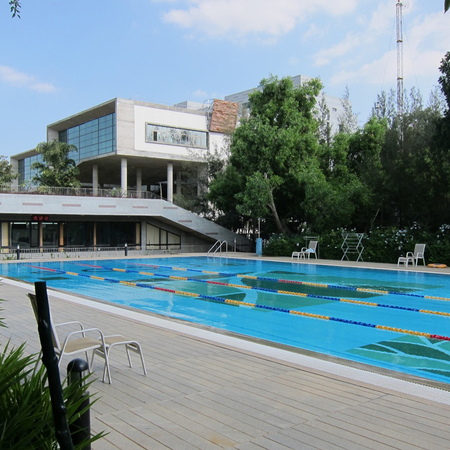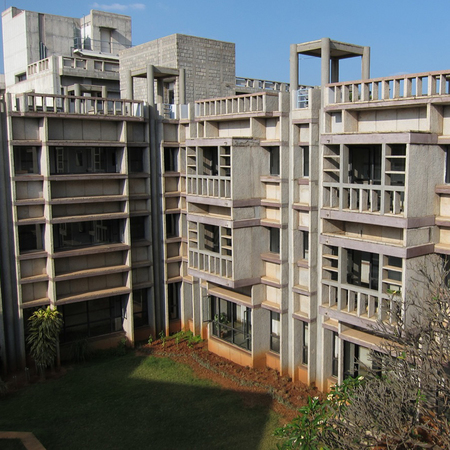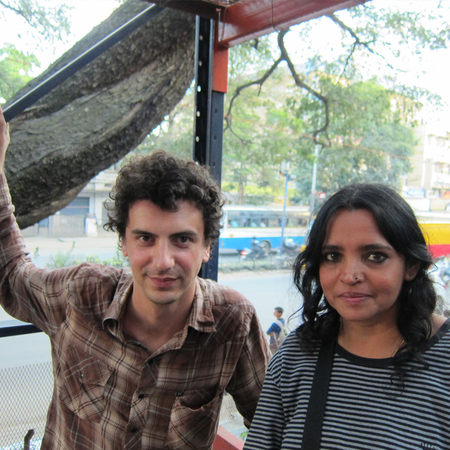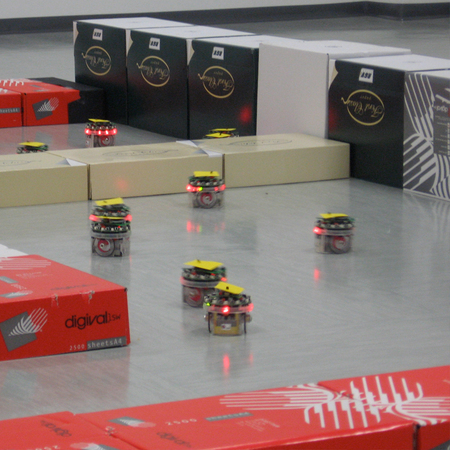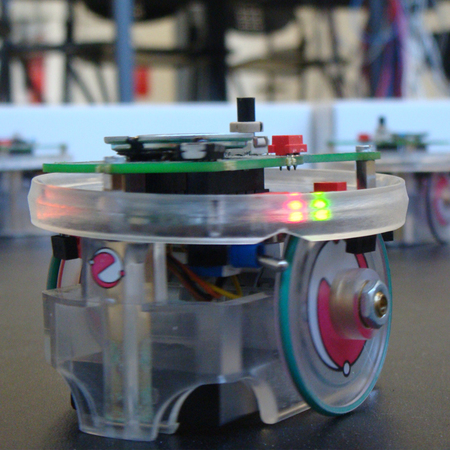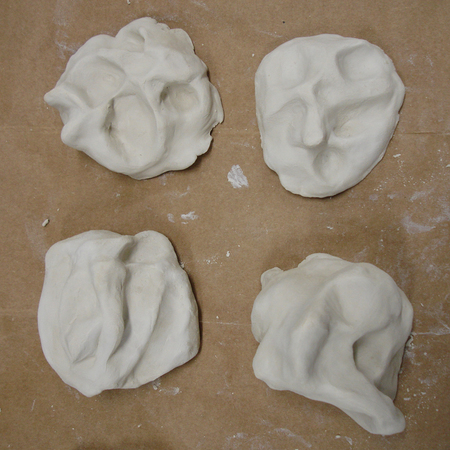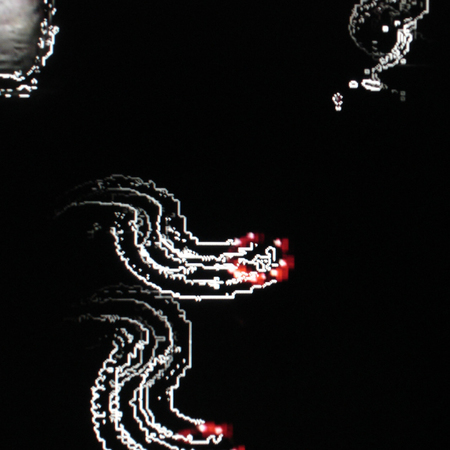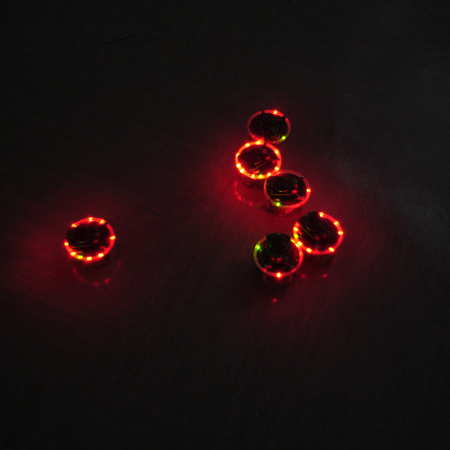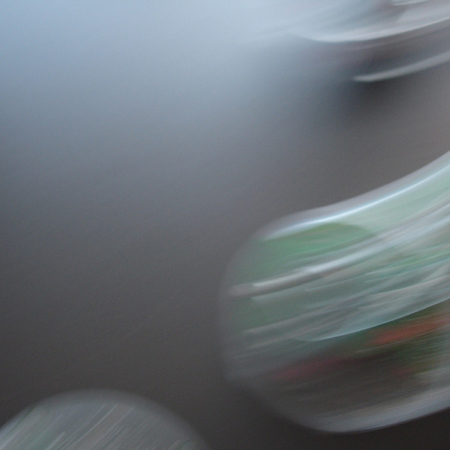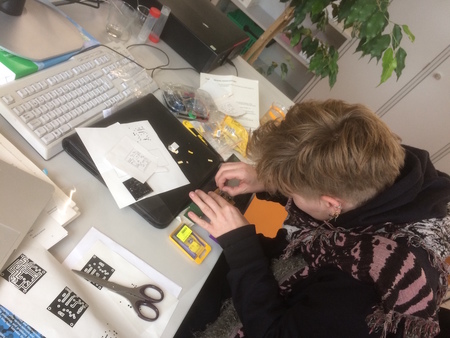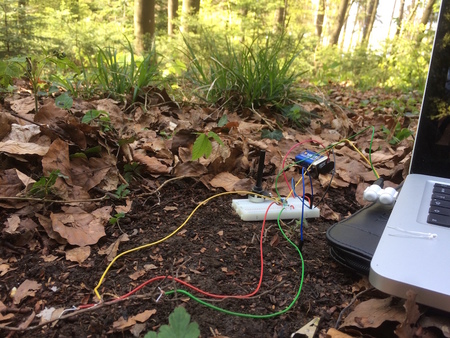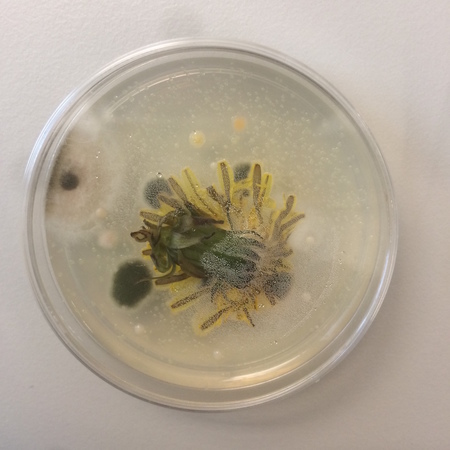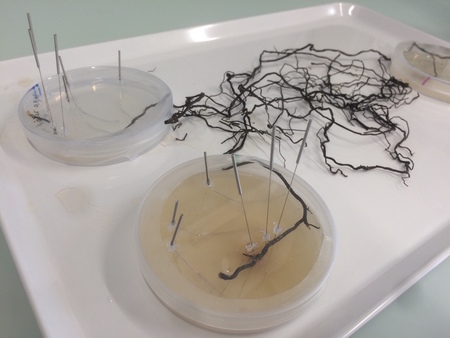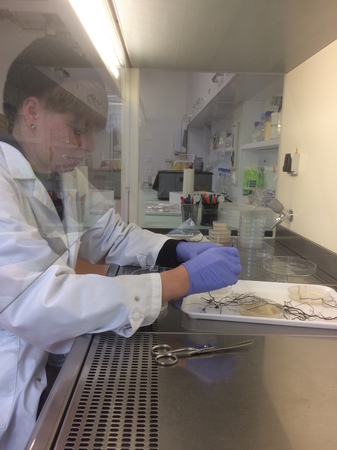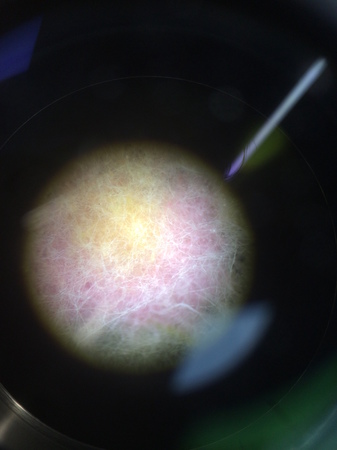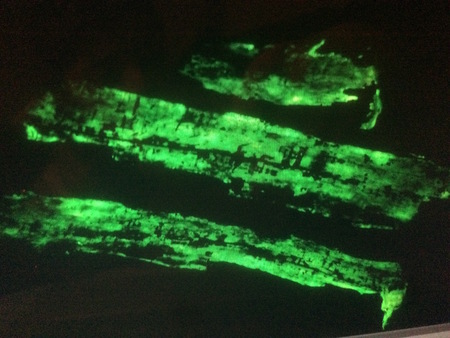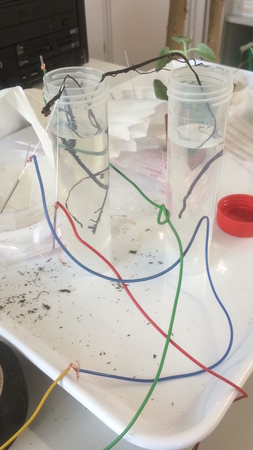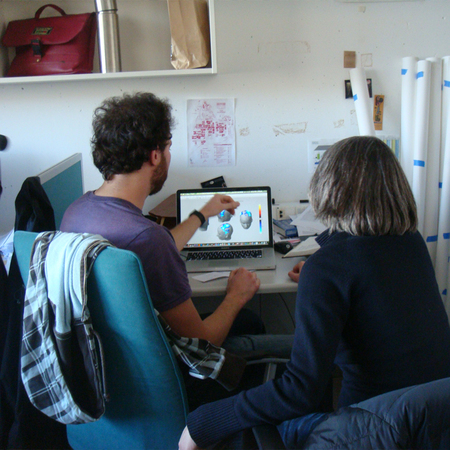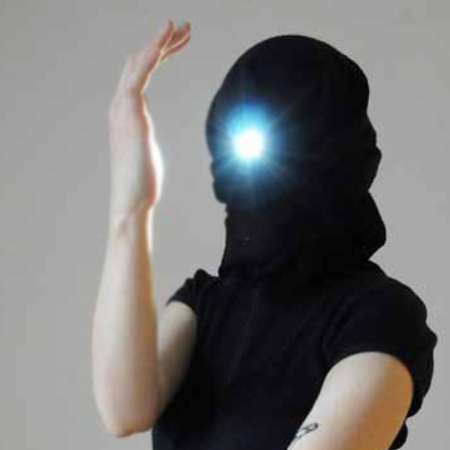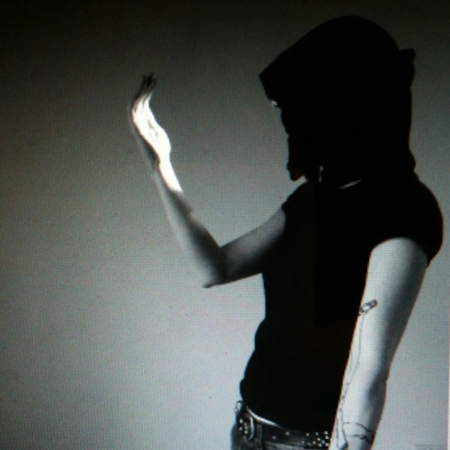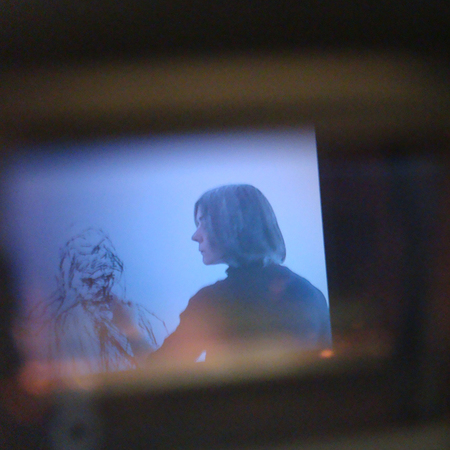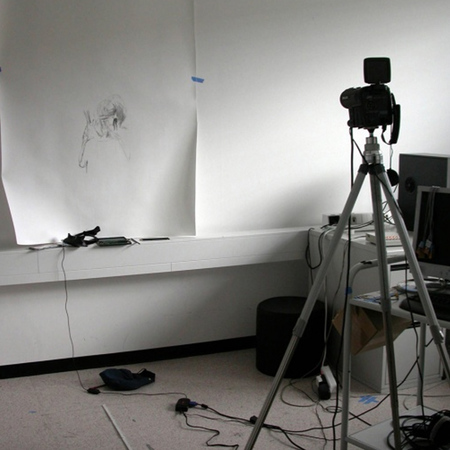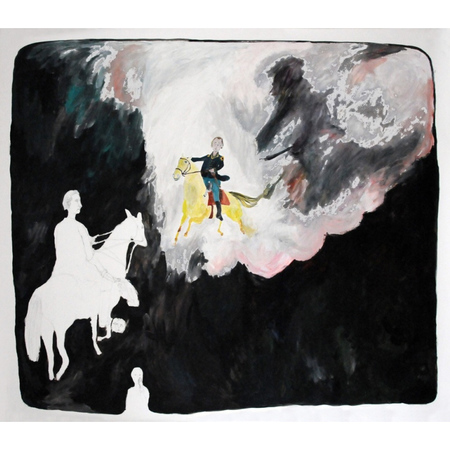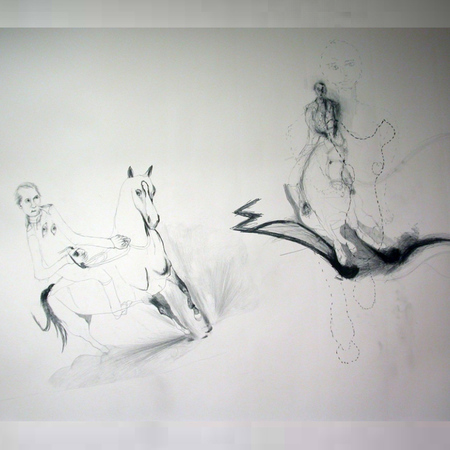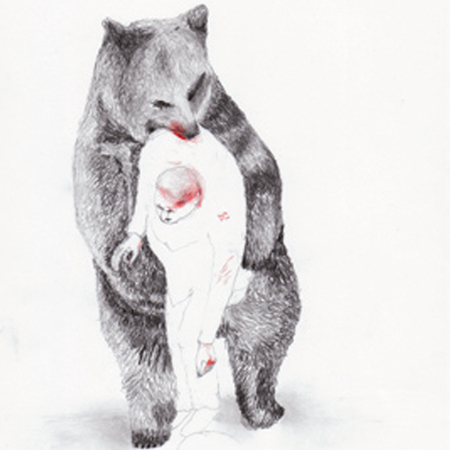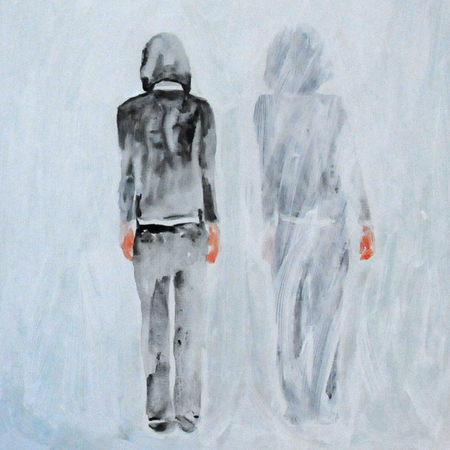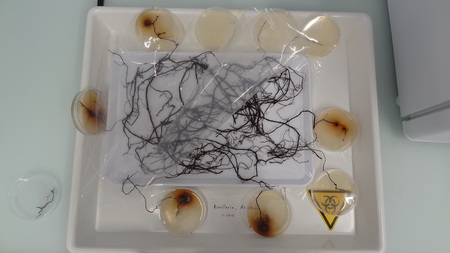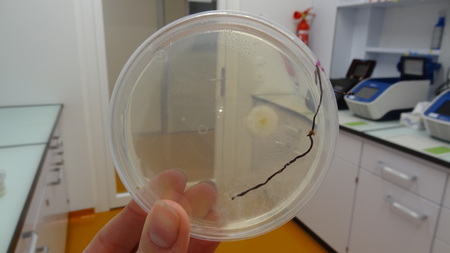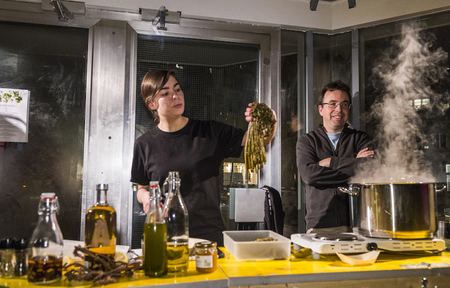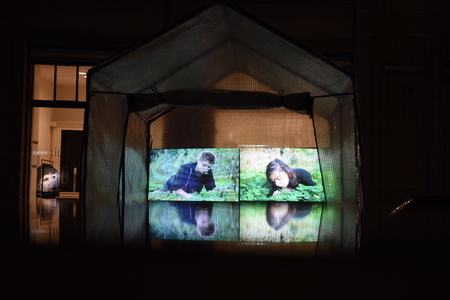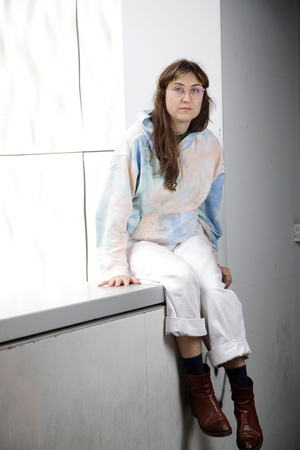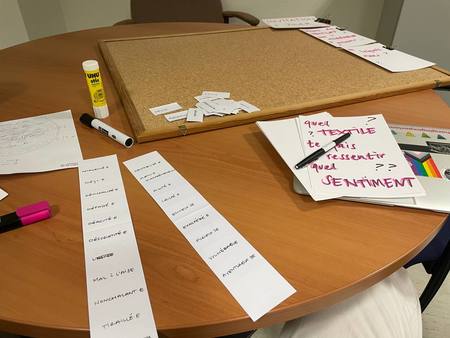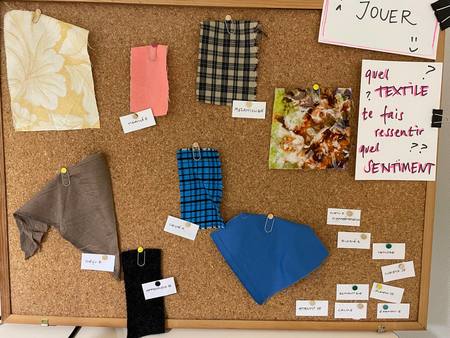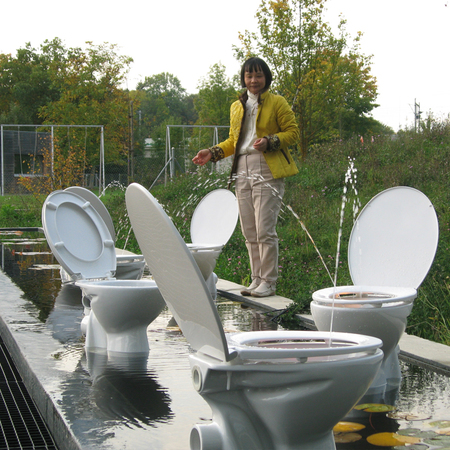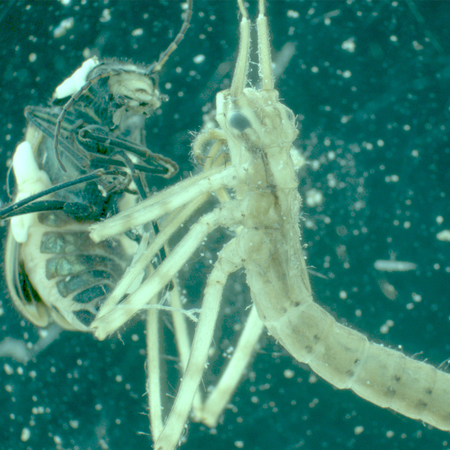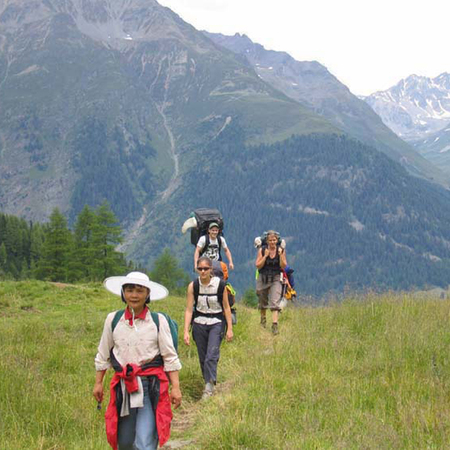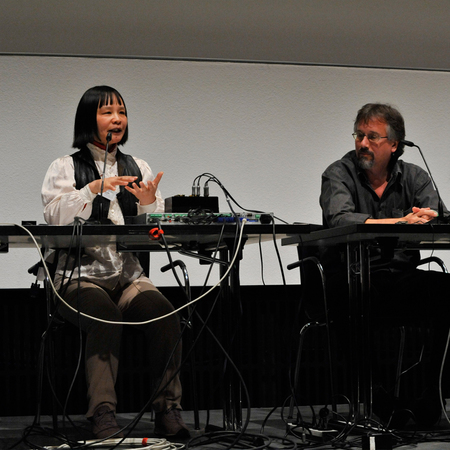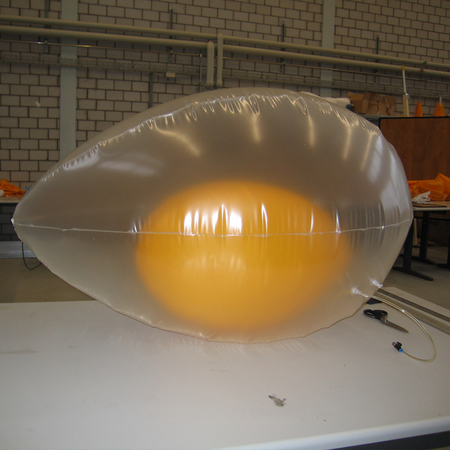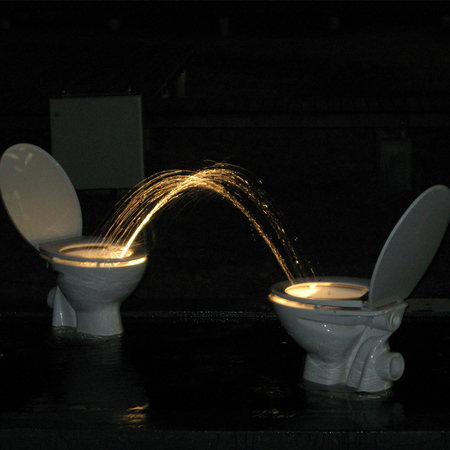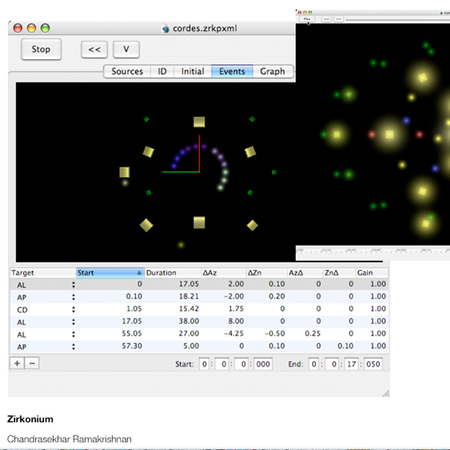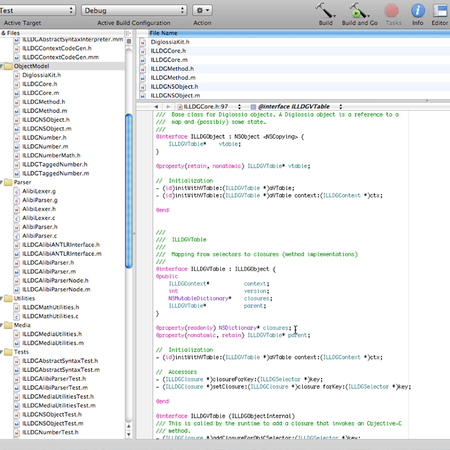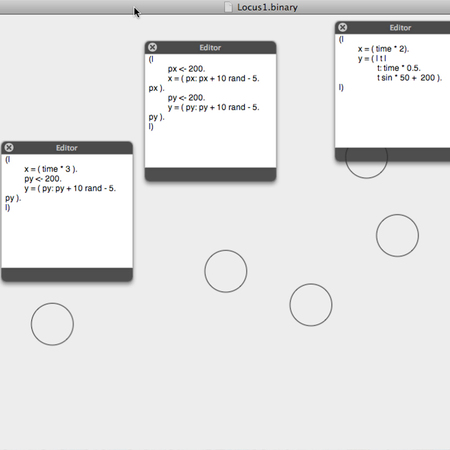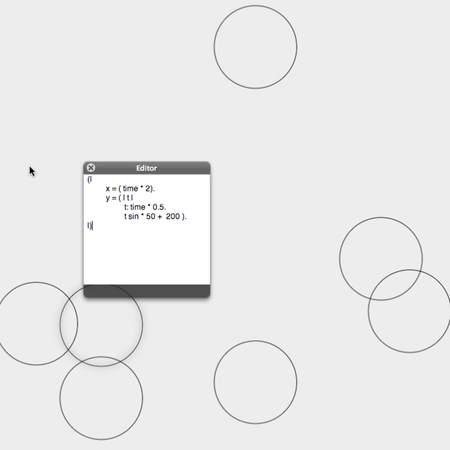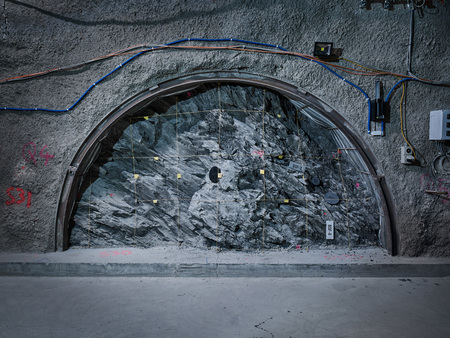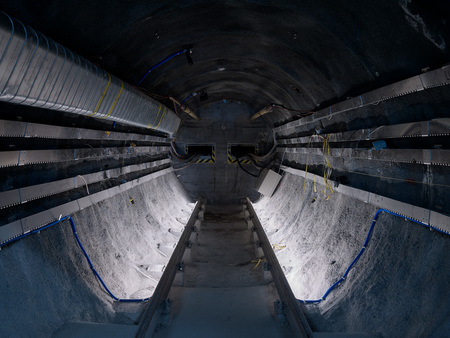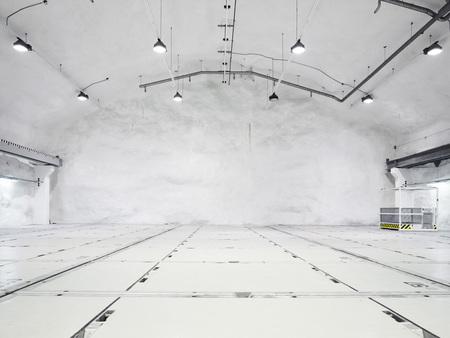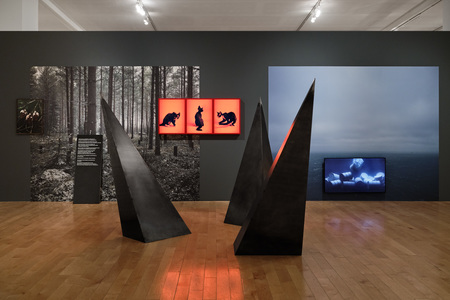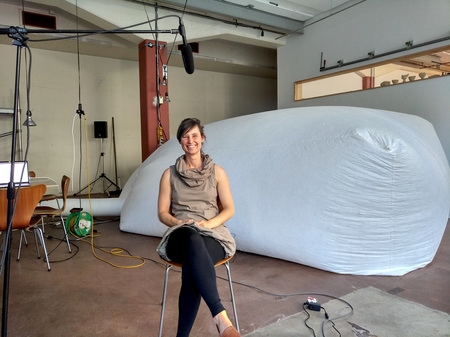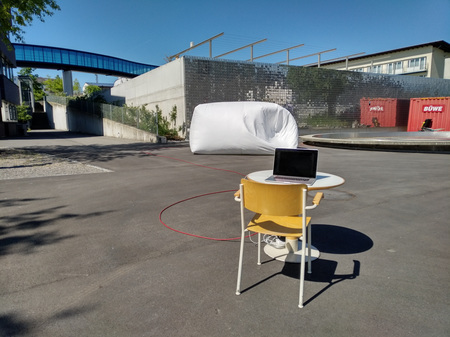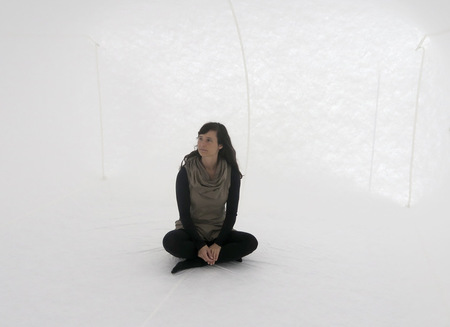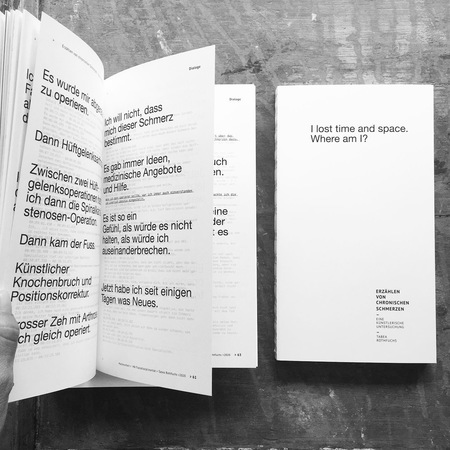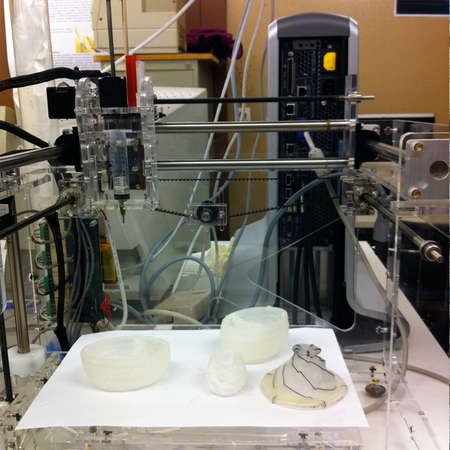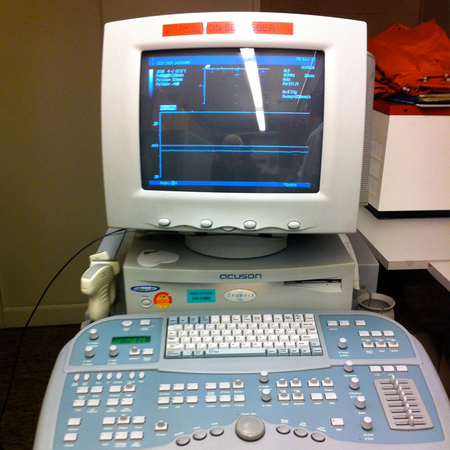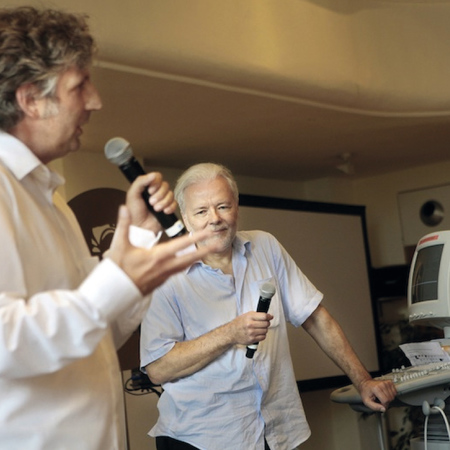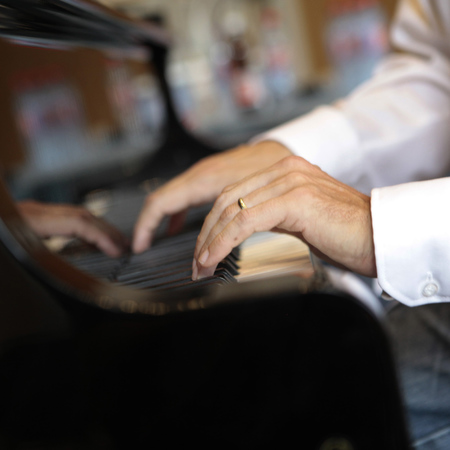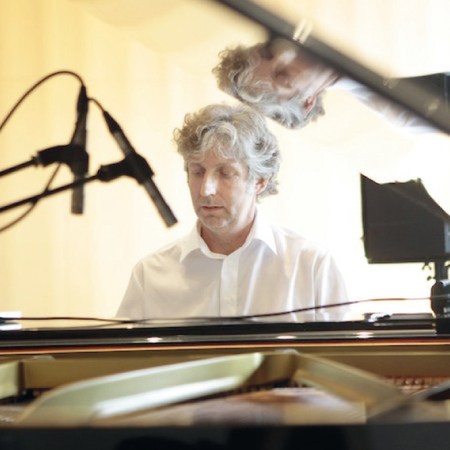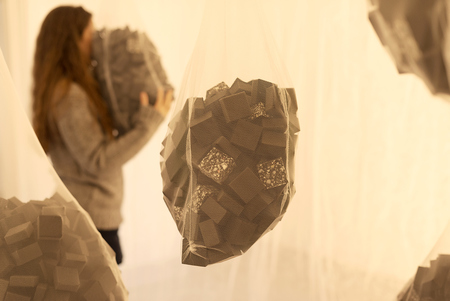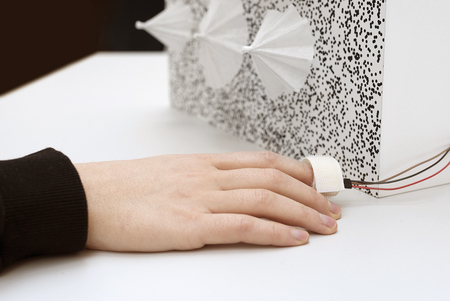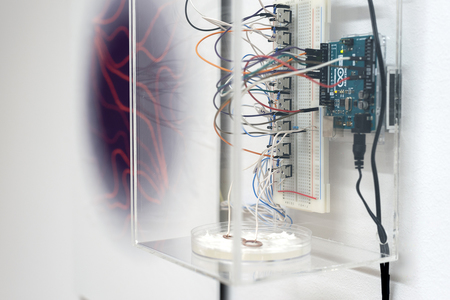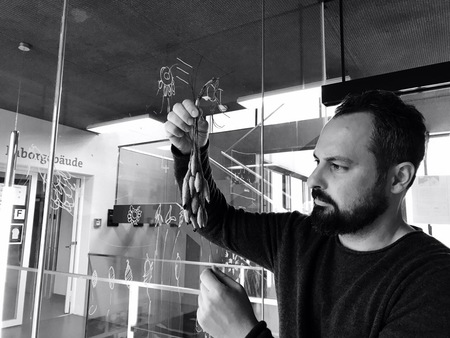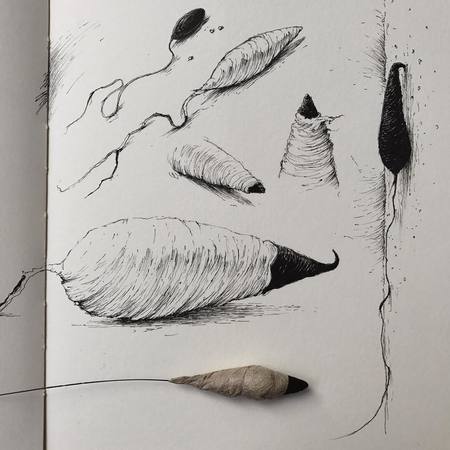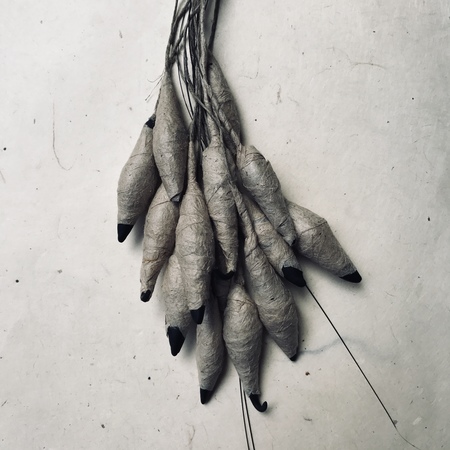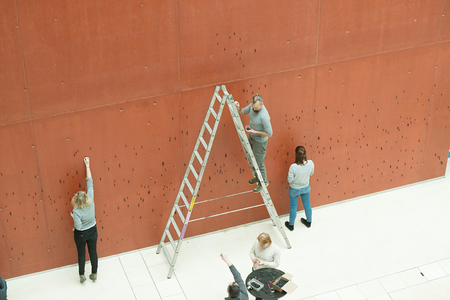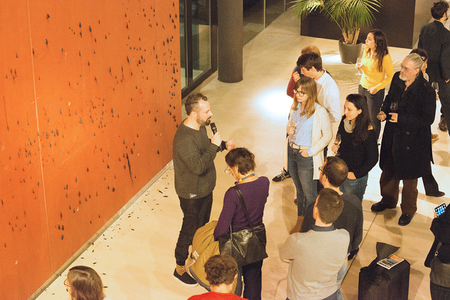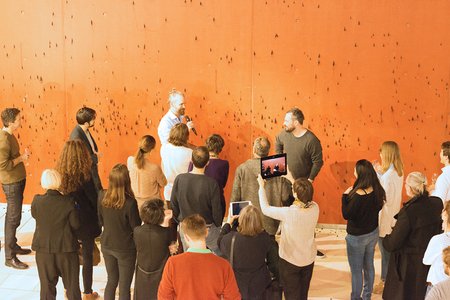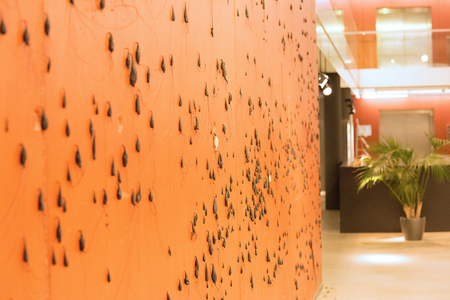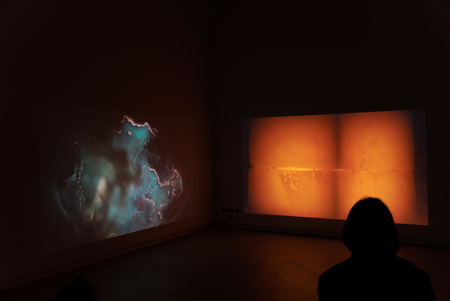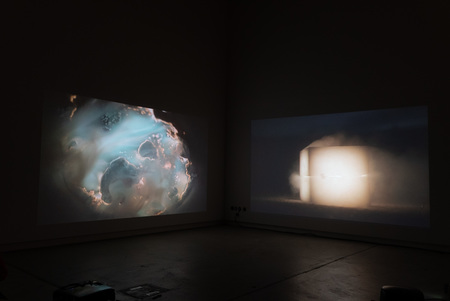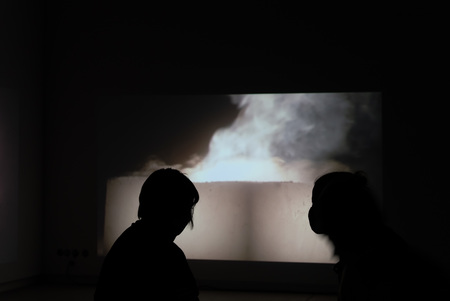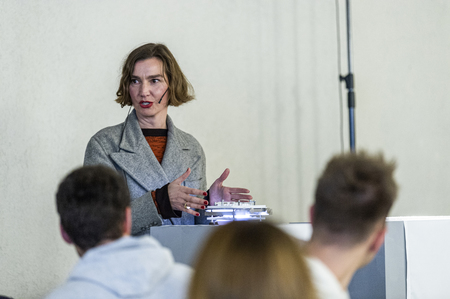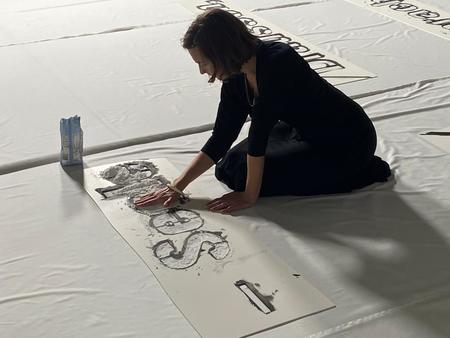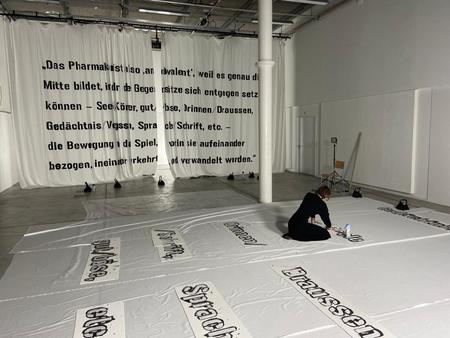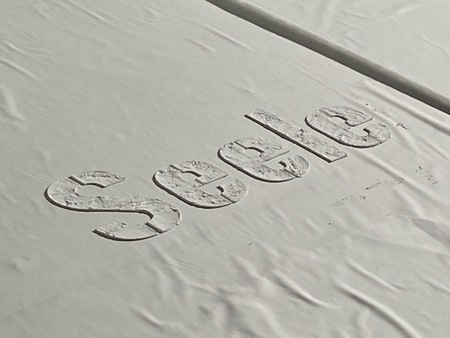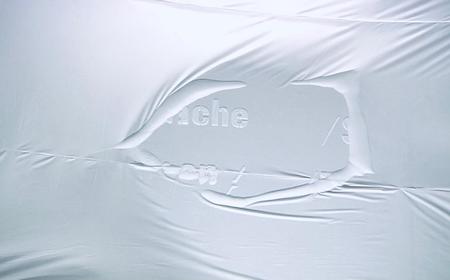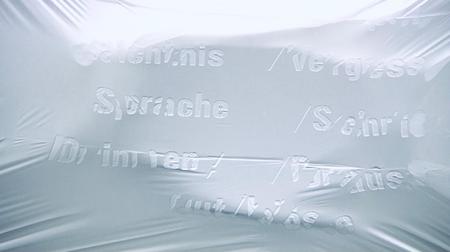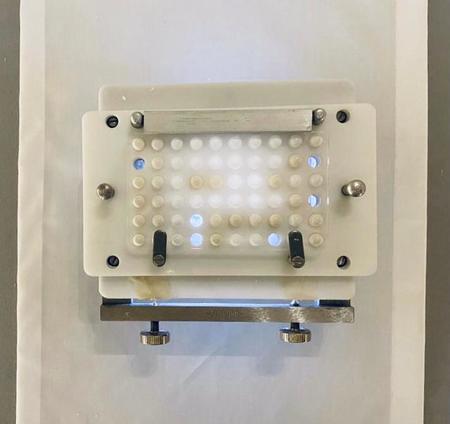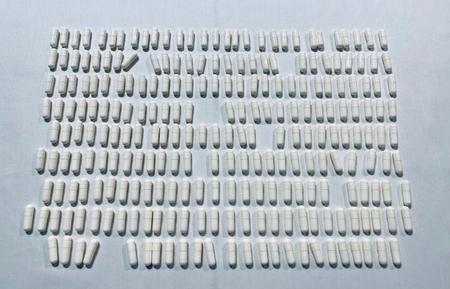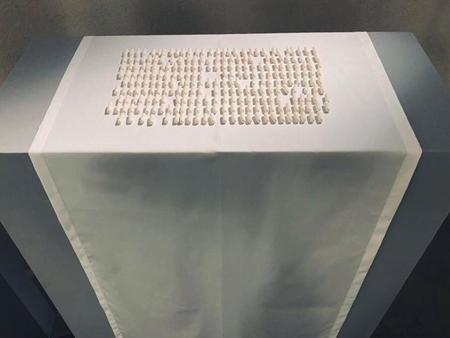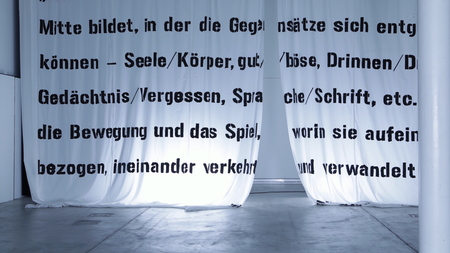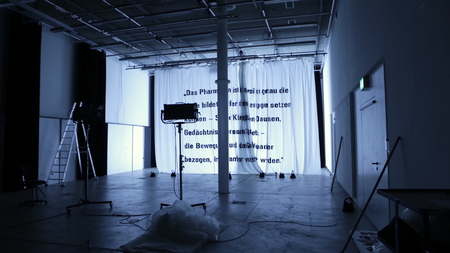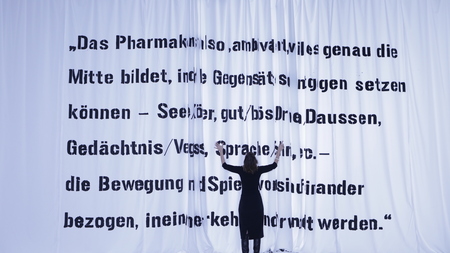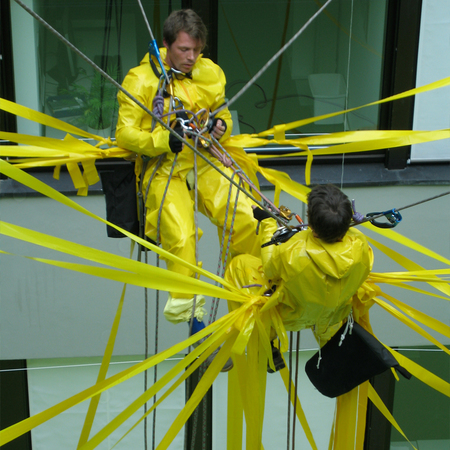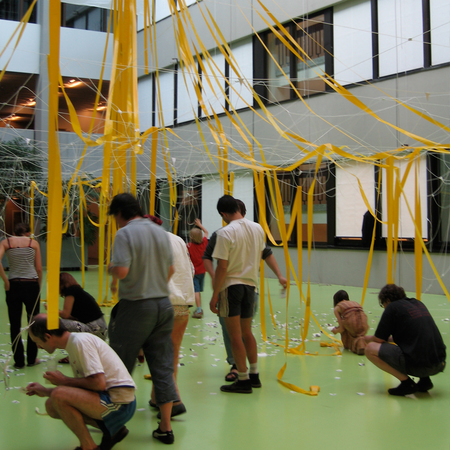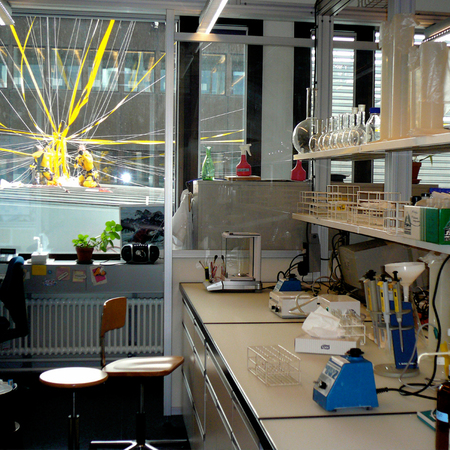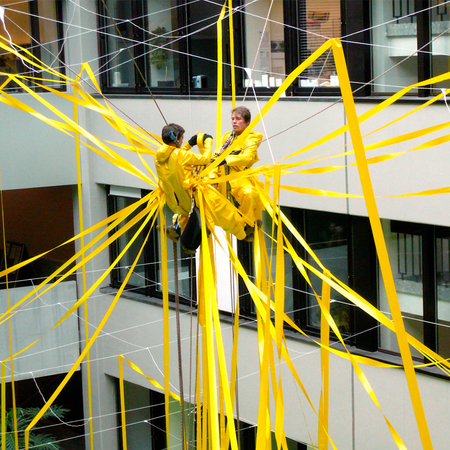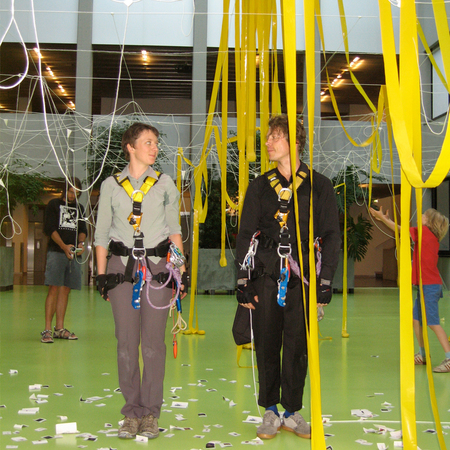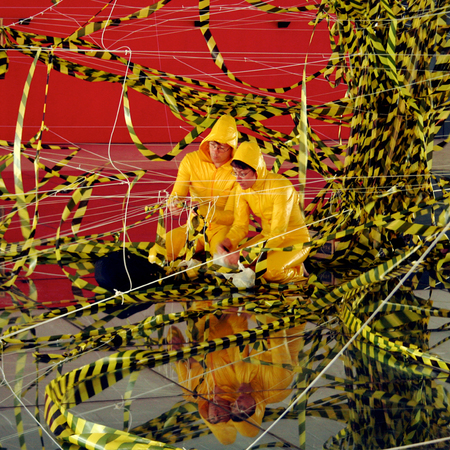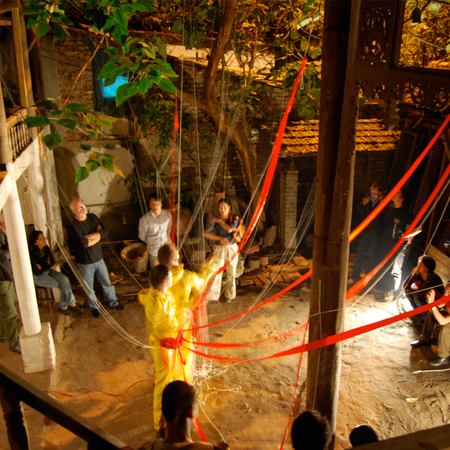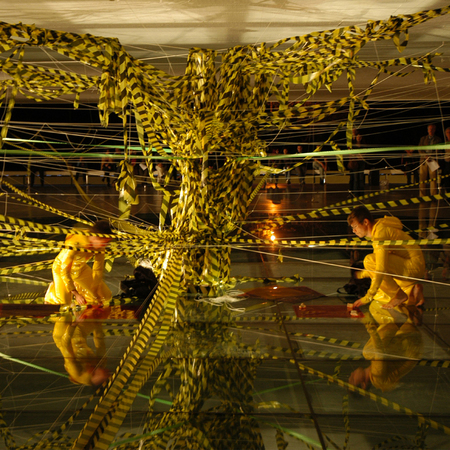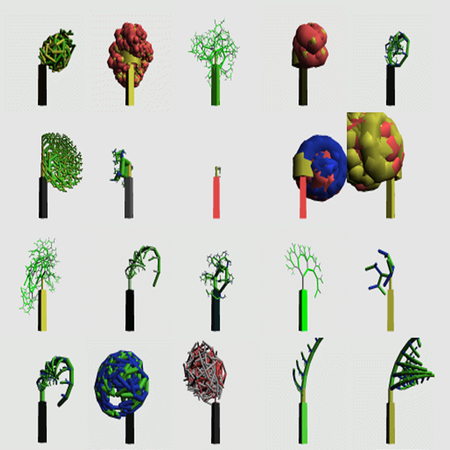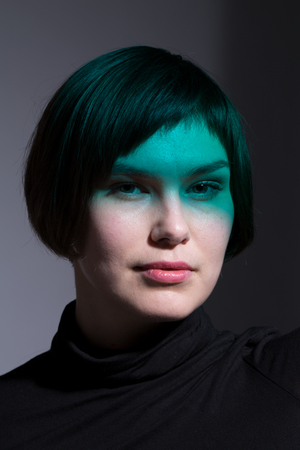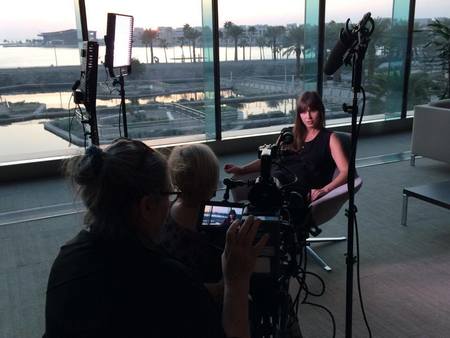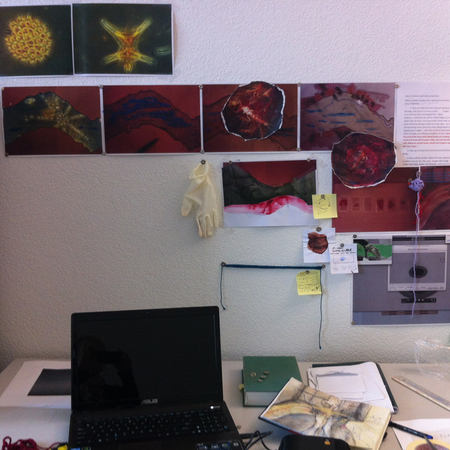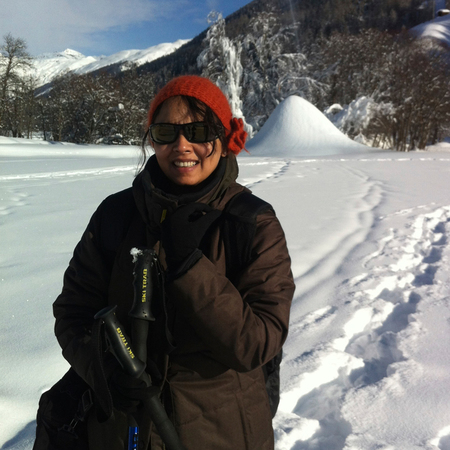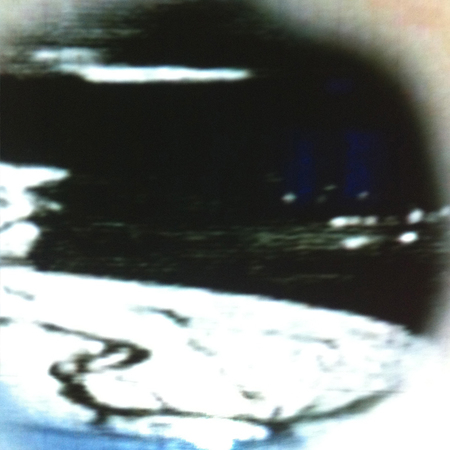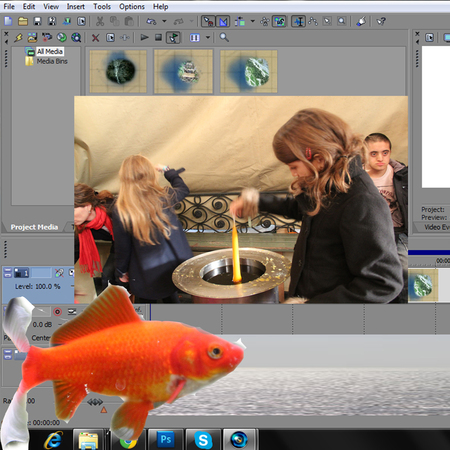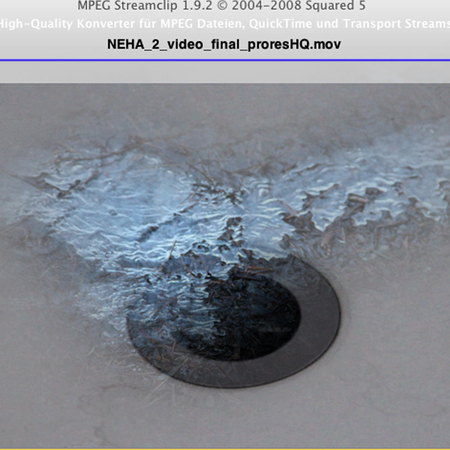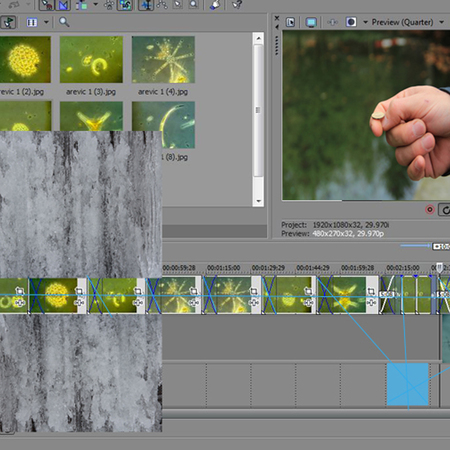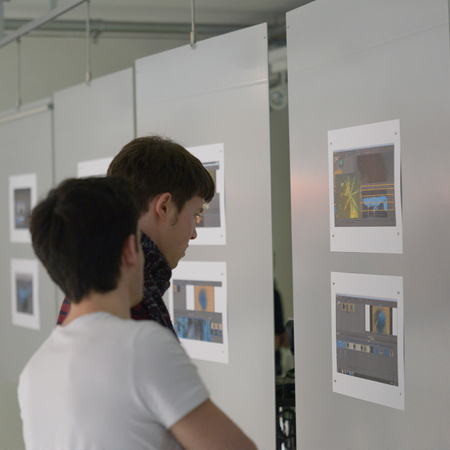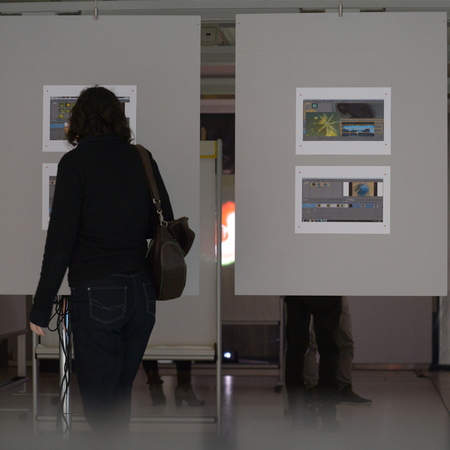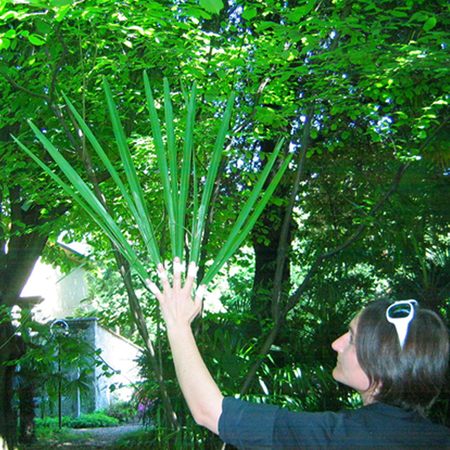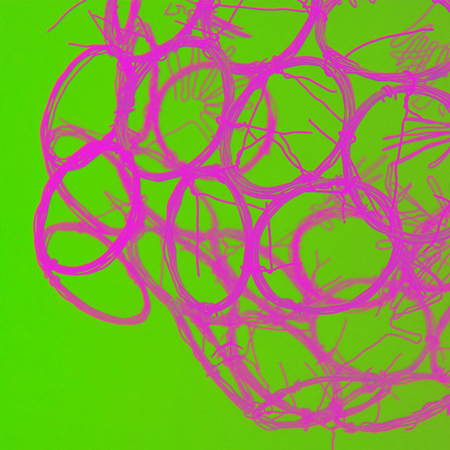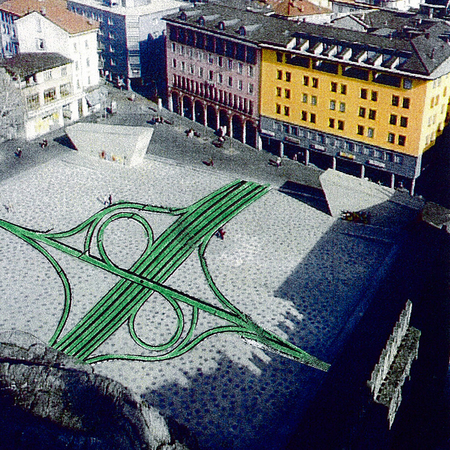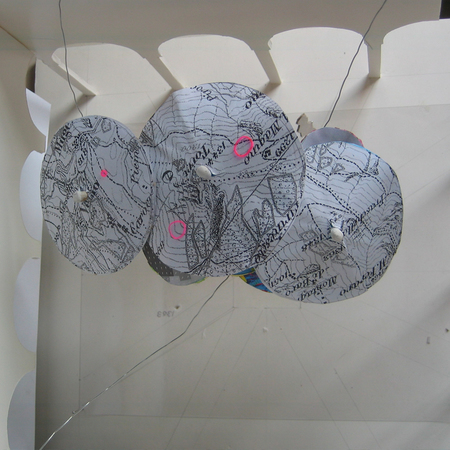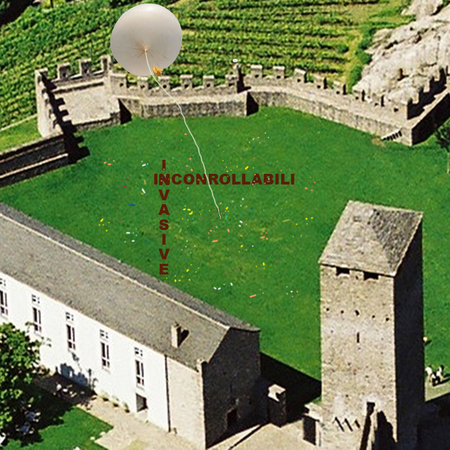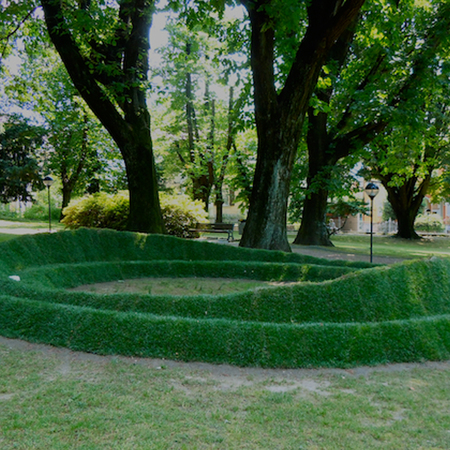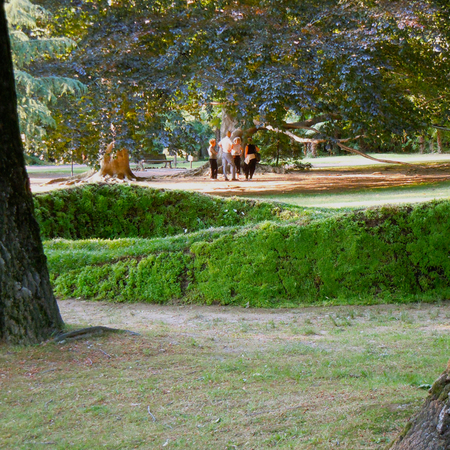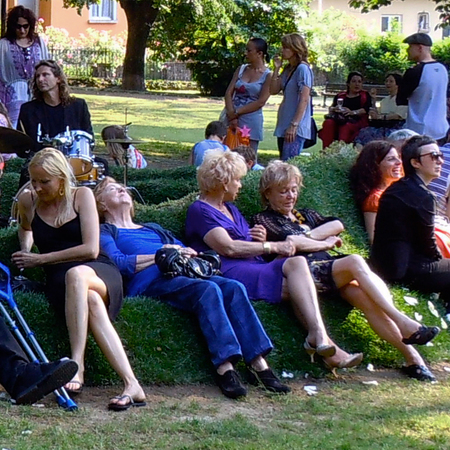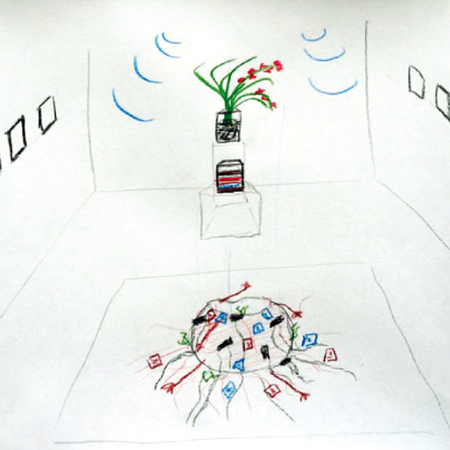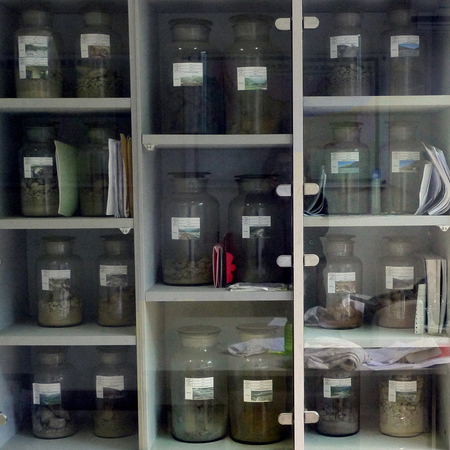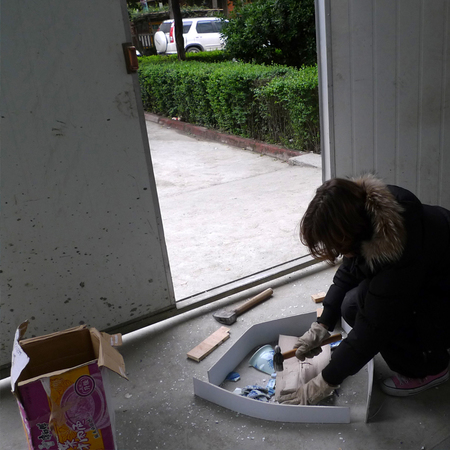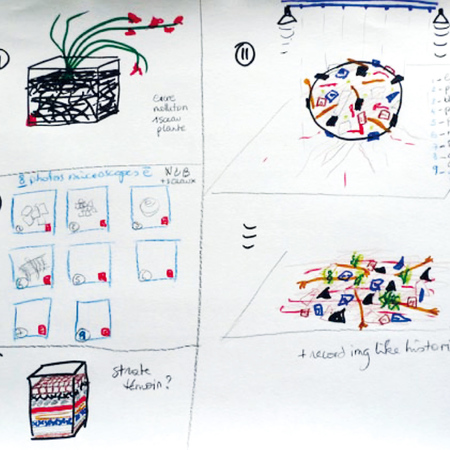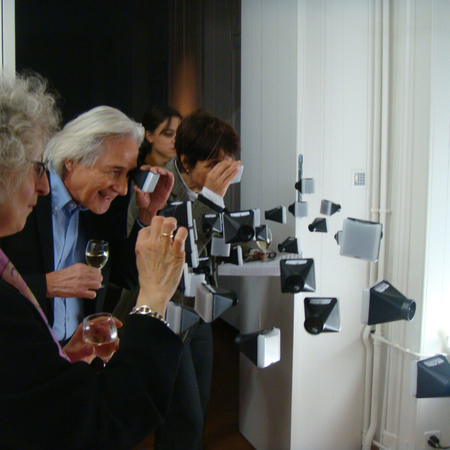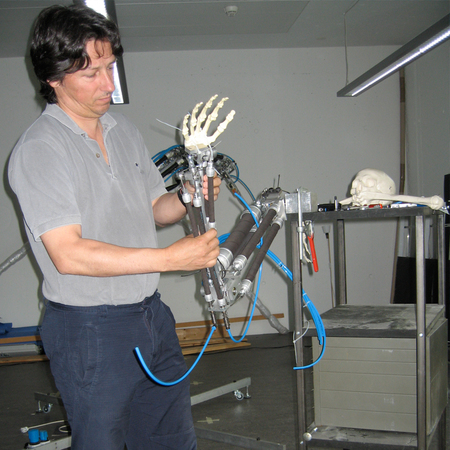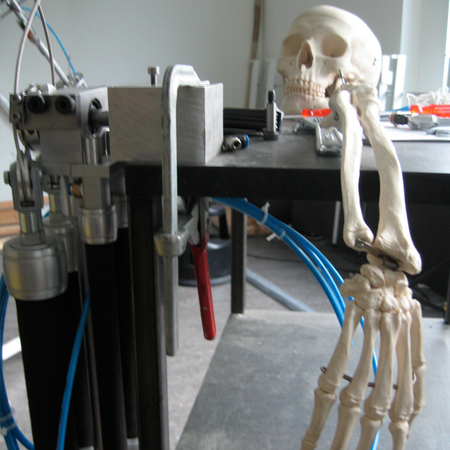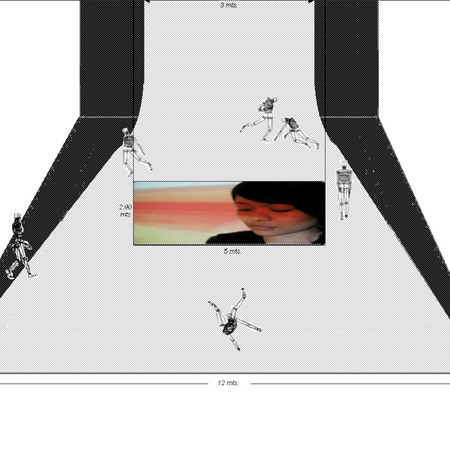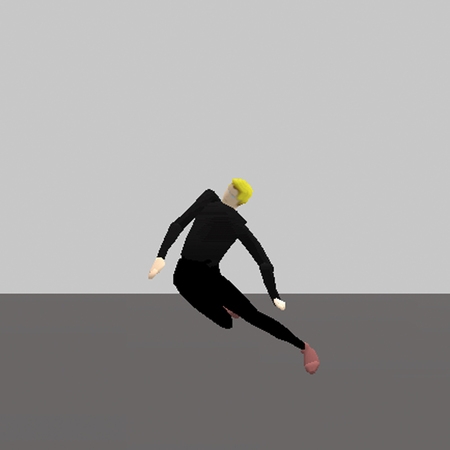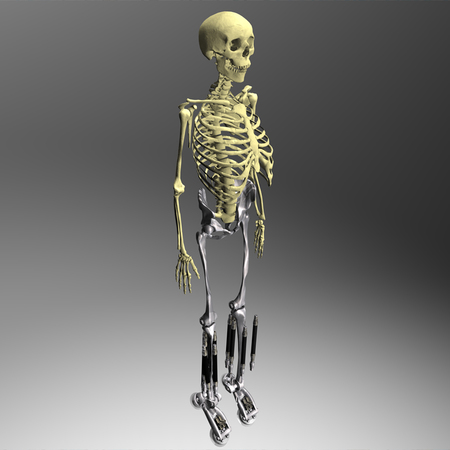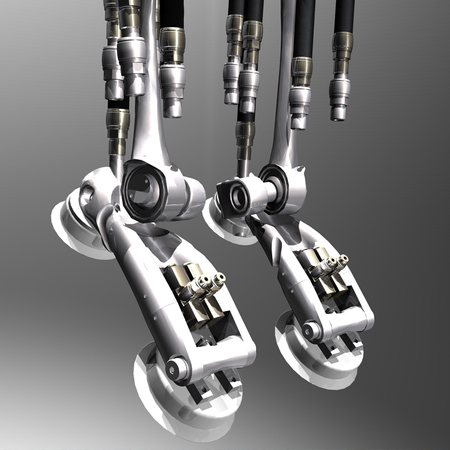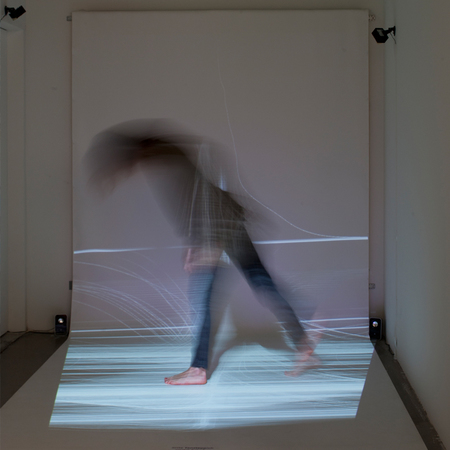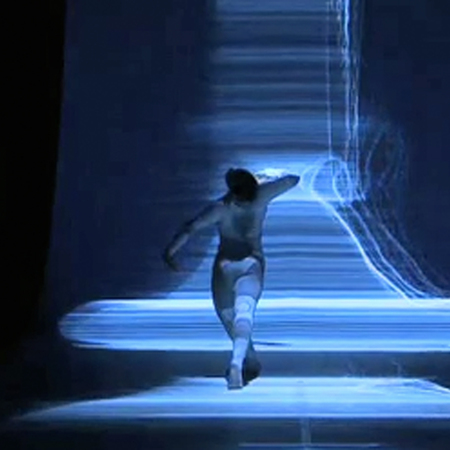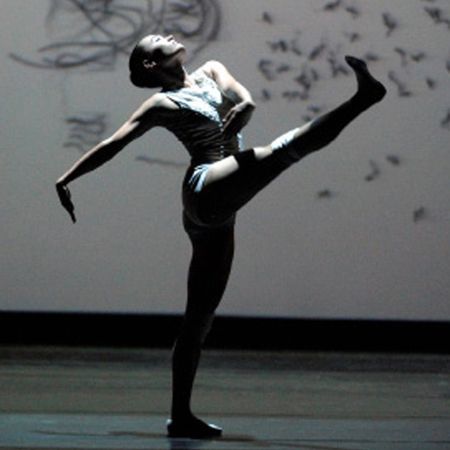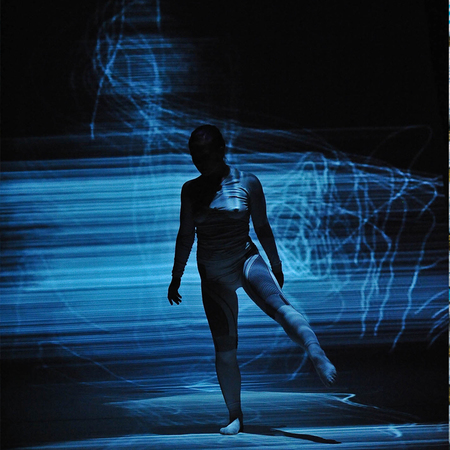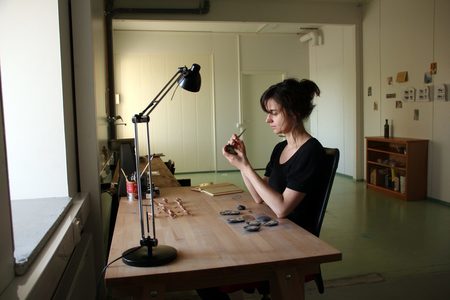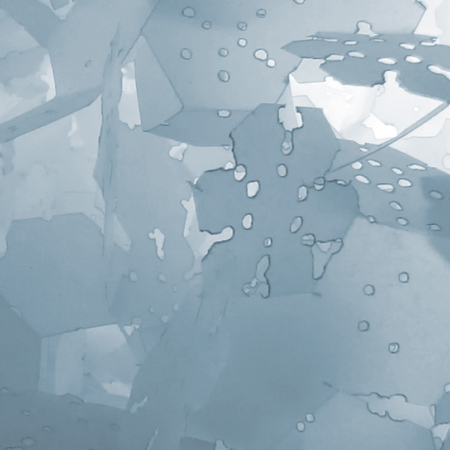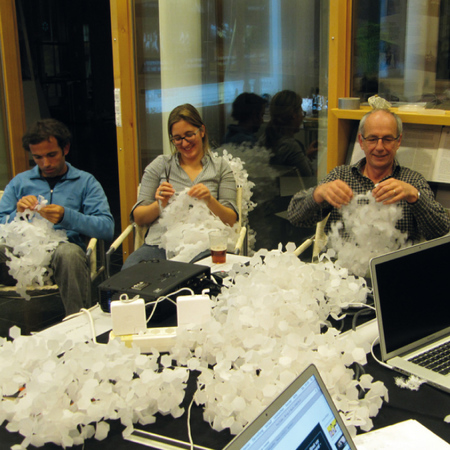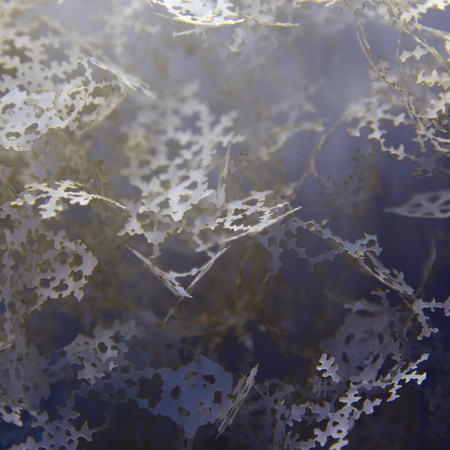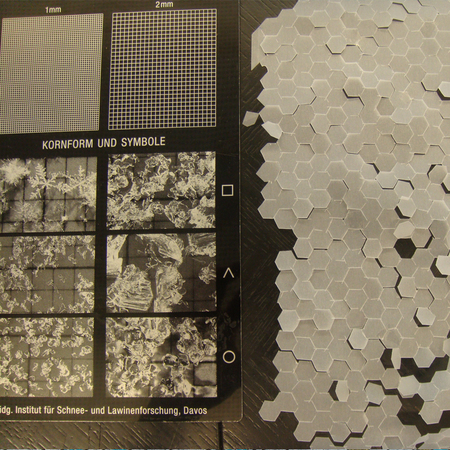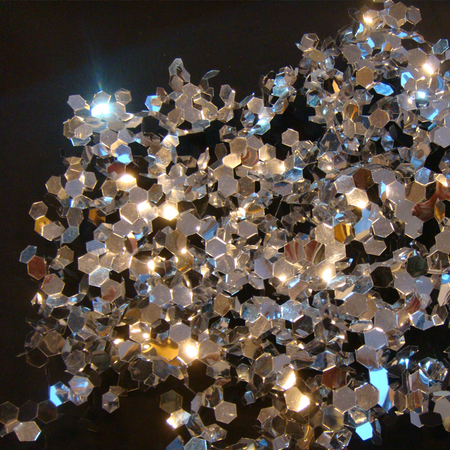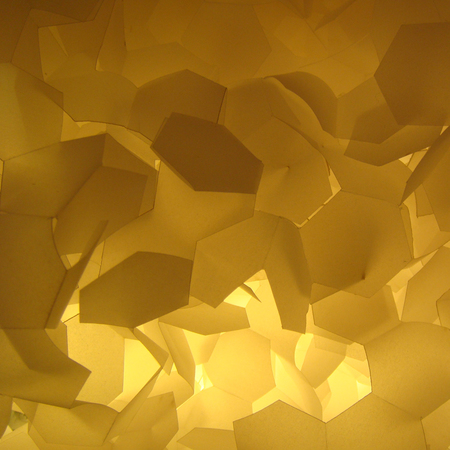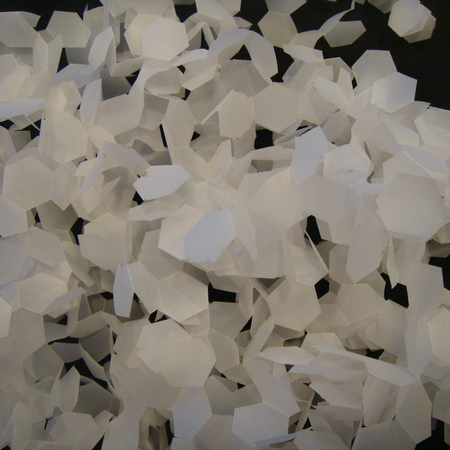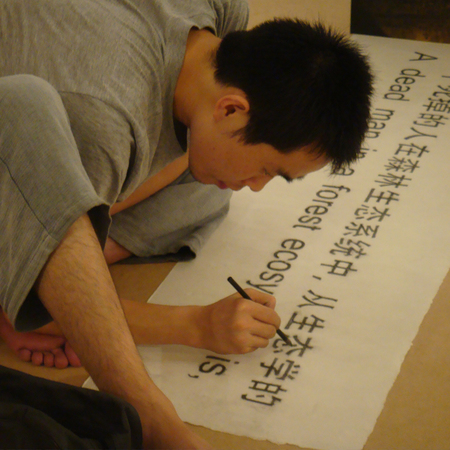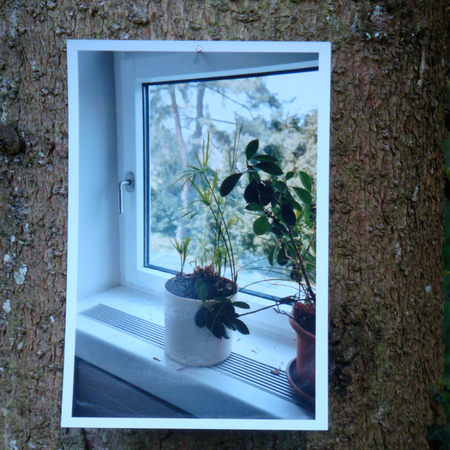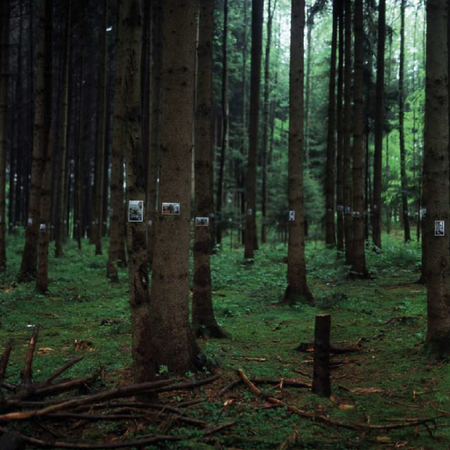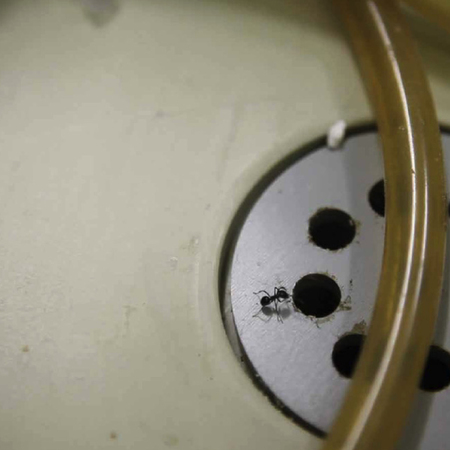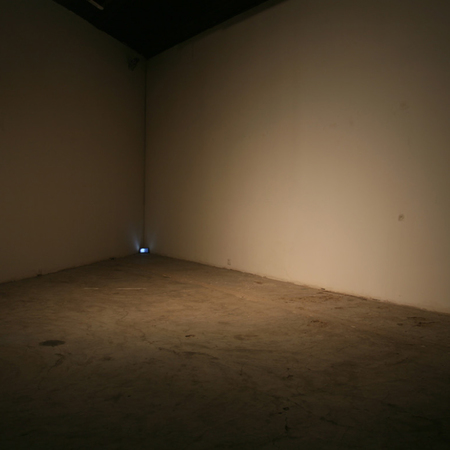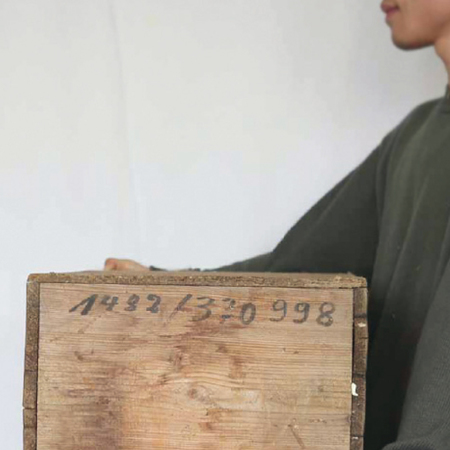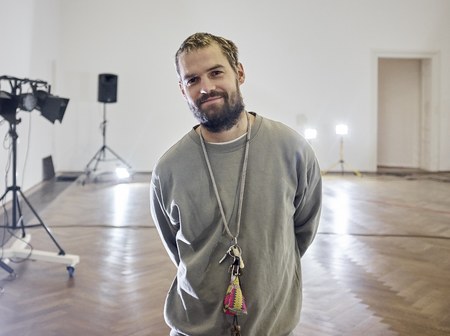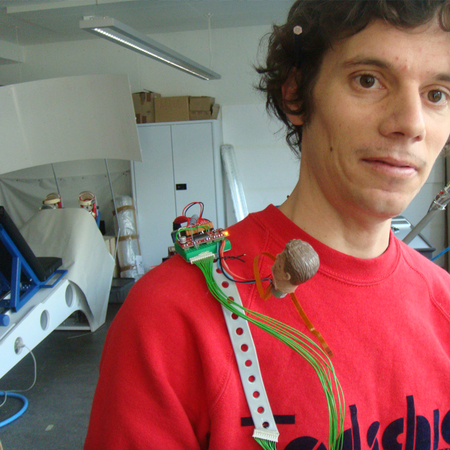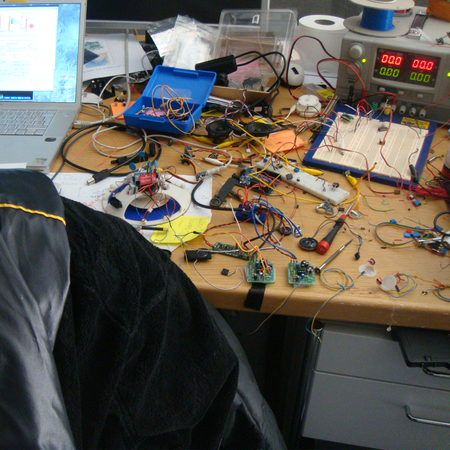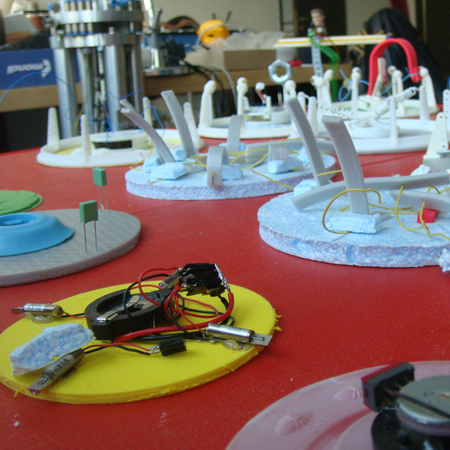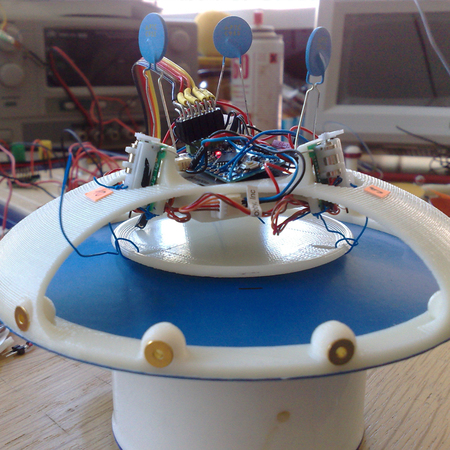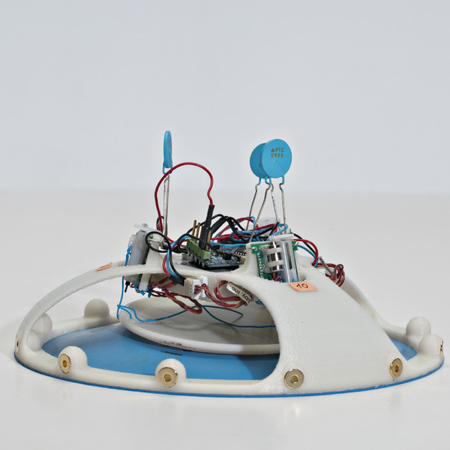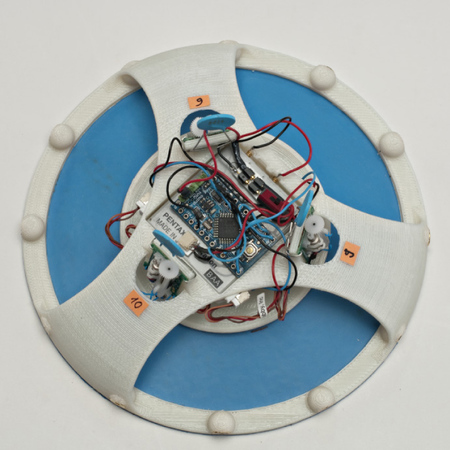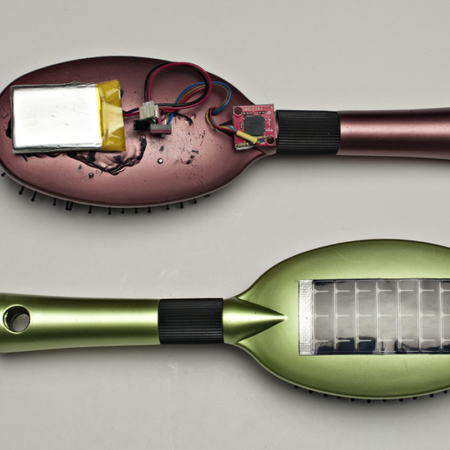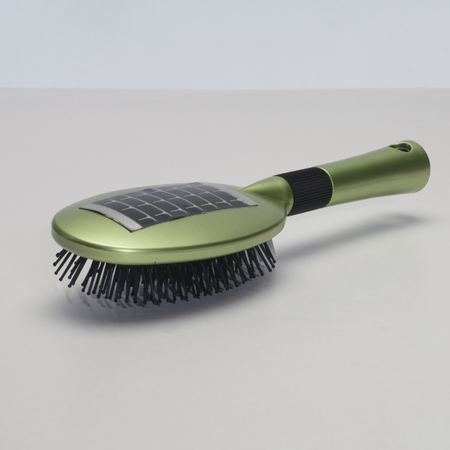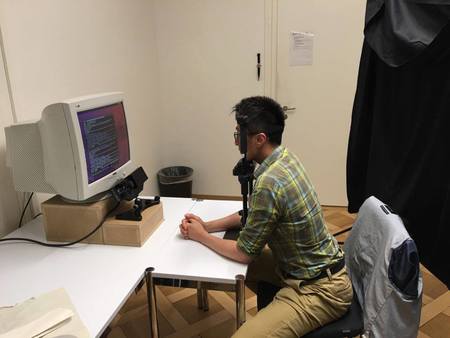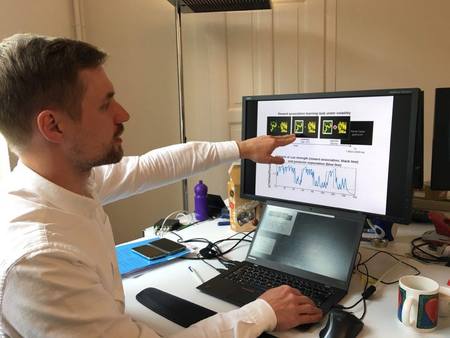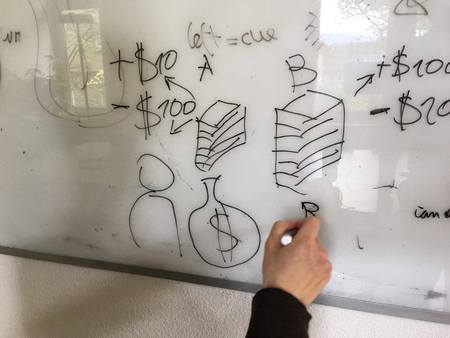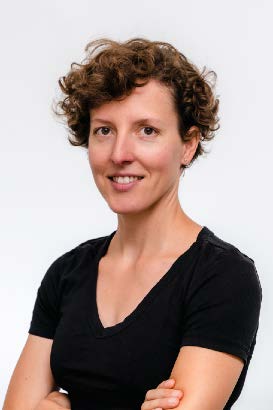
upcoming
Master Series Residencies 2026
Residency Program
Master Series
The Master Series Residencies offer ZHdK MA students from all departments the unique opportunity to work together with scientists for 3 months and to develop an artistic project. Interested students can apply for two annual residencies.
The Master Series residencies are curated and organized by the artists-in-labs program in cooperation with the Master Transdisciplinary Studies.
The framework of the residency opens the possibility for an in-depth transdisciplinary dialogue stimulated by the confrontation of different concepts and procedures, cultural knowledge and background. The residency provides the student with time and space to develop and critically reflect on a project and to learn about a range of scholarly topics, methods, and technologies.
During the residency, the student has access to the research as a team member and develops his/her project in close exchange with the scientific team. There is also the possibility to further develop the residency project as a master thesis in consultation with the head of the study program or the head of the specialization.
A contact person at the institute takes care of the student's needs; in addition, regular individual mentoring sessions with the project team (AIL/MTR) accompany the artistic research and work process.
National projects
The artists-in-labs program is part of the Department for Cultural Analysis of Zurich University of the Arts and explores since 2003 current discourses between Art and Science.
We consider the worldwide interest on Art and Science as a specific curatorial and cultural practice. By means of exhibitions, conferences, workshops and books we intend to engage the public with this practice .
With our long-term residencies for artists in science labs we intend to deepen findings, approaches and problems and to create the necessary space for joint work and mutual exchange.
International projects
The artists-in-labs program International Residency Exchange projects aim to build up international networks in Art and Science with the goal to establish sustainable and long-term collaborations between scientific and cultural institutions worldwide.
Our international art-science residencies in science laboratories provide artists with the opportunity to engage with scientists for several months on a global scale. The (cultural) setting and framing as well as the historical traditions are responsible for results in the sciences and in the arts. Therefore the possibility of a transcultural and transdisciplinary dialog and by juxtaposing concepts and procedures of different countries and knowledge cultures, offers a significant room to reflect on ideas and ideologies of the other, the foreign or the unfamiliar, and to explore a range of scientific topics, methods and technologies as well as the site of the laboratory, in renown science laboratories worldwide.
artists-in-labs South African - Swiss Residency Exchange
In 2018, as part of the artists-in-labs South African - Swiss Residency Exchange, artist and designer Vanessa Lorenzo exchanged with astronomers from the South African Astronomical Observatory SAAO in Cape Town and Sutherland, and artist George Mahashe with astronomers from the Astronomy Department at the University of Geneva.
In 2021, the Javett Art Centre at the University of Pretoria and the website javettup.art will host the exhibition "Interfacing New Heavens," featuring artistic works and research materials created during the residencies.
artists-in-labs KAUST-Swiss Residency Exchange 2016 - ongoing
The artists-in-labs KAUST-Swiss Residency Exchange is a collaboration between the Zurich University of the Arts (ZHdK)/ Department for Cultural Analysis, the King Abdullah University of Science and Technology (KAUST)/ Office of Enrichment in Thuwal, the Swiss Federal Institute of Aquatic Science and Technology Eawag in Dübendorf, the Swiss Federal Institute for Technology ETH in Zurich, the Swiss Arts Council Pro Helvetia Zurich and Pro Helvetia, Cairo Office.
Six artists have participated in artists-in-labs KAUST-Swiss Residency Exchange since 2016 (as of June 2020)- 2 residencies for a three-month period in scientific research groups on the topics of ecology and the Red Sea at KAUST in Thuwal, Saudi Arabia in 2016
- 2 residencies for a three-month period in scientific research groups on the topics of Alpine water and Microbiology at Eawag in Zurich, Switzerland in 2017
- 1 residency for a three-month period in a scientific research group on the topic of Computer Vision at KAUST in Thuwal, Saudi Arabia in 2018
- 1 residency for a three-month period in a scientific research group on the topic of Material Science at ETH in Zurich in 2019
Russian-Swiss Residency Exchange
Claudia Comte (CH) and the Urban Fauna Laboratory collective (RU) were selected by the jury as artists in lab for the Russian-Swiss Residency Exchange 2015!
The Russian-Swiss Residency Exchange is supported by the Swiss Arts Council Pro Helvetia "Swiss Made in Russia"
Sino-Swiss Residency Exchange
Documentary:
Aline Veillat - Institute of Mountain Hazards and Environment (IMHE) Sichuan, China
Alexandre Joly - Chengdu Insitute of Biologie (CIB) Sichuan, China
Aniu - Swiss Federal Institute of Aquatic Science and Technology (EAWAG), Dübendorf, Switzerland
Liao Wenfeng - Swiss Federal Institute for Forest, Snow and Landscape Research (WSL), Birmensdorf, Switzerland
Indo-Swiss Residency Exchange 2011 - 2013
Documentary 2011/2012:
Surekha Anil Kumar - Swiss Federal Institute of Aquatic Science and Technology (EAWAG), Dübendorf, Switzerland
Adrien Missika - National Center for Biological Sciences (NCBS), Bangalore, India
Documentary 2012/2013:
Neha Thakar - Swiss Federal Institute of Aquatic Science and Technology (EAWAG), Dübendorf. Switzerland
Dominique Lämmli - National Center for Biological Sciences (NCBS), Bangalore, India
Art
Artists
Al Salem Nasser 2019
Institute/Lab: Complex Materials Group, Department of Materials, ETH Zürich
Artistic background: Calligraphy, Sculpture, Multimedia, Installation
Scientific Discipline: Material Science
Biography
Artist Nasser Al-Salem (*1984) lives and works in Jeddah. His artistic work is essentially the Arabic written word, therefore he is first and foremost a calligrapher. His practice pushes the boundaries of this age-old Islamic art by re-inventing it in non-conventional mixed media forms, by using a wide range of tools and materials (such as wood, paper, ink, concrete, glass, lighting technology, silk etc.) and by exploring its conceptual potential.
His exploration of concepts relate to scale, the human and the infinite (or our current perception of the infinite). These concepts aim to reflect on the condition of time, space and the universe as a system that is beyond all religious and profane components.
Project
The sixth artist to participate in the artists-in-labs KAUST-Swiss Residency Exchange since 2016, Nasser Al Salem worked and exchanged with researchers of the Complex Materials Group, Department of Materials, ETH Zürich for a 3-months period in spring 2019.
Alghamdi Zahrah 2017
Institute/Lab: Stream Ecology Group
Scientific Discipline: Ecology
Biography
Zahrah Alghamdi grew up in south-western Saudi Arabia. She graduated in Design and Visual Arts at Coventry University in the UK and is currently employed as assistant professor at the Faculty for Art and Design at the King Abdulaziz University in Jeddah.
Her work is inspired by traditional, artistically decorated architecture. This architecture reflects the cultural traditions and the history of Saudi Arabia. In her work as an artist, she draws on her memories of these rooms and their cultural significance. Alghamdi forges links between history and the modern-day world by trying to create an echo of the past whilst throwing light on the changes in architecture that have moved it away from traditional techniques, materials and resources.
Project
During her residency at Eawag, Zahrah Alghamdi has accompanied the Stream Ecology research group on three excursions to the Roseg Valley in the Engadine. Taking her inspiration from the activities of the scientists in the midst of the mountain terrain with its countless rivers and streams, she captured her impressions in the form of works that make use of found materials, directly intervening in the landscape. She created the pieces either by hand or using simple tools, and made use of materials that she mostly picked up in the Roseg Valley — such as sand from a river bank, or dried plants. This process enabled Alghamdi to tune in to an unfamiliar landscape and leave her own imprint on it while at the same time offering up these imprints to the effects of impermanence. Having been documented in a series of photographs, the works represent a moment in time, as do the scientific data collected in the Roseg Valley.
Aniu 2009/10
Institute/Lab: Eidgenössische Anstalt für Wasserversorgung, Abwasserreinigung und Gewässerschutz (Eawag), Dübendorf ZH
Scientific Discipline: Aquatic Ecology
Biography
Aniu was born in 1969 in Guangdong Province and graduated from Shanghai Light Industry Institute in 1993. Today he lives and works in Shenzen (Guangdong Province). Aniu is a member of the French agency VU and has exhibited his works in China as well as in Denmark, France, Belgium, Italy, Singapore, Hong Kong and Australia. His book “Times of Fantasy” was published in 2007.
Project
After the first months of research on the lab's topics, methods and communication, Aniu started to develop his artistic project. Observing the world of small organisms under the microscope and after extensive experiments with liquids, Aniu merged his interest for the science itself with his interest for the scientists. Inspired by the inner-lab communication network he developed a questionnaire. He distributed it to more than 300 scientists at EAWAG, asking questions on love, happiness and future. He got back one answer from each scientist participating, on small sheet of paper and in the respective mother tongue. Aniu placed each of this handwritten notes in a small dish, filled in water with small aquatic animals in it and put it under a microscope. Under the influence of the water and the animals, the messages vanished over time. The artist documented this process with text and photographs; the documentation was finally published in the book "When Small Sees Big".
Azkoul Michael Jad 2025
Institute/Lab: Eawag
Artistic background: Rap, poetry, writing
Scientific Discipline: Drinking Water Microbiology
Biography
Michael Jad Azkoul (*1990) lives and works in Geneva. Known by the stage name "Dr Koul", he is active as a rapper, poet, author, martial arts instructor and massage therapist. His most recent production was a book and album entitled "Prophet of Doubt".
Hailing from an international background (Lebanese-American and Anglo-Uruguayan), he has always considered himself a freethinker, passionate about pluridisciplinary approaches to what he perceives as universal themes.
Sometimes political, sometimes philosophical, Dr Koul's music combines "conscious" Hip Hop with jazz and traditional instrumentation, and he is most recognized as being one of the lead vocalists of Captains of the Imagination, a Geneva-based, English-speaking rap group.
Bojanowski Marie-France 2011
Institute/Lab: Native Systems Group (NSG), ETH Zürich
Scientific Discipline: Computer Science
Biography
Marie-France Bojanowski is an artist from Montreal based in Zurich since 2006. She has been active at the crossroads of art, design, filmmaking and information technology for more than 20 years. Marie-France privileges a transdisciplinary creative process where ideas can be challenged from different human, social, cultural and scientific perspectives.
She is a founder and artistic director of Montreal-based collective Farine Orpheline (1996-2006) with who she conducted various time-based storytelling projects internationally in city neighbourhoods, derelict factories, museums, psychiatric hospital and boat. These include soundwalks, performed installations, exhibitions and media devices. Marie-France created >100 short and medium documentary films for North-American and European channels, as well as media installations for scenic purposes.
Project
Marie-France developed an immersive panoramic experience with photography and brain-interaction using EEG sensors. This led her to ideate a tangible media for haptic neurofeedback, a research project that was granted funding from the Hasler Foundation to develop a prototype with ETH engineers. She is currently pursuing this research on haptic interaction with an object aiming at enhancing our connection to the present moment.
Boulos Mark 2015
Institute/Lab: École polytechnique fédérale de Lausanne EPFL, Brain Mind Institute, Laboratory of Cognitive Neuroscience
Scientific Discipline: Neuroscience
Biography
The video artist Mark Boulos lives and workes in Amsterdam and Geneva. He works across documentary filmmaking, multi-screen video installation, photography, digital interactive art, drama, animation and virtual reality.
Charrière Julian 2021
Institute/Lab: Red Sea Research Center
Artistic background: Performance, Sculpture, Photography, Film
Scientific Discipline: Marine Biology
Biography
Julian Charrière (b. 1987, Morges, Switzerland) is a French-Swiss artist based in Berlin. His work bridges the realms of environmental science and cultural history. Marshalling performance, sculpture and photography, his projects often stem from fieldwork in remote locations with acute geophysical identities – such as volcanoes, ice-fields and radioactive sites.
To date, his works has explored post-romantic constructions of ‘nature’, and staged tensions between geological timescales and those relating to humankind. Charrière’s approach further reflects upon the mythos of the quest and its objects in a globalised age. Deploying seemingly perennial imagery to contemporary ends, his interventions at the borderline of mysticism and the material discus our fraught relations with place today.
Project
For three months in spring 2021, Julian Charrière joined scientists of the Red Sea Research Center at KAUST. Exploring a broad range of research, Julian’s conversations with the scientists revolved around the (bio)diversity and resilience of the Red Sea coral reef and its inhabitants, the aesthetics and functionalities of underwater landscapes – natural and artificial ones – as well as concepts and processes from his practice as an artist.
A special focus was set on field trips to a number of coral reefs, as a tool for scientists and artists to study the maritime environment, for cross-disciplinary exploration and the shift of perspectives. The complexity of the coral reef ecosystem, its economic and cultural implications on coastal societies will provide ground for further and extended explorations – for the scientists as well as for Julian.
Codourey Monika 2008
Institute/Lab: The Human Computer Interaction Lab (HCI-LAB), Universität Basel
Scientific Discipline: Cognitive Psychology and Methodology
Biography
Monika Codourey (-Wisniewska) is a registered architect in Warsaw/Poland and Berlin/Germany. She has received her degree in Architecture from the University of British Columbia in Canada. She pursued her postgraduate studies in the field of Information Architecture at the Department of Architecture, ETH Zurich and participated in VI Bauhaus Kolleg in Dessau in Germany. The range of her transdisciplinary projects combines her interests in Architecture, Urbanity and creative and critical use of ICT (information and communication technologies) for social/urban design.
The focus of her recent works lies on the relations between changing spacio-temporal structures of contemporary city and electronic networks. These relations she understands and investigates as hybrid action, intervention and possible places for socio-cultural production of information society. In particular she investigates transformation of socio-spacial mobilities in transit spaces such airports. She creates research-based works around spaces of `kinetic` subjects of different national and social status.
Comte Claudia 2015
Institute/Lab: Institute of Plant and Animal Ecology of the Ural Division IPAE, Russian Academy of Sciences
Artistic background: Sculpting, Installation
Scientific Discipline: Dendrochronology
Biography
Claudia Comte grew up near Lausanne and lives and works today in Berlin. Her work is defined by her interest on the memory of materials and by a careful observation of how the hand relates to different technologies. Her body of work is best known for her site-specific installations. Claudia's practice is guided by a distinct rule-measurement system of her own creation, wherein each artwork specifically relates to one another. Her minimalist approach to art making is equal parts methodical and dynamic; works are infused with a distinct sense of playfulness. Claudia's artistic output incorporates a diverse range of mediums from sculpture, to painting, to various multimedia installations.
Project
Claudia Comte explored the IPAE’s research activities in the reconstruction of past climatic conditions using ultralong tree-ring chronologies, ecological studies of the upper and polar tree-line dynamics in Ekaterinburg. Her artistic investigation evolved around the tensions and forces the wood is submitted to in its natural habitat and in her artistic process with the wood as working material. Claudia joined the scientists on their field trips to the Ural region and also explored their research in the Laboratory of Dendrochronology.
Della Giustina Christina 2011
Institute/Lab: Eidgenössische Forschungsanstalt für Wald, Schnee und Landschaft (WSL), Birmensdorf ZH
Scientific Discipline: Ecology and Environment
Biography
Christina Della Giustina lives and works in Amsterdam. She studied Philosophy, Art History, and Linguistics at the University of Zurich; and Fine Art and Political Theory at the Jan van Eyck Academy Maastricht. Her trans-disciplinary artistic practice includes site-specific work with live and/or interactive audio-, video-, and light, performance, composition, drawing and writing. She focuses on translating the data from specific sites into artistic notations that are conceived to be interpreted and experienced in the form of a collective enactment of the site. The resulting performance re-creates the site as sensory event and calls for questions that cross disciplines about our ways of being with ourselves and the world, and that modify the “self” related to the site. She is currently a lecturer in Fine Art at HKU University of the Arts Utrecht and enrolled in a practice-led PhD program at Slade School of Fine Art, UCL, London.
Project
From the beginning of the residency on the artist collected the documents, imageries and ideas she gathered. Three books stem from this notes. They collect information on the three species in the form of basic scientific facts on: soil, roots, and their interactions; on stem anatomy, morphology, and architecture; and on leaves and their gas-exchange with the air. Daily thoughts and observations Christina made while working build additional layers. This collection has an experimental approach, in the overlap and intertwining of images, data, and texts from different - although related - sources, in search for yet unknown connections, relationships, and sense.
Drill Hannah 2020/2021
Institute/Lab: Dalle Molle Institute for Artificial Intelligence IDSIA
Artistic background: Acting
Scientific Discipline: AI & Robotics
Hannah Drill is an actress and performance artist from Berlin. She has been studying acting in the Master Theater program at Zurich University of the Arts since 2019.
In her young career she has intensively explored questions about living together in a community and would like to continue to explore interpersonal issues in particular and expand them as research that can be experienced aesthetically. An important step in her professional work, for example, was her involvement in the project "Intimate Strangers" with the group "Welcome Project". There, in an intensive collaboration, the relationship between closeness, distance and borders in the broadest sense was explored and realized performatively. Borders in this context meant country borders, but also physical and interpersonal borders.
Hannah Drill spent three months – July 2020, January and February 2021 - at IDSIA in Lugano, pursuing her Master Series Residency on Robotics & AI. In exchange with researchers of IDSIA, Hannah explored questions and developments on the interaction of humans and machines in the present and future.
An important part of her explorations into AI & Robotics research was the question of intimacy and how we humans could envision a future living in close relation with machines. Discussing her questions with Alessandro Facchini – Logician -, Alessandro Giusti – Professor of Artificial Intelligence for Autonomous Robotics -, and Luca Gambardella – Professor of Computer Science -, Hannah Drill developed a script for a short film, which was then shot at the Robotics Lab of IDSIA.
https://www.schauspielervideos.de/fullprofile/schauspielerin-hannah-drill.html
Forcucci Luca 2009
Institute/Lab: Brain Mind Institute (BMI), EPFL Lausanne
Scientific Discipline: Neuroscience
Biography
Luca Forcucci’s research observes the perceptive properties of sound, space and memory. The field of possibilities of the experience is explored as the artwork. In this context, he is interested in perception, subjectivity and consciousness.Please visit our website in German for more information.
Luca Forcucci achieved a PhD in Sonic Arts from De Montfort University and a MA in Sonic Arts from Queens University of Belfast. The research was further conducted at University of the Arts of Berlin, INA/GRM Paris (Institut Nationald’Audiovisuel/Groupe de Recherches Musicales) while investigating at Bibliothèque Nationale de France François Mittérand, and at the Brain Mind Institute in Switzerland to explore cognitive neuroscience of out-of-body experiences. He regularly lectures at Universities (USP São Paulo, UFRJ Rio de Janeiro, URC California, UdK Berlin, ZhDK Zürich, EPFL Lausanne, SIVA Shanghai).
Project
Inspired by a sound installation by Alvin Lucier from the 1960s, Luca Forcucci devoted himself to music production controlled through brain power. Starting from the microscope image of a neuron, Forcucci tried to convert the visuals into an acoustics. The sound sculpture "Kinetism" was created during his stay at the Brain Mind Institute (BMI), EPFL Lausanne, and investigated the perception of our daily sound spaces. It highlighted the difference between the concept of hearing, a physiological ability, and the concept of listening, a psychological act (Roland Barthes, 1985). "Kinetism" invited the listeners to follow a sound walk that makes the dialectic between the internal and external perception of space audible through sound: the sound of one's own body (internal acoustic space), which predominantly takes place unconsciously, and the noise of the city (external acoustic space). The sound installation dealt with the question of how we perceive our body and gave the visitor a sort of "out of body experience".
Gindre Jérémie 2011
Institute/Lab: Geneva Neuroscience Center (CIN) and Swiss Center for Affective Sciences (ICAS), Université de Genève
Scientific Discipline: Neuroscience
Biography
Jérémie Gindre (b. 1978) works as an artist and writer in Geneva. He studied in Geneva at the University of Art & Design HEAD. He is particularly influenced by aspects of geology, archaeology, conceptual art, neuroscience, apiculture and tourism. His mediums are diverse – novels, short stories, essays, articles, comic strips and photographic novels.
Project
Jérémie began his residency at the Swiss Center for Affective Sciences and the Geneva Neuroscience Center researching the scientists' core topics and scientific language. Through daily conversations with the scientists and conference visits he learnt about neuroscience, especially about perception, spatial disorders or amnesia. At this point of the residency he filled notebooks with informations, concepts and curiosities from the labs. After this first three months he wrote three short stories, one of them about Visual Neglect. This spatial disorder, often caused by a stroke, means, that the brain receives information but can't process it - the information is being neglected. The artist discussed his stories with the researchers to get feedback on certain scientific background but also on the stories itself. The exchange expanded so that Jérémie started to discuss art history and references in contemporary art with the scientists; he invited them to his studio and went to exhibitions with them. Jérémie later contributed to a book published by the lab. One of the short stories finally made it into a book, too: Un Trou Célèbre was published in 2013 at Motto, Berlin.
Gonzenbach Christian 2009
Institute/Lab: Séction de Physique, Université de Genève / CERN
Scientific Discipline: Physics
Biography
Christian Gonzenbach was born in Geneva in 1975, where he currently lives and works, too. He received a bachelor's degree in Design at the Haute école d'art et de design (HEAD). He subsequently earned a master's degree in Fine Arts at the University of the Arts in London (UAL). His work, which includes sculptures, installations and videos, consists in the transformation of ordinary things and everyday objects. As an attentive observer, he often begins his work with an everyday situation, an insignificant state, or an ordinary object. He explores the potential of these elements to create a tragic or ironically broken environment.
Project
Christian Gonzenbach explores new ways to look into everyday things. During his stay at CERN, he was interested in accesses to the unpredictable and invisible around us. He felt the incentive to initiate a perceptual change by a changing look on knowledge. This led to the question of how quantum physics can influence our everyday life. The artist created his works based on experiments and displayed them in a black room in the entrance hall of the university. Among them was the work QUARC ("Quantum Art Cloud"). This mechanical random generator symbolizes the interplay of particles with the surrounding space, creating unforeseen phenomena. The iglu-like structure of more than a hundred neon tubes, connected by 1.5 km of cable, contains in the middle a kind of brain, which is constructed of magnets and CDs and controls the neon tubes. While the mechanics of the construction follow an exact rhythm, the neon tubes are switched on and off in a random manner. QUARC's neon tubes are similar to a Newtonian movement, leading to a quantum situation.
Griesmar Marie 2016
Institute/Lab: King Abdullah University of Science and Technology KAUST, Red Sea Research Center, Reef Genomics Group
Scientific Discipline: Red Sea Ecosystem
Biography
Marie Grismar is an artist from Lausanne, Switzerland. In her artistic practice she focuses on water and the underwater world: the complexity and poetry of water is a major inspiration for her work. Marie has been diving since the age of nine and is a devoted observer of the marine life since then. Thanks to her diving skills she has come to understand water as a new space of creation.
Project
From the artist's website: "This project has been developed during a three months residency in KAUST, Jeddah, Saudi Arabia, organized by the artists-in-labs program. My residency at KAUST has given me an invaluable opportunity to learn in detail about the habitat of corals, and therefore the necessary requirements for durable artificial coral structures. I worked closely with both the marine scientists and the lab staff, learning from their research, exchanging ideas and theories, and joining them on field trips.
What inspired me to design these sculptures is the different patterns and geometrical forms which can be observed in corals, sponges and other organisms that constitute reef environments. I analysed the shapes –from their molecular bases to their resulting final structures– and then I interpreted them into sculptures. The chosen material to build them is clay. When burnt, clay offers a great adherent surface upon which corals can prosper. Furthermore, the shapes I conceived provide natural protective spaces in which a variety of organisms can find secure and comfortable dwellings. By organizing and combining the sculptures together in space, I created a new form of an artificial reef."
Hostettler Sylvia 2008
Institute/Lab: Centre for Integrative Genomics (CIG), Université de Lausanne
Scientific Discipline: Molecular Biology
Biography
Sylvia Hostettler was born in Biel in 1965. She currently lives and works in Bern. She studied at the Bern University of the Arts (HKB), with a focus on sculpture. Her artistic work is devoted to the invisible or barely visible. Excursions in nature have always served her as a source of inspiration. Over the years, these journeys guided her through diverse landscapes: the Swiss Alps, Iceland, and as an artist-in-lab into the world of research. These explorations have become "performing walks" and "philosophical reflections". The cycle "Landscapes" emerged from the journeys. A main area of Sylvia Hostettler's work is the sculptural object. It is often integrated into space-encompassing installations, consisting of different artistic media.
Huber Sandra 2010
Institute/Lab: Center for Integrative Genomics (CIG), Université de Lausanne
Scientific Discipline: Molecular Biology
Biography
Sandra Huber is a Swiss-Canadian poet and writer. She lives and works in Montreal. She completed a Master's degree in Creative Writing at the University of Toronto and was editor-in-chief of Dear Sir, an online magazine for experimental literature. In addition to short stories, the author continues to devote herself to poetry. For several years, she has dealt intensively with the theme of sleep, its history and importance.
Project
Sandra Huber was able to deepen her previous literary investigation on sleep at the Center for Integrative Genomics (CIG) and at the sleep lab at CHUV, University of Lausanne. The findings of scientific sleep research, in particular the fact that sleep is a very active state, has been a reflection of many poet's longstanding interpretation of sleep as a death-like condition. She made herself available as a subject in the sleep laboratory, where the electrical activity of her brain during sleep was measured with electroencephalogram (EEG). The artist overwrote the recorded data, which is presented in the form of waves, with her own poetry. "Assembling the Morrow" is a long poem written directly on Sandra Huber's brainwaves. The recorded waves can scarcely comprehend the abundance of language - like the language can not grasp images from dreams. Through her work the artist interpreted the state of sleep, which until then had been understood as passive, as very active and allowed a poetic access to scientific data.
Joly Alexandre 2010
Institute/Lab: Chengdu Institute of Biology (CIB), Sichuan, China
Scientific Discipline: Ecology and Environment
Please visit our website in German for more information.
Jotzu Priscille 2021
Institute/Lab: IBME, URPP Dynamics of Healthy Aging, Memory Clinic of Stadtspital Waid
Artistic background: Speculative Design, Tangible & Creative Innovation, Prospective & Strategic Research
Scientific Discipline: Biomedical Ethics, Philosophy, Sociology, Psychology, Neuroscience
Biography
Priscille Jotzu (*1990) is a French born designer, artist and researcher. She lives and works in Zurich. With a perspective focused on experimentation, conceptual thinking and research into a singularity, she investigates our relation to the daily mundane artefacts, more specifically through the spectrum of the lower senses. She completed her education within the design department of the Beaux-arts school of Angers, France (BA and MA Object Design) as well as at Zurich University of the Arts (MA Trends&Identity) where she studied strategic and visual design, trends and future forecasting and empirical social research. Her expertise range from creative consultancy with a focus on scents and materials, creation and production of custom-made objects and set design as well as future research with focus on innovation, prospective objects and design fiction. She works both on commissioned and self-initiated projects in the scope of design and art, producing one-of-a-kind artefacts and speculative objects that aim to stretch the narratives of the real and give space to our imaginaries.
Keller Roman 2007
Institute/Lab: Paul Scherrer Institute (PSI), Villigen
Scientific Discipline: Energy and Environment
Please visit our website in German for more information.
Kühne Sandra 2016
Institute/Lab: King Abdullah University of Science and Technology KAUST, Red Sea Research Center, Integrated Ocean Processes Research Group
Scientific Discipline: Red Sea Ecosystem
Biography
Sandra Kühne is an artist living and working in Zurich, Switzerland. She is inspired by novels, sentences and charts which describe relations and interdependence between body, space and interruption of action. In her drawings, cut outs and installations, which are mainly made from paper, Sandra leads two-dimensionality into three-dimensionality; she describes her artistic practice as a way of doing cartography.
Project
Focusing on the Red Sea coral reefs during her artists-in-labs residency at the Integrated Ocean Processes Research Group at the Red Sea Research Center, she looked for ways to show themes of interaction, balance and symbiosis through her art.
Kumar Surekha Anil 2011/12
Institute/Lab: Eidgenössische Anstalt für Wasserversorgung, Abwasserreinigung und Gewässerschutz (Eawag), Dübendorf ZH
Scientific Discipline: Aquatic Ecology
Please visit our website in German for more information.
Lämmli Dominique 2012/2013
Institute/Lab: Adaptation Lab, National Center for Biological Sciences (NCBS), Bangalore, India
Scientific Discipline: Biology
Please visit our website in German for more information.
Lang Pe 2007
Institute/Lab: Centre Suisse d' Electronique et de Microtechnique (CSEM), Alpnach
Scientific Discipline: Micro- and Nanotechnology
Please visit our website in German for more information.
Lorenzo Vanessa 2018
Institute/Lab: South African Astronomical Observatory SAAO
Artistic background: Design, Biology, Media
Scientific Discipline: Astronomy
Biography
Vanessa Lorenzo (*1985 in Barakaldo, Spain) lives and works in Lausanne. She holds an Engineering Degree in Product Design (Mondragón Unibertsitatea, 2008) a Post-Grade in Product Conceptualization and Development (Elisava, Barcelona, 2010) and a Master of Media Design (HEAD-Genève, 2016). Besides her artistic and design practice she is an independent researcher at Hybridoa and co-president of the Hackuarium biohackerspace in Renens. She organizes collaborative workshops about critical, speculative and biological design, often with Hackuarium, Utopiana Geneva or Hackteria. She also collaborates with the Open Science School (CRI, Paris) and EFPL (Bioinspired Lab).
Her practice is situated at the intersection of Media, Design and Biology. She creates fictional scenarios to contextualize the use of technology and DIY Biology through imagined objects; hybrid ecologies that usually embed the radical poetry of the more-than-human in order to affect the perception of our environment. She researches about the potential of design to influence the social imaginary. Based on that research Vanessa seeks to discover and develop non-anthropocentric landscapes and alternative futures. Also, she nourishes (from) and believes (in) the "middle-ground" (communities of hackers / artists / citizens working in alternative spaces), that, from Vanessa’s point of view, has the power to subvert the dominating role of traditional science and technology spheres. Vanessa believes that this could lead to a more inclusive knowledge production.
Project
Lorenzo started a project conducting artistic research about asteroids as metaphorical “ambassadors” of the big bang and how matter was concentrated in one point at the “beginning of time”. Drifting through space and time since the big bang, asteroids not only tell stories of the universe, they also symbolically connected to rocks on earth. Linking her practice in speculative design and narratives of the so called “more-than-human” (as an idea of including all species and matter that our environment consists of as a part of one sensing and feeling entity). During her residency, Lorenzo mainly collaborated with astrophysicist Nicolas Erasmus.
The data she collects from asteroids (they are constantly radiating) laid the foundation for the sound installation “Always Calling Home” which was made with the rocks from the Karoo desert (where the SALT-telescope is located), sensors, computer interfaces and a laptop. The Karoo desert as the home of the Koisan people adds another layer: ancestral knowledge about the skies, embedded in rituals including the use of rocks as instruments, informs the concept of Lorenzo’s installation as a carrier of stories.
The installation was further developed after the 3-month residency at her studio in Lausanne, and later in autumn 2019 at the Fak’ugesi residency in Johannesburg. Lorenzo links “Always Calling Home” with her research on rocks from the Alps, thereby bridging aspects of the (cultural) landscapes of Switzerland and South Africa through her artistic practice.
Mahashe George 2018
Institute/Lab: Astronomy Department, University of Geneva
Artistic background: Photography
Scientific Discipline: Astronomy
Biography
Cape Town based artist George Mahashe (*1982, Bolobedu, South Africa) operates within the wider field of photography, particularly at the intersection of photography, anthropology, Balobedu archives, artistic practice and recently astronomy. He holds an MA in Fine Art from the University of Cape Town, where he also obtained PhD in Fine Arts.
With photography as his focal point, George looks at the imagination manipulation and restoration of history. He is interested in photography's ability to foster dialogue between people, young or old, rural or urban. He argues that people tend to open up and respond when a photograph is presented because we all have an experience of photography, either as the subject, the photographer or as the viewer/audience. It is this quality that fascinates him and compels him to strive towards an understanding of what is it about photography that makes it so. His recent work focusses on the camera obscura as a medium to metaphorically dissociate photography from its traditional cultural context since its invention in 1839. George is particularly interested in how photography is implicated in almost all visual arts practices, and its ability to transgress between the different disciplines of art and the wider humanities. Besides his artistic practice he regularly contributes to academic conferences and symposia, and lectures in fine art and anthropology at Wits University. George was the convenor of the "Defunct Context", which is a curatorial proposition at the Department of Social Anthropology ‘s ethnographic museum at Wits University and is currently teaching at Michaelis School of Fine Art in Cape Town.
Project
For his residency in the framework of the artists-in-labs South African-Swiss Residency Exchange 2018 he worked in close collaboration with researchers of the University of Geneva’s Astronomy Department in Versoix where he became inspired by the realization that Astronomy is not only about seeing the stars but also designing instruments that allow you to observe what is it that you are searching for. Within this concept he collaboratively developed a copper disk that functions as an object for scientific and spiritual observation.
Missika Adrien 2011/12
Institute/Lab: National Center for Biological Sciences (NCBS), Bangalore, India
Scientific Discipline: Biology
Please visit our website in German for more information.
Mnatsakanian Alina 2009
Institute/Lab: Istituto Dalle Molle di Studi sull’Intelligenza Artificiale (IDSIA), Lugano
Scientific Discipline: Robotics
Please visit our website in German for more information.
Moss Miranda 2017
Institute/Lab: Swiss Federal Institute for Forest, Snow and Landscape Research WSL
Scientific Discipline: Phytopathology and Funghi
Biography
Miranda Moss was born in 1990 in Cape Town, South Africa. She is a multi-disciplinary artist whose practice toys with the representation of Nature as a pure and extra-cultural phenomenon. Landscape, an idea inseparable from convention, is used as a medium to explore how personal, economic and visual value structures are projected onto the exterior world. Often employing a process that could be described as techno-alchemy, her works combine sublime, magical elements with everyday, banal ones by frequently incorporating found objects and ephemeral, natural processes.
Project
Investigating invasive alien plants and fungi as markers of globalisation and colonialism, Miranda Moss has been paying particular attention to the exchanges of neophytes between Europe and South Africa during her artists-in-labs residency at the Swiss Federal Institute for Forest, Snow and Landscape Research WSL this spring. In WSL's phytopathology lab the artist has been focussing on pathogenic fungi and microbes which are seemingly invisible but hugely efficient at spreading and can have devastating effects on the environment.
Moss has delved into the historical narratives surrounding these organisms and considers the extent to which they are able to convey pressing socio-political issues of the present.
The artist has been especially interested in working with armillaria spp. or the honey fungus, which is native to Switzerland but has become a problem as trees face more stress due to climate change. On the other hand in South Africa, a European strain of armillaria has been discovered in the historic Company’s Garden in Cape Town. This organism, which has grown to the size of the entire garden, and has very recently been found spreading to the fragile ecosystem that exists on the Cape Peninsula, is believed to have colonised Cape Town along with the first European settlers — even being referred to as «Van Riebeeck’s Curse».
The 2017 artists-in-labs residency of Miranda Moss at the WSL is a collaboration project between the artists-in-labs program and Pro Helvetia.
Ottiger Nicole 2010
Institute/Lab: Brain Mind Institute (BMI), EPFL Lausanne
Scientific Discipline: Neuroscience
Please visit our website in German for more information.
Potemkina Anastasia 2015/2016
Institute/Lab: Swiss Federal Institute for Forest, Snow and Landscape Research WSL, Phytopathology Group
Artistic background: Performance, Installation
Scientific Discipline: Plant pathogens
Biography
Urban Fauna Laboratory is a collective formed in 2011 in Moscow by the artists Alexey Buldakov and Anastasia Potemkina. The group acts as a multidisciplinary platform engaged in the exploration of parasitic and symbiotic relationships in the urban environment and their associated adaptations. The artists investigate cultural status of animals and plants, and the economic, architectural, and political implications of cohabitation between species in the city beyond traditional notions in ecology. Anastasia Potemkina represented Urban Fauna Lab at WSL.
Project
Anastasia Potemkina explored WSL’s research on invasive pathogens and their effects on the ecosystem. Her artistic work emerged from the collaboration with the scientists and revolved around their main research topics, while she further explored the Urban Fauna Lab’s ongoing investigations into the social status of animals and plants. Her main focus lied on the networks of funghi and the artistic connotations. Final act of her residency was a live-cooking session and presentation with the WSL researcher Simone Prospero at the Cultural Pavilleon in Zurich.
Prezant Natania 2024
Institute/Lab: Emotion Regulation: ADHD and borderline personality disorder
Artistic background: Performance, theatre
Scientific Discipline: Psychiatry, Psychotherapy
Biography
Natania Prezant (*1993) pursued her first interdisciplinary degree in International Relations, specializing in Economics, which has very much informed her artistic practice and methodologies. She obtained a Master degree in Theatre - Dramaturgy at ZHdK in 2021.
She likes to pick out methods from one discipline, and reinsert them into another, observing the resulting shifts in perspective and habit. These past few years she has been specializing as a dramaturg, remaining in the ambiguous zone between theory and practice, piece and audience, from whence she focuses on designing and accompanying group processes, mediation and accessibility, on attention and sensation. Much of her practice is influenced by a strong, early interest in bodies and dance.
Many of her working and communication habits are informed by years of leading and teaching youth groups and theater workshops. Today she works primarily at the intersection of music and theater, as well as programming for a multidisciplinary festival, f.ex. with the ‘raucous babies’ (ZH, raucous-babies.ch), the ‘collectif barbare’ (AG, collectif-barbare.ch), or at ‘Le Castrum’ (VD, le-castrum.ch).
Project
In the context of her Master Series Residency at the Emotion Regulation Group, University Hospital, University of Geneva , Natania pursues her artistic research into the topics of adult AD(H)D and the link between bodily sensation and attention, as well as the structuring of attention in contemporary dramaturgical practice.
Qiu Ping 2008
Institute/Lab: Eidgenössische Anstalt für Wasserversorgung, Abwasserreinigung und Gewässerschutz (Eawag), Dübendorf ZH
Scientific Discipline: Ecology and Environment
Please visit our website in German for more information.
Ramakrishnan Chandrasekhar 2008
Institute/Lab: Native Systems Group (NSG), ETH Zürich
Scientific Discipline: Computer Science
Please visit our website in German for more information.
Rickli Marcel 2023
Institute/Lab: Ecosystem and Landscape Evolution Group, ETH Zürich
Artistic background: Photography, Installation
Scientific Discipline: Interdisciplinary
Since 2011, Marcel Rickli (*1986) has been exploring the ways in which we are fundamentally changing our planet in an ongoing series of photographic field studies. The energy and resource requirements of humanity and their resulting environmental impacts, which are often severe and irreversible, form the leitmotif of his work.
In previous works, Marcel Rickli trained his camera on ore mining in Sweden, which results in massive land subsidence and has even caused the resettlement of an entire city (“Kiruna / 2015”), as well as on brown coal mining in Germany, to which entire landscapes are sacrificied (“Lausitzer Braunkohlerevier / 2015”).
New hopes in the fight against climate collapse have also caught his attention: pictures of the world’s largest wind farm in the Gobi Desert and a Chinese solar power plant that couldn’t be more futuristic illustrate what the energy revolution could look like (“Ambivalent / 2017 – 18”). Rickli’s work impressively captures an epoch in which humankind has become the most important influencing factor on our planet’s biological, geological and atmospheric processes: the Anthropocene.
Rothfuchs Tabea 2020
Institute/Lab: Centre for Pain Medicine Nottwil
Artistic background: Video, scenography
Scientific Discipline: Interdisciplinary, medicine, neurology, psychology,
Biography
Tabea Rothfuchs has been creating videos, media scenography and interactive installations for dance, opera and concerts for more then ten years. Engagements include the Theater an der Wien in Vienna, Austria, the Concert Hall in Berlin Germany, as well as the ballet company at Theatre Basel and the Zurich Opera House in Switzerland. Rothfuchs has been collaborating among others with the Catalan theatre collective La Fura dels Baus, Volksbühne Basel, Lydia Steier, Sebastian Nübling, as well as Sam Brown, Chris Kondek and Bryan Arias.
Project
Tabea Rothfuchs successfully completed her Master's degree in Transdisciplinary studies in summer 2020. She revised the concept for her Master Series Residency on chronic pain at the Centre for Pain Medicine Nottwil (Swiss Paraplegic Centre) within a very short time after the outbreak of the corona pandemic.
In addition to detailed, virtual interviews, she also conducted a performative quarantine interview session in front of the Swiss Paraplegic Centre. Over the course of four hours, she was sitting in an aerial scenographic object and, using a conference software, held talks with medical staff from the Centre for Pain Medicine and with pain patients who had virtually connected up from different parts of the world.
The master thesis also includes a publication with interview transcripts as well as texts that reflect on the topic of chronic pain and Tabea Rothfuchs' artistic process in the course of the corona crisis.
Schmidt Steffen A. 2011
Institute/Lab: Service de Chirurgie Cardio-Vasculaire, Centre hospitalier universitaire vaudois CHUV, Lausanne
Scientific Discipline: Cardiovascular Surgery and Research
Please visit our website in German for more information.
Schütz Nadine 2023
Institute/Lab: SwissFungi, Ecological Genetics Group, WSL
Artistic background: Visual Communication, Curating, Art Education
Scientific Discipline: Biology
Nadine Schütz (*1997) was born in Linz and currently lives in Zurich. By combining different disciplines, such as visual communication, interaction design and scenography, she designs interfaces and installations that are usually set in an exhibition context.
The starting point of her works are often marginal zones of scientific research and scientific grey zones that leave room for interpretation and
speculation.
She has a degree in graphic design and photography (University of Art and Design Linz, 2020) and is currently studying for a Master's degree in Curatorial Studies at the Zurich University of the Arts.
Shono Muhannad 2017
Institute/Lab: Drinking Water Microbiology Group
Scientific Discipline: Biology
Biography
Born to Syrian parents, Muhannad Shono grew up in Saudi Arabia. He currently lives and works in Riyadh and Sidney. Shono completed his studies in architecture at the King Fahd University of Petroleum and Minerals in Dharan, Saudi Arabia. His artworks grapple with themes of displacement, migration and identity. At a young age he was already writing comic books which wove together various storylines, fictional worlds and drawings. Shono likes to extend his use of ink on paper beyond the traditional forms by bringing sculptural, animated and acoustic elements into his works. He describes the artistic process as “a journey in which materials and methods are given the time and space they need to best tell and serve the story”.
Project
Muhannad Shono worked within the Drinking Water Microbiology Group, lead by Dr. Frederik Hammes. Based on his exploration of the scientific research on Bacteria he developed his own fictional organism. He compares this organism with LUCA (Last Universal Common Ancestor), the hypothetical last common ancestor and foundation stone of all organisms. On a metaphorical level his project led to the origins of civilisation. Referring to the creative processes in the arts and in scientific research groups, the artist puts the fictional organism in the context of his artists-in-labs residency: «It’s a behavioural organism that originates from within our internal microbiome, a physical manifestation of a human behaviour or need. It appears to be an organism who's only purpose or reason for being is the propagation and spread of ideas, this idea rich institute seems to be the ideal environment for this organism to grow».
Simon David 2022
Institute/Lab: Swiss Plasma Centre
Artistic background: Video, Photography
Scientific Discipline: Fusion Energy
Biography
David Simon (*1991) lives and works in Zurich, Switzerland.
His artistic inquiries often circle around metaphors and associations, both of which have been an ongoing fields of interest for him. In his recent work he has been exploring the aesthetic and symbolic qualities of various natural phenomena. Besides his individual practice, David Simon is also part of the artist duo Simon/Odermatt.
He is currently completing his Master’s degree in Transdisciplinary Studies at Zurich University of the Arts ZHdK. Before pursuing an artistic career, he has been active as an entrepreneur in the technology sector, and was the co-founder of the think and do tank Dezentrum, where he still acts as partner.
Project
The project for David Simon’s Master Series residency seeks to investigate the aesthetic properties of fusion plasma. By which technological means can it be explored and could it be even be used as an artistic medium itself? There seems to be a sort of promethean promise in the idea of fusion energy and the artist aims to investigate his profound interest in its research and development at the Swiss Plasma Center.
In his work, the artist has been interested in the temporal dimension of fire and similar phenomena. In contrast to an all-consuming fast burning fire there are also slow burning fires, for example in old coal mines that potentially burn for hundreds of years. This type of burning process may last multiple lifetimes of a human being and yet, at its core it is still that same exothermic reaction that drives a firework rocket. Looking at the process of energy production with fusion, it too involves similar temporal differences.
Working mainly with film and photography, David Simon is looking forward to a process of exchange, research and experimenting, in collaboration with scientists of the Swiss Plasma Center.
Strecker Lucie 2021
Institute/Lab: IBME, URPP Dynamics of Healthy Aging, Memory Clinic of Stadtspital Waid
Artistic background: Performance, Hybrid Art
Scientific Discipline: Biomedical Ethics, Philosophy, Sociology, Psychology, Neuroscience
Biography
Lucie Strecker (* 1977 Berlin) works across media on experimental systems in art and science, especially in the field of performative arts. She lives and works in Vienna.
Her works, among others in cooperation with Klaus Spiess (Head of the Art/Science and Biomedia Program at the Medical University of Vienna) have been shown nationally and internationally: at the Beall Center for Art and Technology, Irvine, the Natural History Museum Vienna, the Onassis Cultural Center, Athens, the Bemis Center for Contemporary Art, Omaha, the MAK, 21er Haus, Vienna, the Impulse Festival, Vienna Art Week, Tanzquartier Wien, brut Wien, Vienna Design Week, Art&Science Gallery, Los Angeles and Magazin 4, Bregenz. Lucie Strecker and Klaus Spiess received the ZIM Performing Science Prize and a Prix Ars Electronica Honorary Mention. Both have published in Performance Research, The Lancet, Leonardo, and with Diaphanes Verlag.
Together with media scholar Jens Hauser, she published a special issue in the Journal of Performance Research in 2020, on the epistemological and aesthetic potential of the term "microperformativity." In 2019-2020 she taught "Experience Design" at the Free University of Bolzano-Bozen.
She is currently a Senior Artist at the new Angewandte Performance Laboratory and since 2021 Lecturer in performance at the University of Applied Arts Vienna, Department of Art and Communicative Practices. She is also involved in the INTRA research projects "Passenger Diaries" and "ORGAN/ISMUS - Poetics of Relations".
Project
Strüver Hina & Wüthrich Mätti 2007
Institute/Lab: Institut für Integrative Biologie (IBZ), ETH Zürich
Scientific Discipline: Ökologie, Evolution, Infektionen
Please visit our website in German for more information.
Suvorova Nadya 2016/2018
Institute/Lab: King Abdullah University of Science and Technology, Innovation & Economic Development (2016), Division for Computer, Electrical and Mathematical Sciences and Engineering CEMSE (2018)
Scientific Discipline: Computer Sciences, Knowledge and Technology Transfer
Biography
Nadya Suvorova is an interaction designer and artist with a background in graphic design. She lives and works Zurich.
Her work is often inspired by science and scientific experiments, which she likes to turn into playful and contemplative experiences.
Project
After a one-month research residency in 2016, Nadya returned to KAUST in autumn 2018 to further develop her project. She worked together with scientists from the Division for Computer, Electrical and Mathematical Sciences and Engineering CEMSE.
Taiyo Onorato & Nico Krebs 2022
Institute/Lab: Red Sea Research Center
Artistic background: Photography, Sculpture, Installation, Publishing
Scientific Discipline: Marine Science
***
Biography
Swiss artists Taiyo Onorato and Nico Krebs (both born in 1979) have been working together as a duo since they first met at Zurich University of the Arts in 2003. Their diverse projects are evolving around photography, also involving sculpture, installation, film and book publishing. Their work has been shown internationally in many galleries and cultural institutions, among them solo shows at MoMA PS1 NYC, Kunsthalle Mainz, Foam Amsterdam, Fotomuseum Winterthur, Kunsthaus Aarau, CAC Cincinnati, Swiss Institute NY, LeBal Paris and KINDL Centre for Contemporary Art, Berlin.
"For Taiyo & Nico, photography is more about asking questions than finding answers. Their extensive journeys are motivated by socio-political and environmental interests, as they confront preconceptions, mythologies, and the impossibility of conveying physical and emotional experiences using conventional documentary methodologies. Expanding the trope of the photographic road trip, they cultivate experimental strategies to interpret the places they visit and construct narratives. The duo’s explorations focus on capturing regions in a state of transition, resulting in unique photographic cartographies grounded by the medium’s analogue traditions." Bonnie Rubenstein
Thakar Neha 2012/13
Institute/Lab: Eidgenössische Anstalt für Wasserversorgung, Abwasserreinigung und Gewässerschutz (Eawag), Dübendorf ZH
Scientific Discipline: Aquatic Ecology
Please visit our website in German for more information.
Tolusso Claudia 2009
Institute/Lab: Eidgenössische Forschungsanstalt für Wald, Schnee und Landschaft (WSL), Birmensdorf ZH
Scientific Discipline: Ecology and Environment
Please visit our website in German for more information.
Veillat Aline 2009/10
Institute/Lab: Institute of Mountain Hazards and Environment (IMHE), Chengdu, China
Scientific Discipline: Ecology and Environment
Please visit our website in German for more information.
Ventura Pablo 2007
Institute/Lab: Artificial Intelligence LAB (AILAB), Universitity of Zürich
Scientific Discipline: Robotics and Artificial Intelligence
Please visit our website in German for more information.
Verstegen Soetkin 2019 / 2020
Institute/Lab: Institute of Biomedical Ethics and History of Medicine IBME, University of Zurich / Institute for Regenerative Medicine, University of Zurich
Artistic background: Animation
Scientific Discipline: Biomedical Ethics, Philosophy, History of Medicine, Medicine
Biography
Brussel based Soetkin Verstegen (*1982) is an animated filmmaker with a handmade practice and a focus on documentary. Based on her interdisciplinary research she developes short animated films layered with different techniques, experiments and found footage. She studied Audiovisual Arts in Brussels and Cultural Studies in Leuven. Previously she was a fellow at Akademie Schloss Solitude in Germany and artist-in-residence at Saari residency in Finland as well as at the AniDox:Residency in Denmark.
Project
In previous films Soetkin Verstegen used the decaying qualities of image carriers as a poetic metaphor for an altered perception of the past. In regard of the artists-in-labs residency "The Persistence of Memory - Dementia and Digital Aid Tools for Decision-Making" she is interested in the connection between materiality and the intangible, for example if something as undefined as human interaction could delay the physical deterioration of the brain.
Medical imaging, pictures and digital tools are used in treating dementia; the artist will be looking at how this digitization can aid, alter or regress memory, and how the images created in the process decay and outlive the human body.
Weber Yvonne 2010
Institute/Lab: Eidgenössische Forschungsanstalt für Wald, Schnee und Landschaft (WSL), Birmensdorf ZH
Scientific Discipline: Egology and Environment
Please visit our website in German for more information.
Wenfeng Liao 2009/10
Institute/Lab: Eidgenössische Forschungsanstalt für Wald, Schnee und Landschaft (WSL), Birmensdorf ZH
Scientific Discipline: Ecology and Environment
Please visit our website in German for more information.
Willi Johannes 2019
Institute/Lab: Institute for Biomedical Ethics and History of Medicine, University of Zurich / Centre for Pain Medicine Nottwil, Swiss Paraplegic Centre
Artistic background: Fine Arts
Scientific Discipline: Biomedical Ethics, Philosophy, History of Medicine, Medicine
Biography
Through his work Basel based Johannes Willi explores hidden histories, formal affinities and secret connections between events and institutions. By doing so he hopes to prompt people to reconsider and possibly see things different than before.
For Johannes Willi, the process of researching, studying and finding is just as important as the outcome. He himself reconsiders his practice with each new project: intuitively the physical and methodical approaches are adapted for the specific subject matter.
His body of work includes performances, live events, multi-media installations, sculptures and the printed page.
Project
Until the end of 2019 Johannes Willi is working with researchers, doctors and patients on an artistic project on the subject of "Chronic Pain". Thanks to the cooperation with the Institute for Biomedical Ethics and History of Medicine IBME of the University of Zurich and the Center for Pain Medicine Nottwil of the Swiss Paraplegic Center, the residency covers a broad spectrum of questions and approaches. Ethical, philosophical and historical questions are reflected as well as those concerning diagnosis and treatment, especially in the context of digitization, which is becoming increasingly important in the health care system.
Wolf Oliver 2010
Institute/Lab: Artificial Intelligence LAB (AILAB), University of Zürich
Scientific Discipline: Robotics and Artificial Intelligence
Oliver "Olsen" Wolf is currently a PhD Student at the Queen Mary University of London. He studied at the ZHdK (2005) and artist-in-lab at the Artificial Intelligence Lab (University of Zurich 2010). In 2007 he created a science-fiction group called "Sesselastronaut" to focus on how technical objects could become “antennas for the imagination” in two ways. One way is the futuristic, visionary, and euphoric qualities of techné, (automatons, cosmonautics and cognitive science research). The other way it is through the construction of sculptures, objects, and installations that play with an imaginary surplus: realities and fictions produced by the affective qualities of technological objects. His research is about ways to create an opening so we can look at technological objects as more than inanimate collections of atoms and molecules.
Wong Chi-yung 2017
Institute/Lab: Translational Neuromodeling Unit TNU
Biography
Chi-yung Wong is a media artist from Hong Kong, born in 1981, whose work concentrates on the art of light. It is a mixture of technology, popular culture and theatrical techniques. His works focus on the relationship between light and people and how this relationship can be explored in both visual and theatrical arts. In his pieces, he applies theatrical lighting techniques to dictate rhythm, intensity and color. It is the manipulation of these factors that induces visitors to re-perceive surrounding spaces through the intervention of light.
Zumofen Livia 2025
Institute/Lab: Mesoscopic Systems Group, PSI
Artistic background: Music, Composition, Transdisciplinarity
Scientific Discipline: Material Science
Biography
Artist and musician Livia Zumofen works and lives in Winterthur. Her diverse disciplinary background includes broad experience in music, material science, chemistry, as well as research and development in these fields. By studying in the MA Transdisciplinary Studies, she aims to combine her artistic and scientific backgrounds, which were relatively clearly separated until about three years ago, to bring them into a dialogue and to explore their connections.
Projekt
Livia Zumofen currently exchanges with researchers of the Mesoscopic Systems Group of PSI/ETH until end of February 2025. In her Master Series Residency, she focuses specifically on the interstices between music and materials science, to analyze and explore them, to find a way to engage with them in depth and to further develop her artistic practice.
In her current artistic practice, Livia focuses on sounds, sound generation and recording techniques. She is interested in topics such as material-sound interactions, sounds of processes, overlays of sounds, microscopic sounds, the aesthetic effect of sounds in space, as well as feedbacks and their temporal component. She explores these topics from the point of view of music/sound art, but also from a social and (material) scientific point of view. In her master's project, she explores the medium of sound and her main instrument, the electric guitar.
Master Series Residencies 2026
Call for Applications
for Master students of ZHdK
APPLICATION DEADLINE: 28 APRIL 2025
PRELIMINARY CONVERSATIONS (ON INVITATION): 2 MAY 2025
organized and curated by the artists-in-labs program and the MA Transdisciplinary Studies / Minor Art & Science
APPLY HERE
Please download and study these documents thoroughly:
Offered are four residencies at the intersection of art and science:
• Cellulose and Woods Materials Laboratory (Empa) – Material Science (PDF)
• Urban Energy Systems Laboratory (Empa) - Engineering (PDF)
• Phytopathology Group (WSL) – Biodiversity
• Forest Growth and Global Change (ETH) – Forest Ecology
Master students from all departments of ZHdK are invited to submit a project idea within the framework of the call "Master Series 2026".
Interested students are offered a unique opportunity for mentored, process-based artistic research in the context of scientific research. For a total of two months in January and February 2026, the selected students become part of a scientific research group and get to know questions, methods and tools. In addition to become part of the daily routine of scientific research, students have the opportunity to participate in field research (within Switzerland, depending on the possibilities of the research group) as well as in laboratory work.
The “Master Series Residencies” aim for a process of mutual exchange in which both sides can and should contribute their expertise, perspective and questions on an equal footing.
The journey is the destination: the output comprises sketches, notes, drafts and prototypes, as well as a final report. An artwork is not produced until after the residency.
***
Master Series Residency
Natania Prezant at the Emotion Regulation Group, UNIGE
***
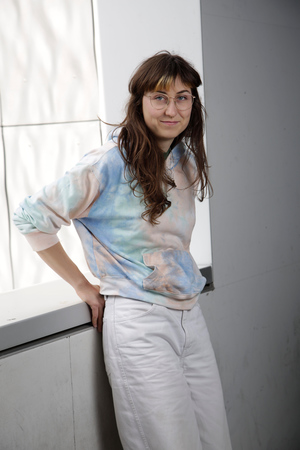
Natania Prezant (*1993) pursued her first interdisciplinary degree in International Relations, specializing in Economics, which has very much informed her artistic practice and methodologies. She obtained a Master degree in Theatre - Dramaturgy at ZHdK in 2021.
She likes to pick out methods from one discipline, and reinsert them into another, observing the resulting shifts in perspective and habit. These past few years she has been specializing as a dramaturg, remaining in the ambiguous zone between theory and practice, piece and audience, from whence she focuses on designing and accompanying group processes, mediation and accessibility, on attention and sensation. Much of her practice is influenced by a strong, early interest in bodies and dance.
Many of her working and communication habits are informed by years of leading and teaching youth groups and theater workshops. Today she works primarily at the intersection of music and theater, as well as programming for a multidisciplinary festival, f.ex. with the ‘raucous babies’ (ZH, raucous-babies.ch), the ‘collectif barbare’ (AG, collectif-barbare.ch), or at ‘Le Castrum’ (VD, le-castrum.ch).
In the context of her Master Series Residency at the Emotion Regulation Group, Faculty of Medicine, University of Geneva, Prezant pursues her artistic research into the topics of adult AD(H)D and the link between bodily sensation and attention, as well as the structuring of attention in contemporary dramaturgical practice.
***
Master Series Residencies 2023
Nadine Schütz at SwissFungi and the Ecological Genetics Group, WSL
Marcel Rickli at the Ecosystems and Landscape Evolution Group, ETH Zürich
***
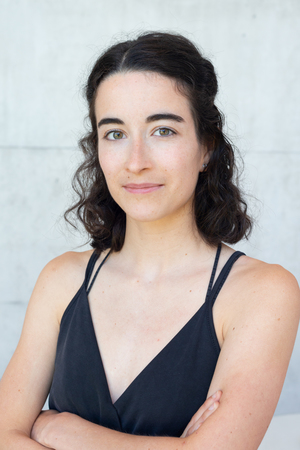
***
Nadine Schütz, student of the MA Curatorial Studies at ZHdK, successfully applied for the 2023 Master Series Residency at SwissFungi and the Ecological Genetics Group, WSL. Starting in September 2023, she will interact and exchange with researchers on the diversity of fungi in Switzerland for a 3-months period among others and develop an artistic project, that will lead into her Master thesis in 2024.
Nadine Schütz (*1997) was born in Linz and currently lives in Zurich. By combining different disciplines, such as visual communication, interaction design and scenography, she designs interfaces and installations that are usually set in an exhibition context.
The starting point of her works are often marginal zones of scientific research and scientific grey zones that leave room for interpretation and
speculation.
She has a degree in graphic design and photography (University of Art and Design Linz, 2020) and is currently studying for a Master's degree in Curatorial Studies at the Zurich University of the Arts.
***
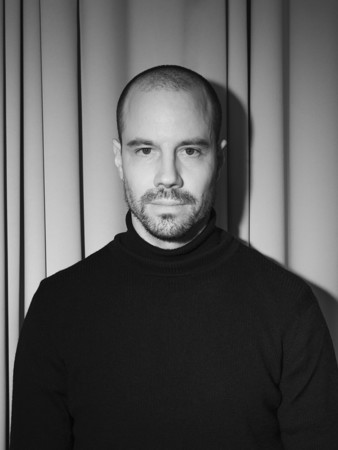
***
Marcel Rickli, student of the MA Transdisciplinary Studies, will join the researchers of the Ecosystems and Landscape Evolution Group, ETH Zürich for a 3-months residency as part of the Master Series 2023. His interest lies in scientific research about the effects of climate change on biodiversity and how technology shapes the respective discourse.
Since 2011, Marcel Rickli (*1986) has been exploring the ways in which we are fundamentally changing our planet in an ongoing series of photographic field studies. The energy and resource requirements of humanity and their resulting environmental impacts, which are often severe and irreversible, form the leitmotif of his work.
In previous works, Marcel Rickli trained his camera on ore mining in Sweden, which results in massive land subsidence and has even caused the resettlement of an entire city (“Kiruna / 2015”), as well as on brown coal mining in Germany, to which entire landscapes are sacrificied (“Lausitzer Braunkohlerevier / 2015”).
New hopes in the fight against climate collapse have also caught his attention: pictures of the world’s largest wind farm in the Gobi Desert and a Chinese solar power plant that couldn’t be more futuristic illustrate what the energy revolution could look like (“Ambivalent / 2017 – 18”). Rickli’s work impressively captures an epoch in which humankind has become the most important influencing factor on our planet’s biological, geological and atmospheric processes: the Anthropocene.
***
Master Series Residency 2022
David Simon at the Swiss Plasma Center, EPFL
***
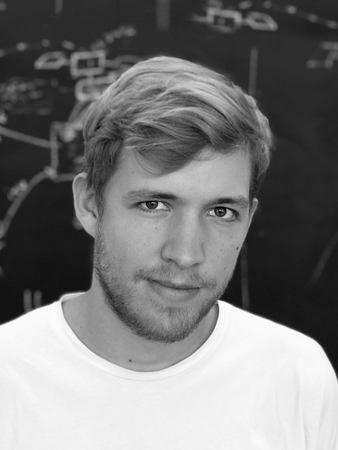
David Simon, artist and student of the Master Transdisciplinary Studies of ZHdK, will exchange, research and develop artistic work in collaboration with scientists of the Swiss Plasma Center SPC, which is part of the EPFL in Lausanne. His project is interested in the aesthetic properties of fusion energy, thereby asking by which technological means it could be explored and whether it could even be used as an artistic medium itself.
David Simon (*1991) lives and works in Zurich, Switzerland. His artistic inquiries often circle around metaphors and associations, both of which have been an ongoing fields of interest for him. In his recent work he has been exploring the aesthetic and symbolic qualities of various natural phenomena. Besides his individual practice, David Simon is also part of the artist duo Simon/Odermatt.
The Master Series Residency is a collaboration between the artists-in-labs program and the Master Transdisciplinary Studies of ZHdK.
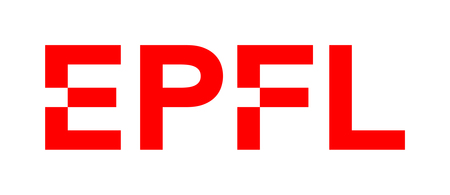
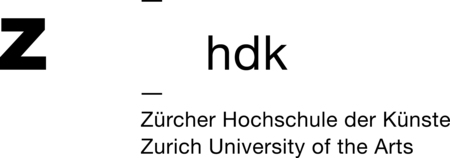
***
artists-in-labs fellow
George Mahashe
***
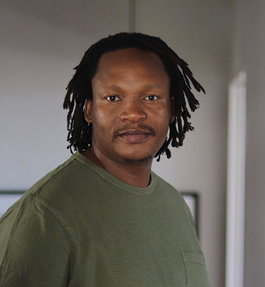
South African artist and anthropologist George Mahashe has been a fellow of the artists-in-labs program since spring 2022 - together with the artists-in-labs team he is currently developing concepts for deeper collaboration at the interface of art and science between Switzerland and South Africa. Mahashe will also offer a workshop as a guest lecturer at the Master Transdisciplinary Studies in January 2023.
George Mahashe earned a PhD from the Michaelis School of Fine Arts in Cape Town, where he also holds a lectureship in New Media. In 2018 he conducted research on astrophysics at the University of Geneva as part of an artists-in-labs residency, this project was further developed for the exhibition "Interfacing New Heavens" (June 2021 - February 2022 at the Javett Art Centre, Pretoria).
artists-in-labs KAUST-Swiss Residency Exchange 2022
***
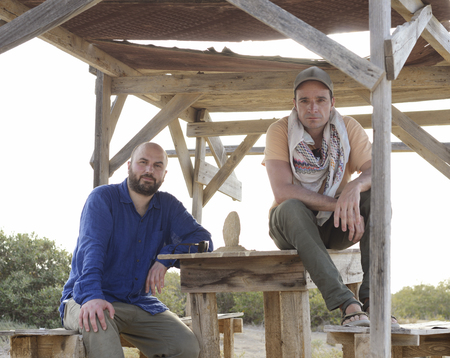
Swiss artists Taiyo Onorato & Nico Krebs have started their 3-months artists-in-labs residency at the KAUST Red Sea Research Center.
Among other research interests, Taiyo & Nico aim "to peek into the future through the perspective of interspecies relations and how these might define the time to come. We hope to nurture these visions with our artistic research at KAUST by exploring the human role in resuscitating, modifying and sculpting (marine) ecosystems."
The artists have been working together as a duo since they first met at Zurich University of the Arts in 2003. Their diverse projects are evolving around photography, also involving sculpture, installation, film and book publishing. Their work has been shown internationally in many galleries and cultural institutions, among them solo shows at MoMA PS1 NYC, Kunsthalle Mainz, Foam Amsterdam, Fotomuseum Winterthur , Aargauer Kunsthaus, CAC Cincinnati, Swiss Institute NY, LeBal Paris and KINDL Centre for Contemporary Art Berlin.
The artists-in-labs KAUST-Swiss Residency Exchange is supported by the Swiss Arts Council Pro Helvetia and KAUST.
Image: Taiyo & Nico
***
RESIDENCIES 2021
- Lucie Strecker at the IBME, URPP Dynamics of Healthy Aging (both UZH) and Memory Clinic (Stadtspital Waid), Zürich
- Priscille Jotzu at the IBME, URPP Dynamics of Healthy Aging (both UZH) and Memory Clinic (Stadtspital Waid), Zürich
- Julian Charrière at the Red Sea Research Center, KAUST, Thuwal
- Hannah Drill at the Dalle Molle Institute for Artificial Intelligence IDSIA, SUPSI, Lugano
The Persistence of Memory - Dementia and Digital Aid Tools for Decision-Making
Designer, artist and researcher Priscille Jotzu and Lucie Strecker, artist and researcher, started their artists-in-labs residencies in the framework of "The Persistence of Memory - Dementia and Digital Aid Tools" in spring 2021. They will exchange with scientists of the Institute for Biomedical Ethics and History of Medicine IBME and the URPP Dynamics of Healthy Aging (both University of Zurich) as well as with doctors of the Memory Clinic (Stadtspital Waid), affected persons and their relatives on the topic of dementia and develop artistic project in the upcoming months.
The artists-in-labs residencies "The Persistence of Memory - Dementia and Digital Aid Tools" are supported by the Velux Foundation.
![]()
***
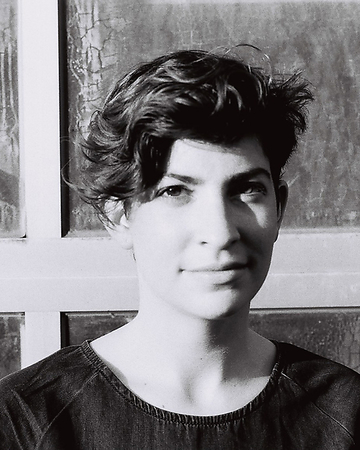
***
French born Priscille Jotzu (*1990) lives and works in Zurich. With a perspective focused on experimentation, conceptual thinking and research into a singularity, she investigates our relation to the daily mundane artefacts, more specifically through the spectrum of the lower senses.
She completed her education within the design department of the Beaux-arts school of Angers, France (BA and MA Object Design) as well as at Zurich University of the Arts (MA Trends&Identity) where she studied strategic and visual design, trends and future forecasting and empirical social research.
Her expertise range from creative consultancy with a focus on scents and materials, creation and production of custom-made objects and set design as well as future research with focus on innovation, prospective objects and design fiction. She works both on commissioned and self-initiated projects in the scope of design and art, producing one-of-a-kind artefacts and speculative objects that aim to stretch the narratives of the real and give space to our imaginaries.
***
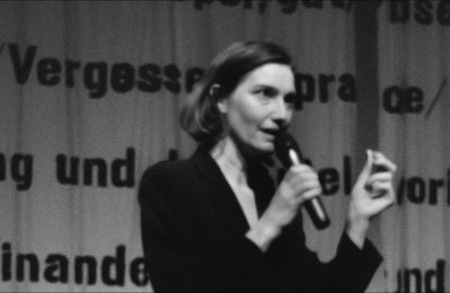
***
Lucie Strecker (* 1977) works as an artist and researcher in the fields of performance art and hybrid art. She lives and works in Vienna. Lucie Strecker is a Fellow of the Berlin University of the Arts and holds a senior postdoc position at the Art & Science department of the University of Applied Arts Vienna, conducting the FWF Elise Richter PEEK project: “The Performative Biofact.”
From 2010 - 2018 she was affiliated to the Art&Science program of the Vienna Medical University, working together with Klaus Spiess. Their performances and installations have been shown inter alia at Tanzquartier Vienna, the House of World Cultures, Berlin, the Bell Center for Art and Technology, Irvine and have been awarded the ZIM Performing Science Prize and a Prix Ars Electronica Honorary Mention.
Both published in Performance Research, The Lancet, Leonardo and with Diaphanes publishers. 2019 she performed with the choreographer and artists Ann Liv Young at Arsenic in Lausanne and at her apartment in NYC and further developed showings for the Vienna Biennale, the Vienna Design Week and the Angewandte Performance Laboratory.
Since 2015 she has been teaching or giving guest lectures at the Berlin University of the Arts, the Medical University Vienna, Victoria University of Wellington, the Inter-University Center for Dance Berlin and the University of California, Los Angeles. 2019- 2020 she was an appointed lecturer at the Free University of Bozen-Bolzano for Experience Design and Performance. Currently she is working as a Senior Artist for the new Performance Laboratory (APL) at the University of Applied Arts Vienna.
***
artists-in-labs KAUST-Swiss Residency Exchange 2021
***
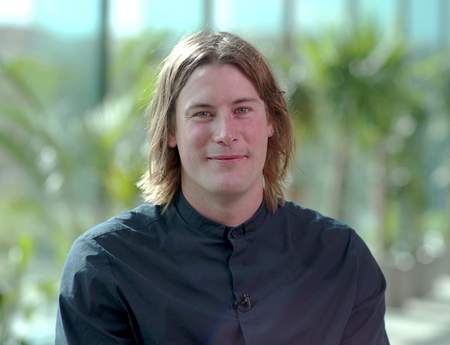
***
For three months in spring 2021, Swiss artist Julian Charrière joined scientists of the Red Sea Research Center at KAUST. Exploring a broad range of research, Julian’s conversations with the scientists revolved around the (bio)diversity and resilience of the Red Sea coral reef and its inhabitants, the aesthetics and functionalities of underwater landscapes – natural and artificial ones – as well as concepts and processes from his practice as an artist.
A special focus was set on field trips to a number of coral reefs, as a tool for scientists and artists to study the maritime environment, for cross-disciplinary exploration and the shift of perspectives. The complexity of the coral reef ecosystem, its economic and cultural implications on coastal societies will provide ground for further and extended explorations – for the scientists as well as for Julian.
The artists-in-labs residencies wouldn’t be possible without the passion and commitment of many people – so our heartfelt thanks go out to Prof. Michael L. Berumen – director of the Red Sea Research Center -, Prof. Francesca Benzoni – head of the Habitat and Benthic Biodiversity Lab - and team, as well as to Sebastian Schmidt-Roach and many more scientists, for welcoming Julian and introducing him to their research.
Special thanks go out to our partners at KAUST Enrichment Office – their optimism and persistence made the residency possible in these difficult times!
The artists-in-labs KAUST-Swiss Residency Exchange 2021 is supported by the Swiss Arts Council Pro Helvetia and KAUST Enrichment Office.


Master Series
***
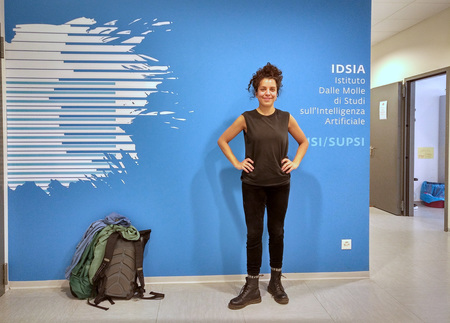
***
Hannah Drill, student of ZHdK’s MA Acting, spent three months – July 2020, January and February 2021 - at IDSIA in Lugano, pursuing her Master Series Residency on Robotics & AI. In exchange with researchers of IDSIA, Hannah explored questions and developments on the interaction of humans and machines in the present and future.
An important part of her explorations into AI & Robotics research was the question of intimacy and how we humans could envision a future living in close relation with machines. Discussing her questions with Alessandro Facchini – Logician -, Alessandro Giusti – Professor of Artificial Intelligence for Autonomous Robotics -, and Luca Gambardella – Professor of Computer Science -, Hannah Drill developed a script for a short film, which was then shot at the Robotics Lab of IDSIA.
Our thanks go out to Luca Gambardella and Andrea Rizolli – director of IDSIA – and all the researchers who welcomed Hannah and got involved in a transdisciplinary exchange with her.
We also want to thank Carlotta Zarattini and Sara Fedele of Impacthub Ticino for providing shelter and Massimiliano Moro for connecting the dots between Zurich and Lugano!
"Master Series" is a new residency format developed by the artists-in-labs program and the Master Transdisciplinary Studies of ZHdK.
***
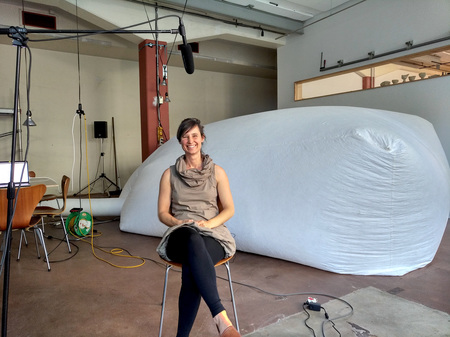
***
Tabea Rothfuchs successfully completed her Master's degree in Transdisciplinary studies in summer 2020. She revised the concept for her Master Series Residency on chronic pain at the Centre for Pain Medicine Nottwil (Swiss Paraplegic Centre) within a very short time after the outbreak of the corona pandemic.
In addition to detailed, virtual interviews, she also conducted a performative quarantine interview session in front of the Swiss Paraplegic Centre. Over the course of four hours, she was sitting in an aerial scenographic object and, using a conference software, held talks with medical staff from the Centre for Pain Medicine and with pain patients who had virtually connected up from different parts of the world.
The master thesis also includes a publication with interview transcripts as well as texts that reflect on the topic of chronic pain and Tabea Rothfuchs' artistic process in the course of the corona crisis.
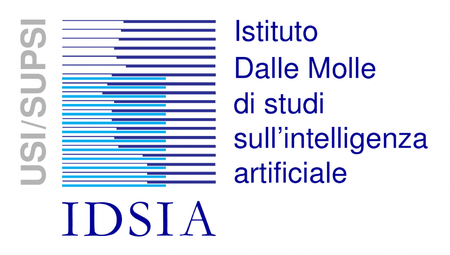
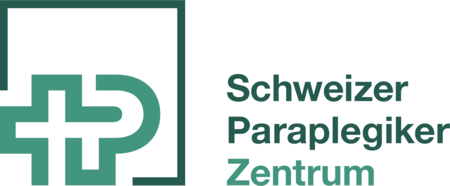
***
Das Unsichtbare erfahrbar machen - Schmerzpatient_innen und ihre Erzählungen
- RESIDENCY PERIOD: March - December 2019 (six months in total, divided in two parts)
Artist Johannes Willi is working and exchanging with scientists of the Institute of Biomedical Ethics and History of Medicine IBME (University of Zurich) and with researchers, doctors and patients of the Centre for Pain Medicine Nottwil (Swiss Paraplegic Centre) for a 6-months period in 2019.
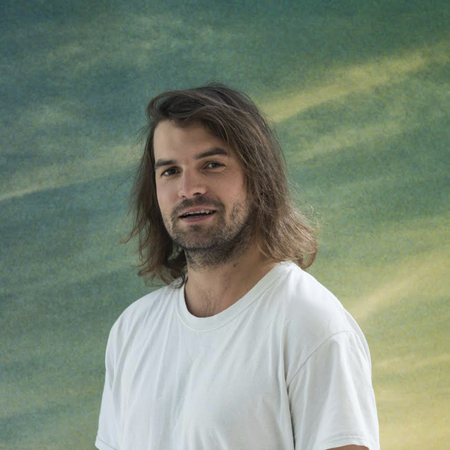
Through his work, Basel based artist Johannes Willi (*1983) explores hidden histories, formal affinities and secret connections between events and institutions. By doing so he hopes to prompt people to reconsider and possibly see things different than before.
For Johannes Willi, the process of researching, studying and finding is just as important as the outcome. He himself reconsiders his practice with each new project: intuitively the physical and methodical approaches are adapted for the specific subject matter.
It comes at no surprise that this artist's still young, yet diverse and far-reaching body of work includes performances, live events, multi-media installations, sculptures and the printed page.
Johannes Willi is co-founder and co-organiser of I Never Read, Art Book Fair Basel. In 2018 he received the Kunstförderpreis Kanton Baselland, in 2019 he takes part in the Swiss Art Awards.
A jury of experts chose Johannes Willi's application for the artists-in-labs residency Das Unsichtbare erfahrbar machen - Schmerzpatient_innen und ihre Erzählungen at the Center for Medical Humanities, Institute of Biomedical Ethics and History of Medicine, University of Zurich and the Centre for Pain Medicine Nottwil, Swiss Paraplegic Centre. The artist will work for 6-months alongside researchers from the humanities and medical sciences, as well as doctors and patients on the topic of chronic pain.
"Das Unsichtbare erfahrbar machen - Schmerzpatient_innen und ihre Erzählungen" is supported by the Stanley Thomas Johnson Stiftung.
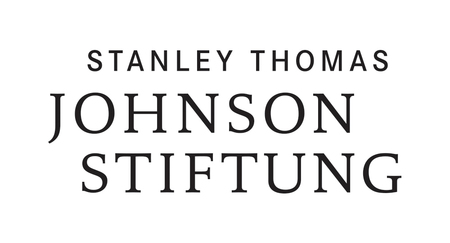

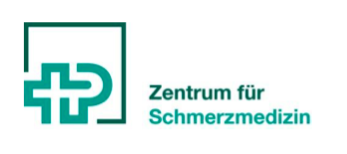
***
artists-in-labs KAUST-Swiss Residency Exchange 2019
- RESIDENCY PERIOD: March - June 2019
Artist Nasser Al Salem (SA) is developing an artistic project for a 3-months period in spring 2019 in close exchange with researchers of the Complex Materials Group, Department of Materials (ETH Zürich).
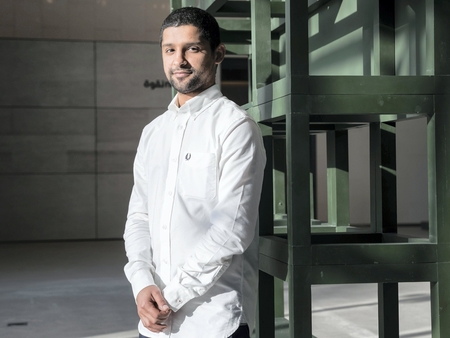
Artist Nasser Al Salem (*1984) lives and works in Jeddah. His artistic work is essentially the Arabic written word, therefore he is first and foremost a calligrapher. His practice pushes the boundaries of this age-old Islamic art by re-inventing it in non-conventional mixed media forms, by using a wide range of tools and materials (such as wood, paper, ink, concrete, glass, lighting technology, silk etc.) and by exploring its conceptual potential.
Since his childhood, he has been asking what is the size of man in relation to outer space, what are the parameters of this relationship and how can humans recognize it. This question still preoccupies him today and throughout his practice he has attempted to address it.
Nasser Al Salem believes that when man turns his attention to understanding this relationship and gains a deeper insight about the nature we all are part of, we might live in a different way.
His exploration of concepts relate to scale, the human and the infinite (or our current perception of the infinite). These concepts aim to reflect on the condition of time, space and the universe as a system that is beyond all religious and profane components.
Nasser Al Salem has been nominated for the Prudential Eye Awards 2015 and was artist-in-residence in New York in 2018 and in London in 2014.
The sixth artist to participate in the artists-in-labs KAUST-Swiss Residency Exchange since 2016, Nasser Al Salem is working and exchanging with researchers of the Complex Materials Group, Department of Materials, ETH Zürich for a 3-months period in spring 2019.
The artists-in-labs KAUST-Swiss Residency Exchange is supported by the King Abdullah University of Science and Technology KAUST / Office of Enrichment Programs and the Swiss Arts Council Pro Helvetia.
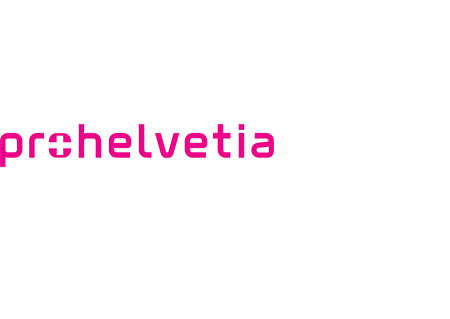

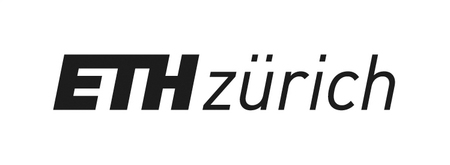

***
artists-in-labs South African-Swiss Residency Exchange 2018
- RESIDENCY PERIOD: September - November 2018
Artists George Mahashe (ZA) and Vanessa Lorenzo (CH) applied succesfully for the artists-in-labs residencies at the Astronomy Department in Versoix/Geneva and the South African Astronomical Observatory SAAO in Cape Town. They will work on their projects for a three-months period from September to November 2018.
***
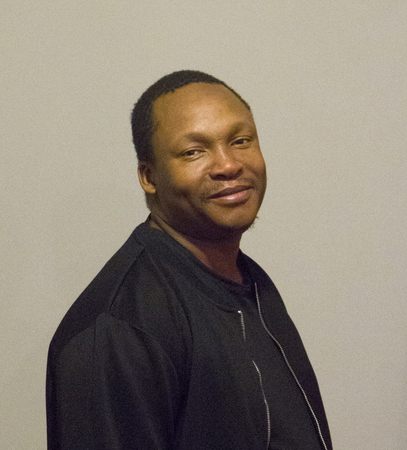
George Mahashe lives and works in Johannesburg. With photography as his focal point, George looks at the imagination manipulation and restoration of history. He is interested in photography's ability to foster dialogue between people, young or old, rural or urban. He argues that people tend to open up and respond when a photograph is presented because we all have an experience of photography, either as the subject, the photographer or as the viewer/audience. It is this quality that fascinates him and compels him to strive towards an understanding of what is it about photography that makes it so. His recent work focusses on the camera obscura as a medium to metaphorically dissociate photography from its traditional cultural context since its invention in 1839. George is particularly interested in how photography is implicated in almost all visual arts practices, and its ability to transgress between the different disciplines of art and the wider humanities. Focusing on the research on exoplanets, George will be working on his artistic project in close collaboration with researchers of the Astronomy Department in Versoix/Geneva.
***
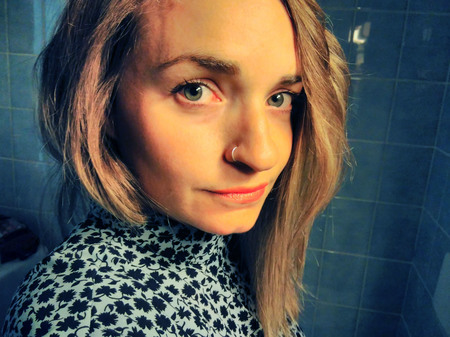
Vanessa Lorenzo lives and works in Lausanne. Her practice is situated at the intersection of Media, Design and Biology. She creates fictional scenarios to contextualize the use of technology and DIY Biology through imagined objects; hybrid ecologies that usually embed the radical poetry of the more-than-human in order to affect the perception of our environment. She researches about the potential of design to influence the social imaginary. Based on that research Vanessa seeks to discover and develop non-anthropocentric landscapes and alternative futures. Also, she nourishes (from) and believes (in) the "middle-ground" (communities of hackers / artists / citizens working in alternative spaces), that, from Vanessa’s point of view, has the power to subvert the dominating role of traditional science and technology spheres. Vanessa believes that this could lead to a more inclusive knowledge production. Vanessa will join the team of the South African Astronomical Observatory SAAO in Cape Town to work on her artistic project.
The artists-in-labs South African-Swiss Residency Exchange 2018 is supported by Pro Helvetia.

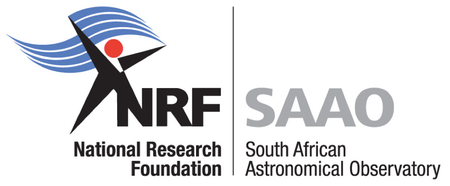
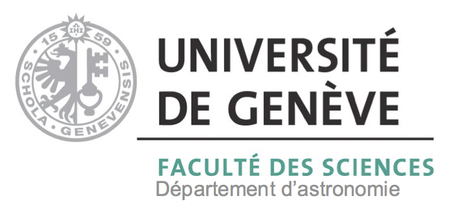
***
artists-in-labs KAUST-Swiss Residency Exchange 2017
Period: September - December 2017
Following the residencies of the Swiss artists Marie Griesmar and Sandra Kühne at KAUST in 2016, ail is happy to announce this year’s selected artists from Saudi Arabia for the KAUST-Swiss Residency Exchange part 2: from September until December 2017, Zahrah Alghamdi and Muhannad Shono will be spending three months working on their art projects and researching on the ecology of alpine and drinking water at Eawag aquatic research in Dübendorf.
****
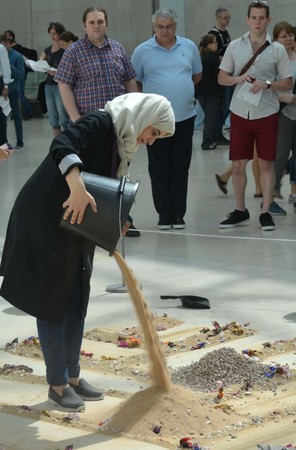
Zahrah Alghamdi: site-specific installation, British Museum, London 2017
Zahrah Alghamdi grew up in south-western Saudi Arabia where she was surrounded by traditional domestic architecture with artistically decorated rooms. These spaces reflected the unique cultural traditions and history. In her art practice, Alghamdi draws on her memories of these spaces and places, their personal associations and their wider cultural significance. By creating an echo of the past, Alghamdi connects memories and history with today’s contemporary situation, thereby seeking to throw light upon the recent drastic change in architecture which is moving away from traditional techniques, materials, and resources. Alghamdi is inspired by memories of places related to her childhood. She draws on an idea of ‘embodied memory’ and experiments with translating memory and the feeling of place into spatial installations. For her installations, she uses found (natural) materials such as earth, sand, stones etc. Gesture and the act of ‘creating’ are central to her practice.
Zahrah Alghamdi lives and works in Jeddah. She holds a PhD in Design and Visual Arts from Coventry University, Britain. She works as an Assistant Professor at the Faculty of Art and Design - King Abdulaziz University in Jeddah.
During her residency, Alghamdi wants to research and create a body of work that reflects the ecology of running waters and explores this theme with a particular emphasis on the poetics and complexities of mental, physical, and emotional place thereby linking her research to the ecological developments in Saudi Arabia. Her residency will take place at the Department of Aquatic Ecology, within the Stream Ecology Group run by Dr. Christopher Robinson.
****
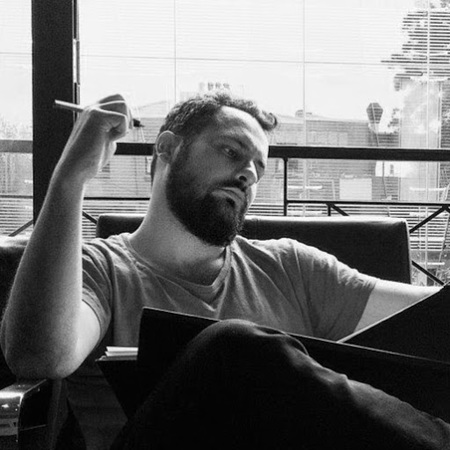
Muhannad Shono
From an early age, Muhannad Shono created comic books in which he incorporated twisted storylines, fictional worlds and drawing. His love for storytelling is still evident in his work today. Shono’s delicate black and white ink drawings and animations depict tiny figures moving across vast plains or them being absorbed by continuous transforming landscapes and floods. As a naturalized Saudi citizen to Syrian parents of Chechen and Karachay-Cherkessian descent, Shono addresses themes of displacement, migration and identity throughout his work. He also looks at environmental and ecological developments and transformations as a result of human interference caused by human migration. Within drawing, Shono seeks to expand the use of ink on paper beyond the traditional forms by incorporating sculptural, animated and acoustic elements. He describes the process and method as “a fluid journey, where materials and methods are given the pace and space they need to best tell and serve the story.”
Shono completed his degree in Architectrure at King Fahd University of Petroleum and Minerals in Dharan, Saudi Arabia. He currently lives and works as an artist in Saudi Arabia and Australia.
During his residency, Shono will be looking at how displacement and migration of people relate to the environmental and ecological impact on drinking water, its availability and viability. His residency will take place at the Department of Environmental Microbiology, within the Drinking Water Microbiology Group run by Dr. Frederik Hammes.
****
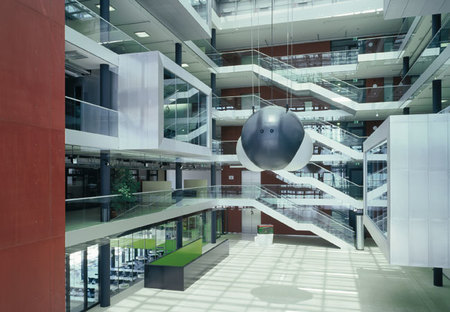
Eawag is part of the ETH Domain, which includes the two universities of ETH Zurich and ETH Lausanne (EPFL), the four independent research institutions of Empa, PSI, WSL and Eawag. Firmly anchored in its home country of Switzerland, but with a global network, Eawag is concerned with concepts and technologies for dealing sustainably with water bodies and with water as a resource. In collaboration with universities, other research institutions, public bodies, industry and non-governmental organisations, Eawag works to harmonise ecological, economic and social interests in respect of water usage.
The KAUST-Swiss Residency Exchange 2017 is a collaboration of the artists-in-labs program, Swiss Federal Institute of Aquatic Science and Technology Eawag, King Abdullah University of Science and Technology KAUST and Pro Helvetia.


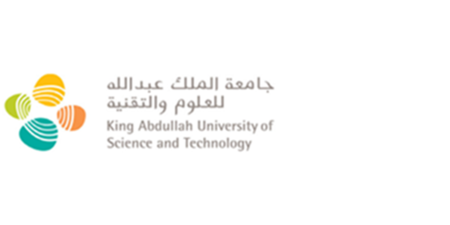

artists-in-labs Master Series Pilot Project 2017
art-science residencies for master students from Zurich Unversity of the Arts
Period: May-August 2017
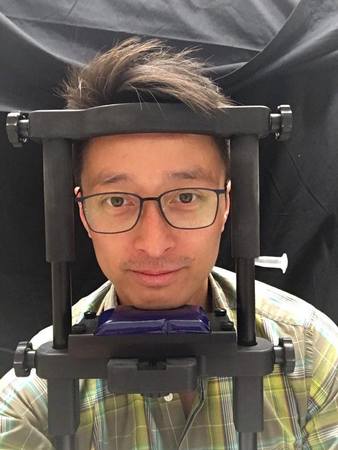
Chi-yung Wong at the lab.
Under the artists-in-labs Master Series Pilot program, the light artist and ZHdK Master Transdisciplinary Studies student Chi-yung Wong worked alongside neuroscientists and psychiatrists from the Translational Neuromodeling Unit (UZH/ETH) and the Sanatorium Kilchberg. During his 2-month residency, which he refers to as “Phase 0 to 1” of his project, Wong immersed in the scientific environment, in order to form a dialogue with neuroscientists at their lab, to learn, investigate and exchange thoughts and mutual interests about their fields of research and practices. Wong was particularly interested in the relationship between anxiety, introspection and mindfulness practices.
Inspired by these “face-to-face exchanges” with the scientists, Wong has advanced to the next phase of his project: the development of a schematic design for an immersive light installation.
During the «Zurich meets Hong Kong» Festival in Hong Kong, October 2017 and in partnership with West Kowloon Cultural District Authority and HKU Space, Irène Hediger and Chi-yung Wong will present and talk about his residency and exchange with neuroscientists and psychiatrists in Zurich.
The ail program will continue to accompany the artist during the further development of his installation.
artists-in-labs KAUST-Swiss Residency Exchange 2016
Period: September–December 2016
Artists Marie Griesmar (CH) and Sandra Kühne (CH) applied succesfully for the artists-in-labs residencies at KAUST. They worked on their respective projects within KAUST research groups from mid September to mid December 2016.
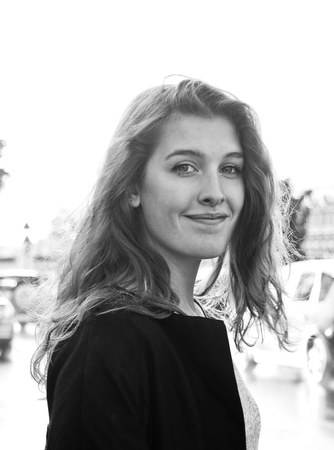
Marie Griesmar
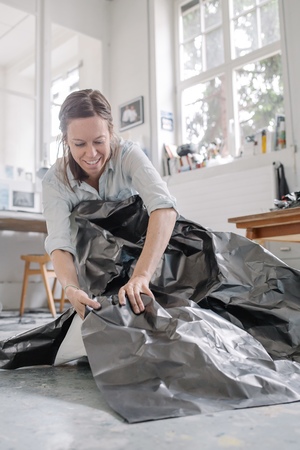
Sandra Kühne, photo: Benedikt Ziegler
Marie Griesmar
is an artist from Lausanne, Switzerland. In her artistic practice she focuses on water and the underwater world: the complexity and poetry of water is a major inspiration for her work. Marie has been diving since the age of nine and is a devoted observer of the marine life since then. Thanks to her diving skills she has come to understand water as a new space of creation.
Her project at KAUST investigated the aesthetics of underwater ecological constructions in the Red Sea. She was part of the research group of the Reef Genomics Lab
at the Red Sea Research Center.
Sandra Kühne is an artist living and working in Zurich, Switzerland. She is inspired by novels, sentences and charts which describe relations and interdependence between body, space and interruption of action. In her drawings, cut outs and installations, which are mainly made from paper, Sandra leads two-dimensionality into three-dimensionality; she describes her artistic practice as a way of doing cartography. Focusing on the Red Sea coral reefs during her artists-in-lab residency at the Integrated Ocean Processes Research Group at the Red Sea Research Center, she looked for ways to show themes of interaction, balance and symbiosis through her art.



artists-in-labs residencies 2015/2016
Claudia Comte (CH) and the Urban Fauna Laboratory collective (RU) were selected by the jury as artists in lab to explore the implication of climate change on ecosystems in Russia and Switzerland.
From July to December 2015 Mark Boulos (CH) explored current research in neuroscience and psychoanalysis.
Claudia Comte at the Institute of Plant and Animal Ecology of the Ural Division IPAE of Russian Academy of Sciences in Ekaterinburg
Urban Fauna Laboratory at the Swiss Federal Institute for Forest, Snow and Landscape Research WSL in Birmensdorf
Mark Boulos at the Laboratory of Cognitive Neuroscience at the Brain Mind Institute at École polytechnique fédérale de Lausanne EPFL
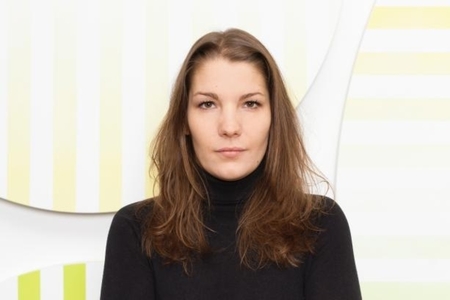
Claudia Comte, photographed by Gunnar Meier
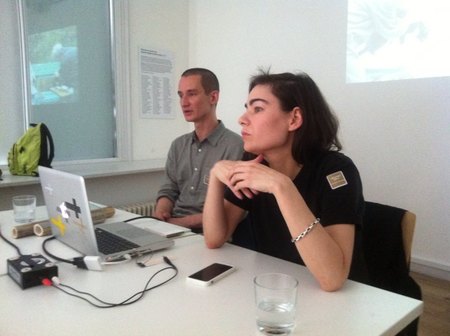
Alexey Buldakov and Anastasia Potemkina from Urban Fauna Lab
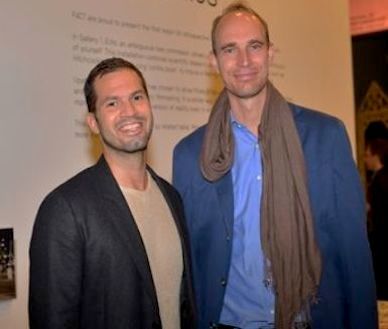
Mark Boulos with neuroscientist Olaf Blanke
Swiss artist Claudia Comte explored the IPAE’s research activities in the reconstruction of past climatic conditions using ultralong tree-ring chronologies, ecological studies of the upper and polar tree-line dynamics in Ekaterinburg. Her artistic investigation evolved around tensions and forces the wood is submitted to in its natural habitat and in her artistic process with the wood as working material. Claudia joined the scientists on their field trips to the Ural region as well as explore their research in the Laboratory of Dendrochronology.
Russian artists collective Urban Fauna Lab from Moscow was represented by Anastasia Potemkina. She explored WSL’s research on invasive pathogens and their effects on the ecosystem. Her artistic work emerged from the collaboration with the scientists and revolved around their main research topics, while further exploring the Urban Fauna Lab’s ongoing investigations into the social status of animals and plants.
The Russian-Swiss Residency Exchange 2015/2016 was supported by the Swiss Arts Council Pro Helvetia "Swiss made in Russia"

From July-December 2015 Swiss-American artist Mark Boulos worked as an artist-in-lab with the Laboratory of Cognitive Neuroscience at the Brain Mind Institute at École polytechnique fédérale de Lausanne EPFL, where he explored the work and research of neuroscientist Olaf Blanke of EPFL and psychiatrist François Ansermet of the University of Geneva.
His artwork explores the visual and audio techniques of Olaf Blanke, and the narrative techniques of François Ansermet, to create new forms of video, cinema, and Virtual Reality inspired by both neuroscience and psychoanalysis.
The National artists-in-labs Residency 2015 was supported by the
Agalma Foundation.

Science
Institutes/Labs
Artificial Intelligence Laboratory / AI Lab University of Zurich
School/University: University of Zurich
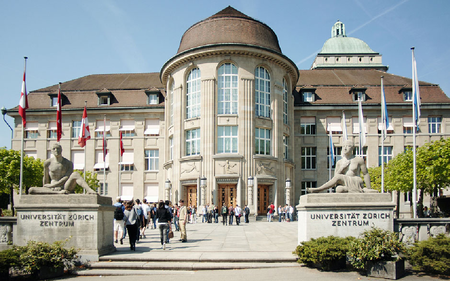
The main goal of the now closed (as of July 2014) Artificial Intelligence Laboratory (AI Lab) was to work out the priciples underlying intelligent behaviour. These principles enable on the one hand to unterstand natural forms of intelligence (humans, animals), and on the other to design and build intelligent systems (computer programs, robots, other artefacts) for research and application purposes.
Swiss artists-in-labs 2010
Artist: Oliver Wolf
Swiss artists-in-labs 2007
Artist: Pablo Ventura
Brain Mind Institute / BMI ETH Lausanne
School/University: Ecole Polytechnique Fédérale de Lausanne
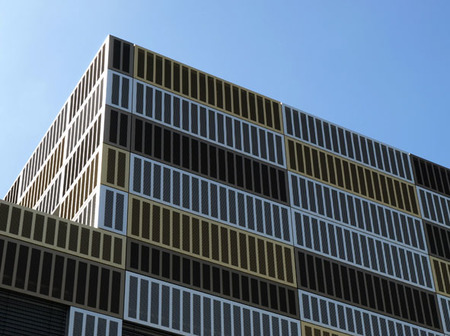
The goal of the Brain Mind Institute (BMI) at the Ecole Polytechnique Fédérale de Lausanne (EPFL) is to understand the fundamental principles of brain function in health and disease, by using and developing unique experimental, theoretical, technological and computational approaches.
Swiss artists-in-labs 2010
Artist: Nicole Ottiger
Swiss artists-in-labs 2009
Artist: Luca Forcucci
Centre for Integrative Genomics / CIG University of Lausanne
School/University: University of Lausanne
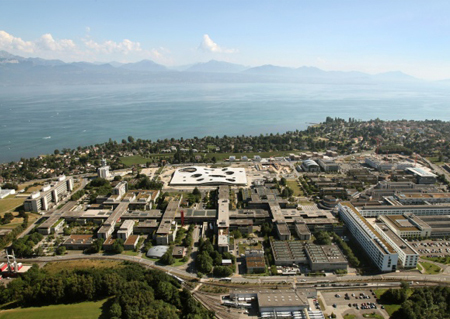
The Center for Integrative Genomics (CIG) is the newest department of the Faculty of Biology and Medicine of the University of Lausanne (UNIL). Its establishment was made possible as a result of the program "Sciences, Vie, Société", a tri-institutional project linking the Universities of Geneva and Lausanne and the Federal Institute of Technology in Lausanne (EPFL), which aimed to develop the life sciences as well as the humanities and social sciences in the Lémanic region.
Swiss artists-in-labs 2010
Artist: Sandra Huber
Swiss artists-in-labs 2008
Artist: Sylvia Hostettler
Chengdu Institute of Biology / CIB Chinese Academy of Sciences Sichuan (China)
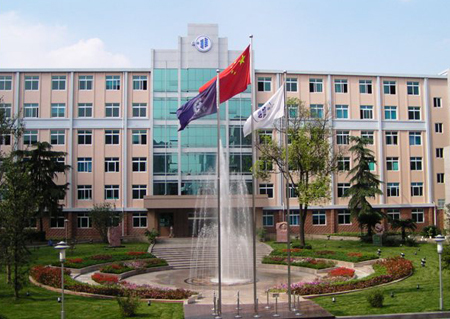
The Chengdu Institute of Biology (CIB), which was founded in 1958, is part of the Chinese Academy of Sciences (CAS), a comprehensive research and development centre in natural science, technological science and high-tech innovation. It aims primarily at sustainable development and utilization and the effective conservation of biological resources.
Sino-Swiss Residency Exchange 2009/2010
Artist: Alexandre Joly
Swiss Center for Electronics and Microtechnology / CSEM CSEM Alpnach
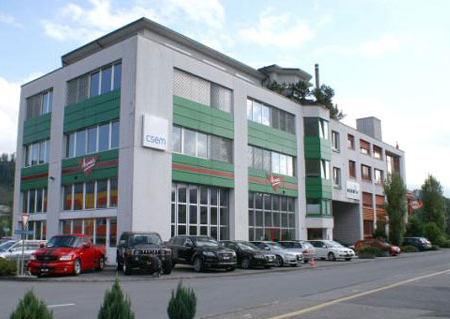
Centre Suisse d’Electronique et de Microtechnique (CSEM), founded in 1984, is a private research and development center specializing in microtechnology, nanotechnology, microelectronics, system engineering and communications technologies.
Swiss artists-in-labs 2007
Artist: Pe Lang
Swiss Federal Institute of Aquatic Science and Technology / EAWAG ETH-Domain Dübendorf
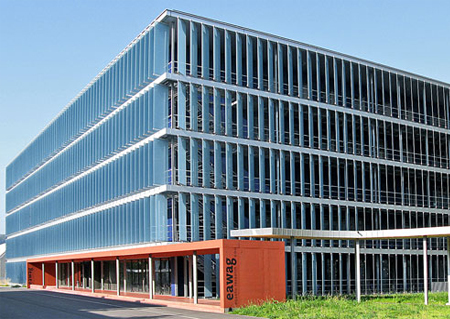
Swiss Federal Institute of Aquatic Science and Technology, (Eawag) is a world-leading aquatic research institute. Its research, which is driven by the needs of society, provides the basis for innovative approaches and technologies in the water sector. Through close collaboration with experts from industry, government and professional associations, Eawag plays an important bridging role between theory and practice, allowing new scientific insights to be rapidly implemented.
Indo-Swiss Residency Exchange 2012/2013
Artist: Neha Thakar
Indo-Swiss Residency Exchange 2011/2012
Artist: Surekha Anil Kumar
Sino/Swiss Residency Exchange 2009/2010
Artist: Aniu (Qing Jun Chen)
Swiss artists-in-labs 2008
Artist: Ping Qiu
Geneva Neuroscience Center and National Center for Affective Sciences / CIN and NCCR University of Geneva
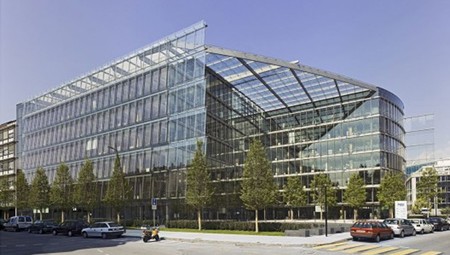
The Geneva Neuroscience Center (CIN) is a multidisciplinarity center that regroups more than 50 research groups affiliated to several departments within Geneva University. Members of the Center conduct cutting-edge research in various areas of Neuroscience, in relation to both health and disease, for human beings (adults and children) as well as for animals.
The National Center of Competence in Research "Affective Sciences – Emotions in Individual Behaviour and Social Processes" (NCCR Affective Sciences) is one of the first research centres worldwide dedicated to the interdisciplinary study of emotions and their effects on human behaviour and society.
Swiss artists-in-labs 2011
Artist: Jeremie Gindre
Institute of Integrative Biology / IBZ ETH Zurich
School/University: Federal Institute of Technology ETH Zurich
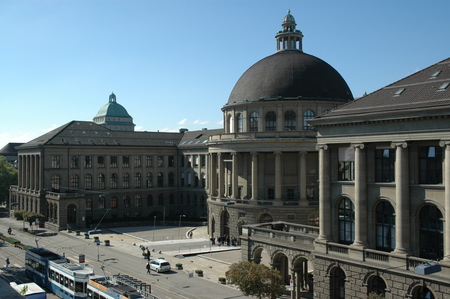
The interactions among organisms, including those between host and parasite, pollinator and plant, or invasive and native species, determine the properties and functions of biological systems. These interactions are best characterized using a systems approach that integrates all aspects of the biology, ecology, and evolutionary history of the interacting organisms. The main research objectives of the Institute of Integrative Biology (IBZ) at the ETH Zurich are to further the understanding of ecological and evolutionary processes that affect interactions between organisms and biological systems and to develop new approaches to address key questions related to infectious diseases.
Swiss artists-in-labs 2007
Artists: Hina&Mätti
Institute of Mountain Hazards and Environment / IMHE Chinese Academy of Sciences Chengdu (China)
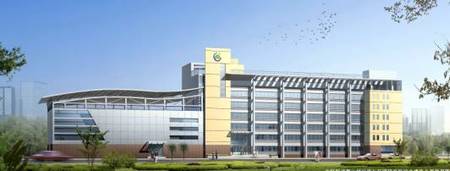
The Institute of Mountain Hazards and Environment (IMHE) is located at the Chinese Academy of Sciences, Chengdu – a state non-profit academic institution – major in the following subjects:
- Formation and mitigation of mountain hazards
- Degradation and reconstruction of mountain environment
- Evaluation, planning and sustainable development of eco-environment
- Remote-sensing, mapping, GIS, and Agroecology.
Sino-Swiss Residency Exchange 2009/2010
Artist: Aline Veillat
Istituto Dalle Molle di Studi sull’Intelligenza Artificiale / IDSIA Università della Svizzera italiana
School/University: Università della Svizzera italiana
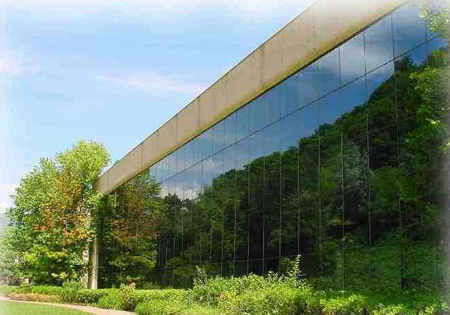
Istituto Dalle Molle di Studi sull’Intelligenza Artificiale (IDSIA) is a non-profit oriented research institute for artificial intelligence, affiliated with both the Faculty of Informatics of the Università della Svizzera Italiana and the Department of Innovative Technologies of the University of Applied Sciences and Arts of Southern Switzerland (SUPSI), the University of Applied Sciences of Southern Switzerland. The researchers focus on machine learning (artificial neural networks, reinforcement learning), optimal universal artificial intelligence and optimal rational agents, operations research, complexity theory, and robotics.
Swiss artists-in-labs 2009
Artist: Alina Mnatsakanian
Native Systems Group / NSG ETH Zurich
School/University: Federal Institute of Technology ETH Zurich
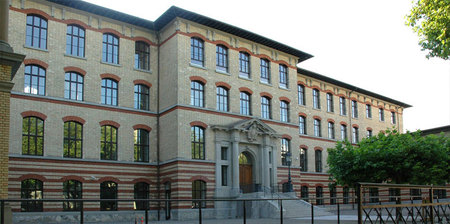
The Mission of the Native Systems Group (NSG) is research and teaching in integrated construction of programming language, compiler and custom systems from the ground up. The group’s research topics are programming languages and runtime systems. The researcher’s goal is the design and implementation of novel languages and system models that optimally support the development of future computer applications. Aiming at uncompromising lean designs and utmost transparence, the researchers construct software systems and frameworks that directly drive commercial or custom hardware.
Swiss artists-in-labs Programm 2011
Artist: Marie-France Bojanowski
Swiss artists-in-labs 2008
Artist: Chandra Sekhar Ramakrishnan
National Centre for Biological Sciences / NCBS Tata Institute of Fundamental Research Bangalore (India)
School/University: Tata Institute of Fundamental Research Bangalore (India)
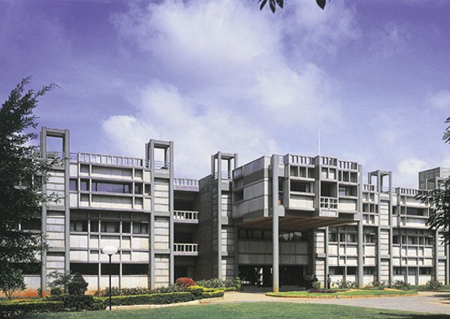
The National Centre for Biological Sciences (NCBS) is a premier research institute. Research at NCBS (a part of the Tata Institute of Fundamental Research) uses experimental and computational approaches to the study of molecules, cells and organisms.
Indo-Swiss Residency Exchange 2012/2013
Artist: Dominique Lämmli
Indo-Swiss Residency Exchange 2011/2012
Artist: Adrien Missika
Paul Scherrer Institut / PSI ETH-Domain
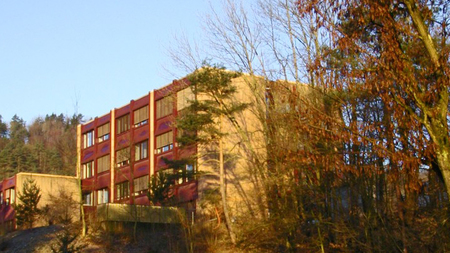
The Paul Scherrer Institute (PSI) is the largest research centre for natural and engineering sciences within Switzerland. They perform world-class research in three main subject areas: Matter and Material; Energy and the Environment; and Human Health. The PSI works on long-term solutions for major challenges facing society, industry and science by conducting fundamental and applied research.
Swiss artists-in-labs 2007
Künstler: Roman Keller
European Council for Nuclear Research / CERN Collaboration with University of Geneva
School/University: University of Geneva
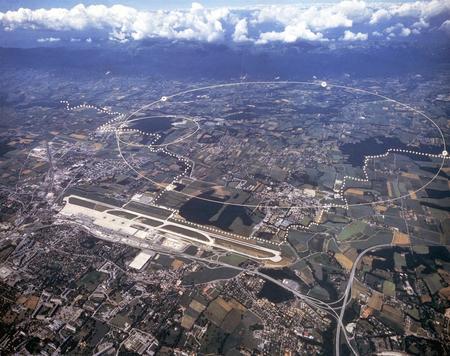
At the Département de physique nucléaire et corpusculaire (DPNC) of the University of Geneva science takes a particular color. Especially because it is enriched by close collaboration with European Council for Nuclear Research (CERN), its neighbour since more than 50 years, which is one of the largest particle physics laboratory in the world.
At CERN physicists and engineers are probing the fundamental structure of the universe. They use the world's largest and most complex scientific instruments to study the basic constituents of matter - the fundamental particles. The particles are made to collide together at close to the speed of light. The process gives the physicists clues about how the particles interact, and provides insights into the fundamental laws of nature.
Swiss artists-in-labs 2009
Artist: Christian Gonzenbach
Swiss Federal Institute for Forest, Snow and Landscape Research / WSL ETH-Domain Birmensdorf/Bellinzona/Davos
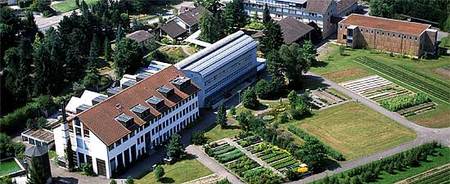
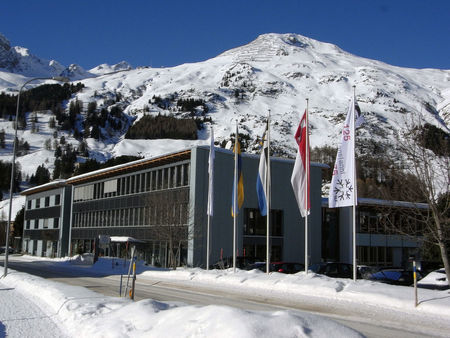
The Swiss Federal Institute for Forest, Snow and Landscape Research (WSL) is concerned with the use, development and protection of natural and urban spaces. The focus of their research is on solving problems which have to do with the responsible use of landscapes and forests and a prudent approach to natural hazards, especially those common in mountainous countries. The WSL occupies a leading position internationally in these research areas.
Swiss artists-in-labs Programm 2011
Artist: Christina della Giustina
WSL Birmensdorf
Swiss artists-in-labs Programm 2010
Artist: Yvonne Weber
Institut für Lawinenforschung SLF, Davos
Sino-Swiss Residency Exchange 2009/2010
Artist: Liao Wenfeng
WSL Birmensdorf
Swiss artists-in-labs 2009
Artist: Claudia Tolusso
WSL Bellinzona
Human Computer Interaction Lab / HCI University of Basel
School/University: University of Basel
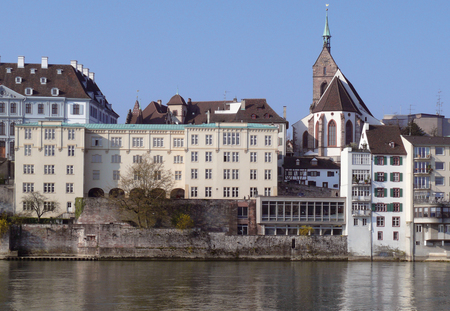
The Faculty of Psychology has the distinction of being the youngest faculty of the University of Basel’s seven faculties. It was founded in 2003, 25 years after the creation of an Institute of Psychology. Its research profile focuses on human development and mental health, social cognition and decision-making, and neuroscience. Human Computer Interaction is a focus at the Center for Cognitive Psychology and Methodology. Human Computer Interaction Science (HCI) investigates processes, dialogues and actions of users who interact with a machine (often a computer) in a given setting
Swiss artists-in-labs Programm 2008
Artist: Monika Codourey
Centre hospitalier universitaire vaudois / CHUV University of Lausanne
School/University: University of Lausanne
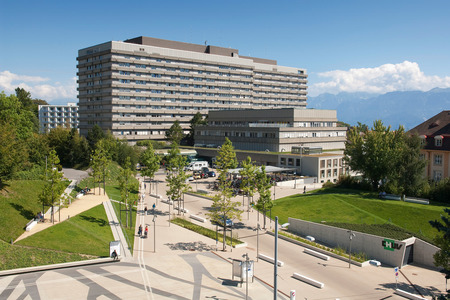
Lausanne University Hospital (CHUV) is one of five university hospitals in Switzerland, together with Geneva, Bern, Basel and Zurich. Healthcare, teaching and research are central to its mission to provide state-of-the-art medicine at the service of the patient. The University Hospital of Lausanne is linked to the Faculty of Biology and Medicine of the University of Lausanne (UNIL).
Swiss artists-in-labs 2011
Artist: Steffen Schmidt
Reef Genomics Lab / RGL King Abdullah University of Science and Technology KAUST Thuwal (Saudi Arabia)
School/University: King Abdullah University of Science and Technology KAUST Thuwal (Saudi Arabia)
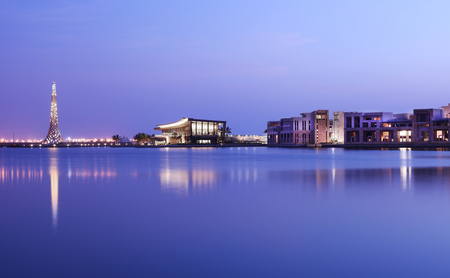
The Reef Genomics Lab at the Red Sea Research Center, King Abdullah University of Science and Technology in Thuwal, Saudi Arabia uses a broad range of tools (genetics, genomics, bioinformatics, ecology, microbiology) to study marine ecosystems, how they are structured, how their members interact, and how they are influenced by (large-scale) physical processes. The researchers are interested in the genes in ecology and the ecology in genes: How do genes shape general, shape the biological, physical, and chemical reality? In the very essence of the word, this is a true eco-systems biology and environmental genomics approach.
Integrated Ocean Processes Research Group / IOP King Abdullah University of Science and Technology KAUST Thuwal (Saudi Arabia)
School/University: King Abdullah University of Science and Technology KAUST Thuwal (Saudi Arabia)
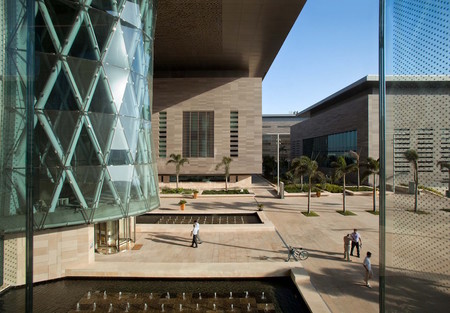
The Integrated Ocean Processes team at the Red Sea Research Center, King Abdullah University of Science and Technology in Thuwal (Saudi Arabia) is drawn from faculty, research scientists, post-doctoral fellows, students and professional staff from across KAUST Divisions, Core Laboratories and University Administrative Services.
Learn more about their vision for an integrated assessment of the Red Sea, the corresponding research program and anticipated impact, and opportunities for collaboration on the Integrated Ocean Processes website.
Laboratory of Dendrochonology Russian Academy of Sciences Ekaterinburg (RU)
School/University: Russian Academy of Sciences Ekaterinburg (RU)
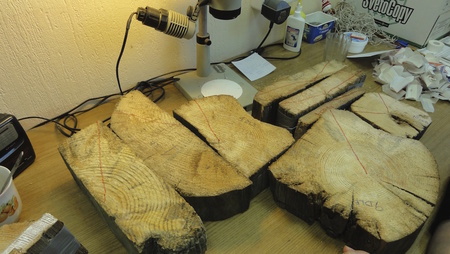
The IPAE's (Russian Academy of Sciences Ekaterinburg) general direction of scientific investigation is the study of the main natural laws of structural organization, functioning, dynamics, evolution and the stability of living systems on a supraorganismal level; regarding population, biocenosis and ecosystems.
The Laboratory of Dendrochronology of IPAE is engaged in the field of forest ecology and dendroclimatology. It collaborates with several international institutes in the world and has profound knowledge in climate-induced dynamics of forest ecosystems in harsh environments. The Laboratory of Dendrochronology has an international reputation for its reconstruction of past climatic conditions using ultralong tree-ring chronologies, ecological studies of the upper and polar tree-line dynamics and forest successions. The research focuse extends to the ecosystems and their functions in the Ural mountains, Yamal Peninsula and West Siberian Plane.

